Scotland is one of the most scenic countries in the world, with its dramatic landscapes offering everything from towering mountains and rugged coastlines to tranquil lochs and charming villages. Whether you're seeking historic landmarks, unspoiled nature, or the chance to embrace Scottish culture, these scenic drives will give you a unique and unforgettable experience.
If you're looking for the perfect road trip, here’s a guide to some of Scotland’s best routes, each showcasing the country’s breathtaking diversity.
Scotland’s most famous road trip, the North Coast 500 (NC500), is a breathtaking journey through the remote Scottish Highlands. Starting in Inverness, the route heads north past Loch Luichart, then through the Black Isle, home to Chanonry Point, a prime dolphin-watching spot.
Further north, Dornoch boasts a beautiful beach and a historic cathedral. The road continues through the rugged landscapes of Caithness and Sutherland, where you'll find John O’Groats, Duncansby Stacks, and Smoo Cave. The west coast is wilder, with towering peaks like Stac Pollaidh and dramatic lochs. The highlight is Bealach na Bà, a hair-raising mountain pass near Applecross.
The NC500 showcases Scotland’s raw beauty, from golden beaches to rugged cliffs, and charming fishing villages to ancient castles. Whether you seek adventure, culture, or stunning scenery, this route is unforgettable.

The Argyll Coastal Route offers a stunning blend of sea lochs, mountains, and historic landmarks. Starting in Tarbet, you’ll follow the shore of Loch Lomond, the largest loch in Scotland. Heading west, visit Inveraray, home to the Duke of Argyll’s castle and a fascinating jail museum.
Further along, the road leads to Loch Fyne, famous for its fresh seafood. The charming town of Oban, known as the Gateway to the Isles, is a must-visit, offering ferry connections to the Inner Hebrides. Stop at Dunstaffnage Castle, a fortress steeped in history.
Continuing north, you'll reach the dramatic landscapes of Glencoe, known for its rugged peaks and dark past. The route ends in Fort William, at the foot of Ben Nevis, the UK’s highest mountain. Perfect for history lovers and outdoor adventurers, the Argyll Coastal Route is one of Scotland’s most scenic road trips.

The Isle of Skye is a magical destination, famous for its rugged landscapes, mystical rock formations, and dramatic coastlines. Starting at the Skye Bridge, drive north to Portree, the island’s colourful capital. From here, explore the Trotternish Peninsula, home to The Old Man of Storr, a towering rock formation, and the Quiraing, a surreal landslip with panoramic views.
Continue west to Dunvegan Castle, the oldest continuously inhabited castle in Scotland, before heading to Neist Point, a dramatic cliff-top lighthouse. Skye’s Fairy Pools offer crystal-clear waterfalls, perfect for a refreshing dip.
Further south, discover the Cuillin Mountains, a paradise for hikers. Visit Talisker Distillery for a taste of Skye’s famous whisky. The scenic beauty of Skye is unparalleled, with landscapes that feel otherworldly.

The Borders Historic Route is a journey through Scotland’s rich history and picturesque countryside. Starting in Carlisle, you’ll cross into Scotland and pass through Gretna Green, famous for runaway weddings. Stop at Lockerbie, a town with historical significance, before continuing to Moffat, known for its woollen mills and charming Victorian architecture.
Further along, visit Traquair House, Scotland’s oldest inhabited house, dating back over 900 years. The town of Peebles offers scenic riverside walks and boutique shops. Stop at Scott’s View, a favourite viewpoint of Sir Walter Scott, overlooking the rolling hills of the Borders.
Finally, the route leads to Edinburgh, Scotland’s stunning capital, where you can explore the Royal Mile, Edinburgh Castle, and Arthur’s Seat. This route is perfect for history enthusiasts and those who appreciate Scotland’s rural beauty, offering a blend of heritage, storytelling, and scenic landscapes.

The Snow Roads Scenic Route winds through the Cairngorms National Park, showcasing some of Scotland’s most spectacular highland landscapes. Starting in Blairgowrie, the route passes through Glenshee, home to Scotland’s largest ski resort. Continue to Braemar, a village famous for the Royal Highland Games, attended by the British Royal Family.
Drive through Corgarff, where you’ll find Corgarff Castle, known for its distinctive star-shaped fortifications. The road climbs into the Lecht, a high-altitude region offering stunning mountain views. Stop at Tomintoul, the highest village in the Highlands, known for its whisky distilleries.
The route ends in Grantown-on-Spey, a gateway to Speyside’s whisky country. Along the way, you’ll pass art installations, scenic lookouts, and wildlife hotspots, making it perfect for photographers and nature lovers. The Snow Roads Scenic Route is a stunning mix of adventure, culture, and Highland charm.

The South West Coastal 300 (SWC300) is a stunning circular route around Scotland’s southwestern coast. Beginning in Dumfries, the road leads through rolling countryside before reaching the coastline near Southerness Lighthouse, one of Scotland’s oldest lighthouses. Head west to Kirkcudbright, an artists’ town known for its vibrant culture and harbour.
Continue along the coast to Portpatrick, a picturesque seaside village with stunning views across to Northern Ireland. The route winds past Stranraer and along the Ayrshire coast, home to Culzean Castle, a grand cliffside fortress with beautiful gardens.
The journey loops back inland, passing through Galloway Forest Park, where you can experience some of the darkest skies in Europe. With secluded beaches, castle ruins, and scenic coastal roads, the SWC300 is a hidden gem among Scotland’s driving routes.

The Fife Coastal Route is a stunning journey along Scotland’s east coast, offering a mix of historic towns, fishing villages, and breathtaking sea views. Starting in Kincardine, the route follows the Firth of Forth, passing Dunfermline, once the capital of Scotland. Visit Aberdour Castle, one of Scotland’s oldest standing castles, before heading to Burntisland Beach, a scenic spot with golden sands.
Continue to Kirkcaldy, known for its long esplanade, and stop in Dysart, a charming harbour town featured in Outlander. Further along, explore the East Neuk of Fife, home to Anstruther, Pittenweem, and Crail, where colourful fishing cottages line the shore. St Andrews, famous for its university and the Old Course, is a must-see.
The journey ends in Newport-on-Tay, with stunning views of Dundee. This route is perfect for coastal explorers, history lovers, and those seeking quaint seaside charm.

The Galloway Tourist Route is a scenic drive through Dumfries and Galloway, one of Scotland’s most underrated regions. Starting in Gretna Green, famous for its historic blacksmith’s shop and runaway weddings, the route heads north to Dumfries, where you can visit the Robert Burns Centre.
Continue to Caerlaverock Castle, a stunning medieval stronghold with a unique triangular design. Further west, pass through Dalbeattie and Castle Douglas, known for its local food scene. Stop at Threave Castle, accessible only by boat, before reaching Newton Stewart, the gateway to Galloway Forest Park, a Dark Sky Park perfect for stargazing.
The road then heads north to Ayr, the birthplace of Robert Burns and home to the stunning Culzean Castle. This route is ideal for those who love history, nature, and peaceful countryside, offering a mix of coastal views, ancient ruins, and dark sky experiences.

To experience these stunning drives at your own pace, why not hire a campervan? Compass Campers offers a range of fully equipped vehicles, from compact vans to larger models for families or groups.
Wake up to misty mornings in the Highlands or enjoy a sunset on the Isle of Skye—all from the comfort of your home on wheels. With flexible travel options, you can make the most of each breathtaking stop along the way.
Book your campervan today and experience Scotland like never before—your adventure awaits!
Scotland’s North East 250 is a spectacular circular road trip that showcases the best of Aberdeenshire and Moray, from dramatic coastlines to the rugged Cairngorms. Often described as Scotland’s “ultimate road trip,” this 250-mile route takes you through historic fishing villages, whisky country, and breathtaking mountain passes.
Whether you're drawn to the region’s rich heritage, outdoor adventures, or simply the thrill of the open road, the North East 250 offers something for every traveller. Hiring a campervan gives you the freedom to explore at your own pace, making this an unforgettable journey through one of Scotland’s most diverse landscapes.
The North East 250 is a scenic circular road trip through Aberdeenshire and Moray, covering 250 miles of coastline, countryside, and mountain landscapes. Often compared to the North Coast 500, this lesser-known route offers a rich mix of history, culture, and nature. It passes through picturesque fishing villages, whisky distilleries, castle ruins, and the Cairngorms National Park.
Along the way, travellers can explore rugged cliffs, golden beaches, and winding mountain roads. Whether you're interested in outdoor activities, Scotland’s heritage, or simply a breathtaking drive, the North East 250 provides an unforgettable experience through some of the country’s most diverse scenery.
Hiring a campervan is the perfect way to explore the North East 250 at your own pace, giving you the flexibility to stop wherever the scenery or attractions catch your eye. Compass Campers offers well-equipped, comfortable campervans, ideal for tackling this stunning route while enjoying the freedom of a home on wheels.

The North East 250 is packed with diverse landscapes, from rugged coastlines to the dramatic peaks of the Cairngorms. This route takes you through historic towns, whisky country, and breathtaking natural scenery. Below, we break down each stage of the journey, highlighting must-see stops along the way.
The journey begins in Aberdeen, known as the “Granite City,” before heading north along the stunning coastline towards Peterhead. This stretch offers a mix of urban culture, historic sites, and dramatic seascapes, making it a fantastic start to the North East 250.
What to see:
From here, continue north to reach Peterhead, Scotland’s largest fishing port.
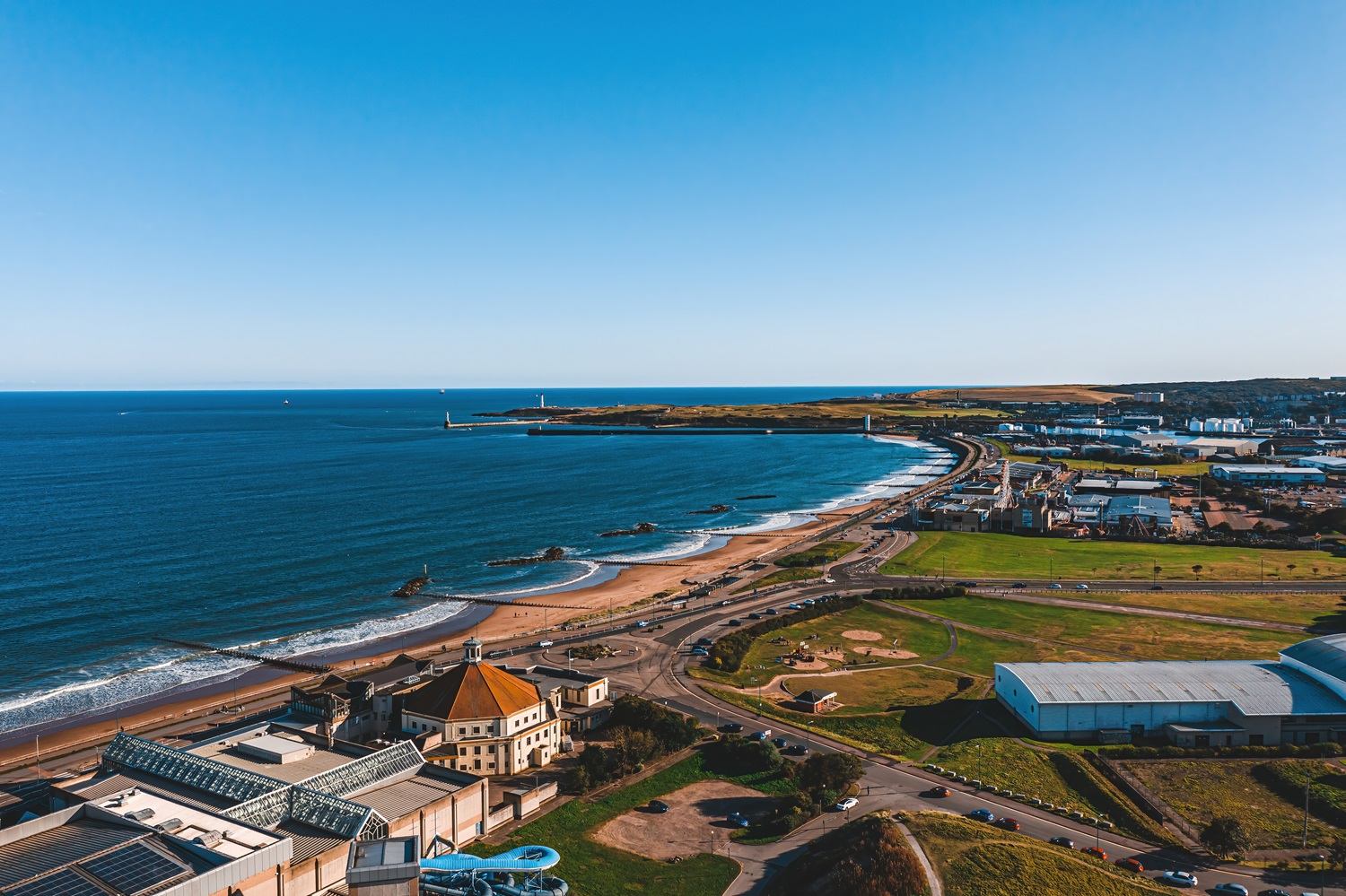
Leaving Peterhead, the route continues along Scotland’s dramatic northeast coastline towards Fraserburgh. This stretch is rich in maritime history, rugged cliffs, and scenic coastal walks. Fraserburgh itself is a bustling fishing town and home to Scotland’s first lighthouse.
What to see:
Fraserburgh marks the end of this stage, where you can enjoy fresh seafood and explore the town’s maritime heritage.
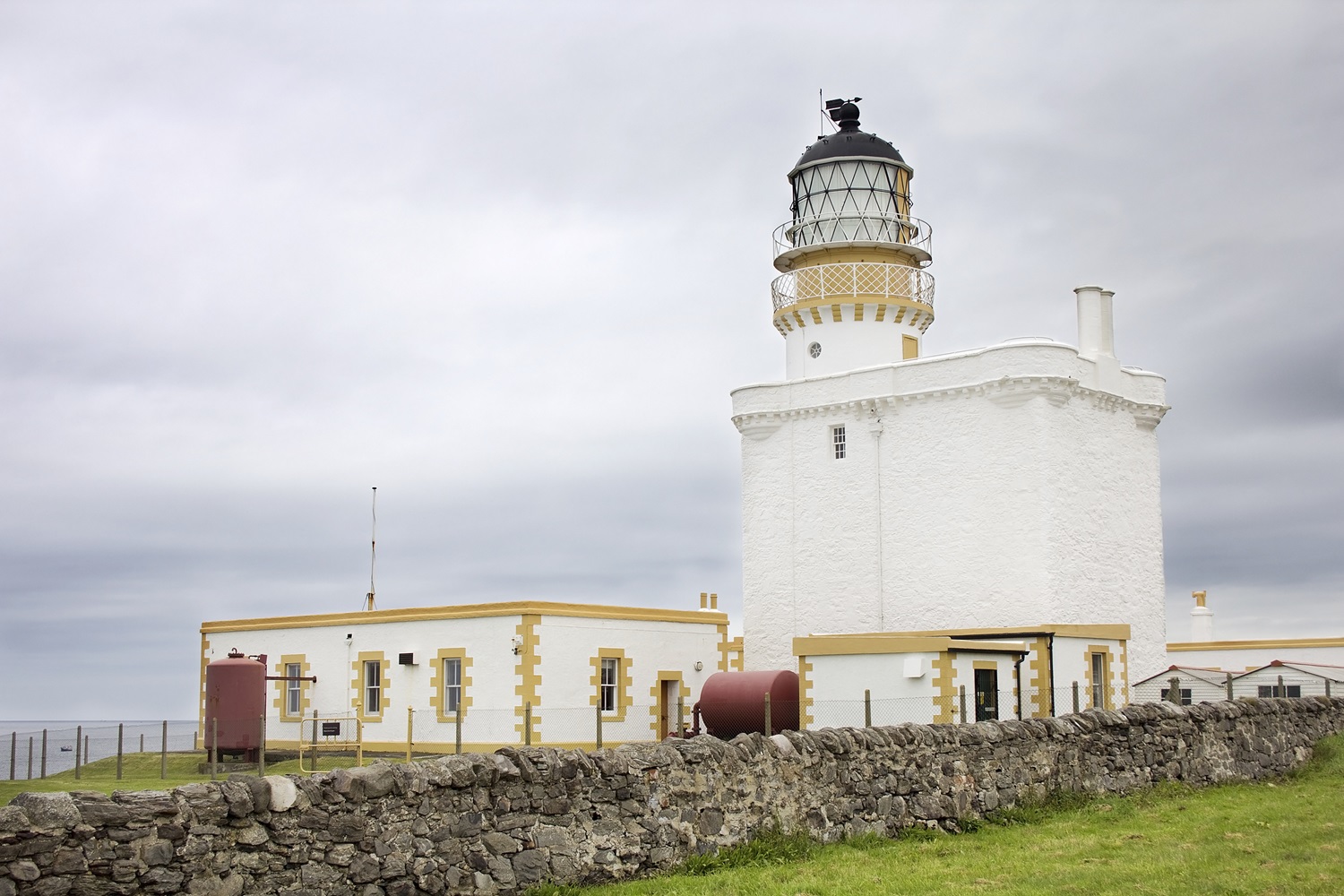
From Fraserburgh, the route winds west along the rugged coastline towards Pennan, a tiny village famed for its whitewashed cottages and cinematic history. This stretch of the journey is all about dramatic cliffs, secluded beaches, and charming fishing villages.
What to see:
Pennan’s tranquil setting and dramatic coastal backdrop make it a highlight of the North East 250.
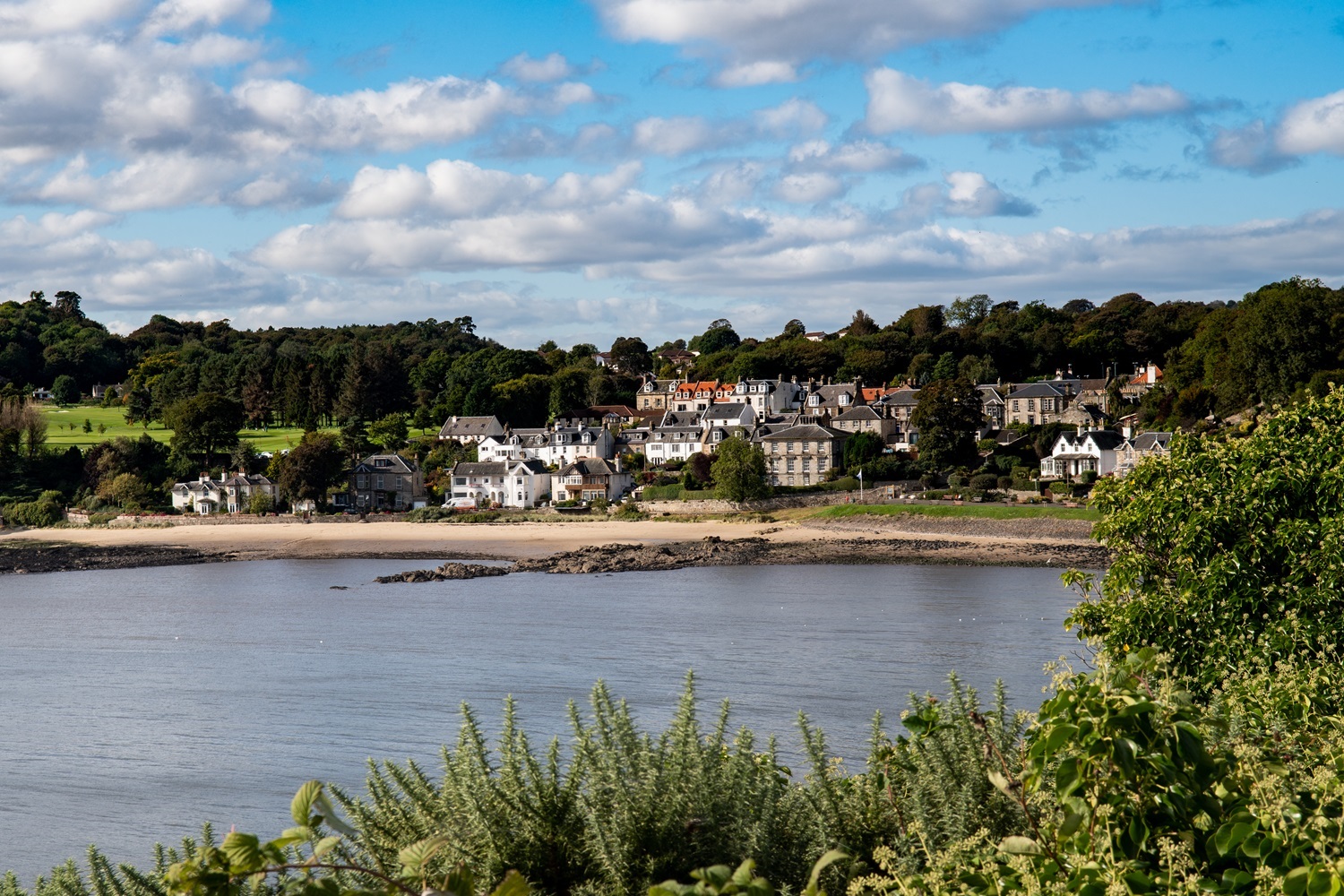
Leaving the charming village of Pennan, the route continues west along the Moray Firth, passing through historic fishing villages and stunning coastal landscapes. This stretch is known for its rugged cliffs, sea arches, and some of the best seafood in Scotland.
What to see:
Cullen marks the end of this stage, offering stunning coastal walks and a warm welcome.
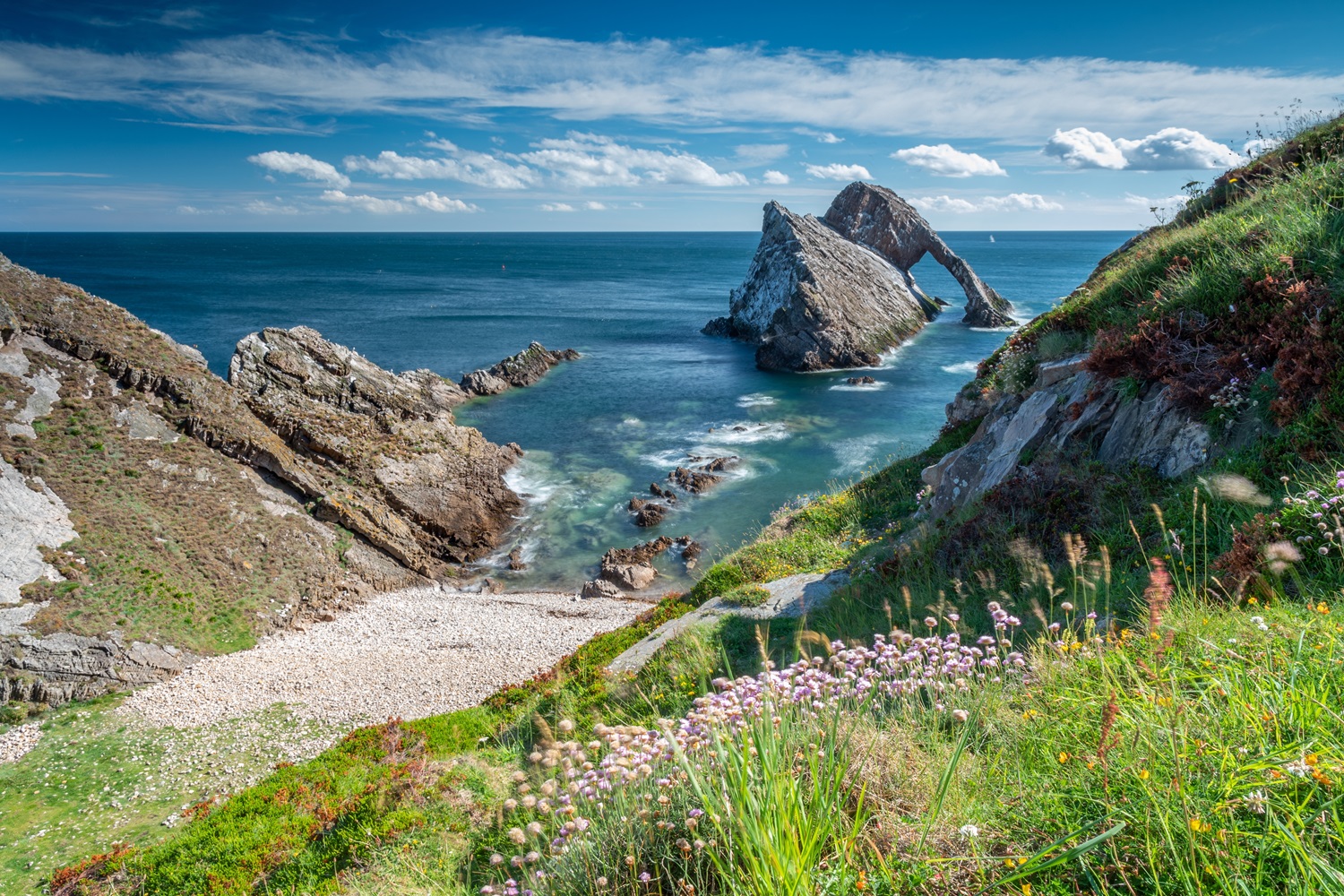
From Cullen, the route moves inland slightly, passing through the Moray coast’s charming towns and whisky country. This stage blends stunning seaside scenery with Scotland’s famous Speyside whisky heritage, making it a perfect mix of nature and culture.
What to see:
Fochabers offers a peaceful stop before the journey continues deeper into whisky country.
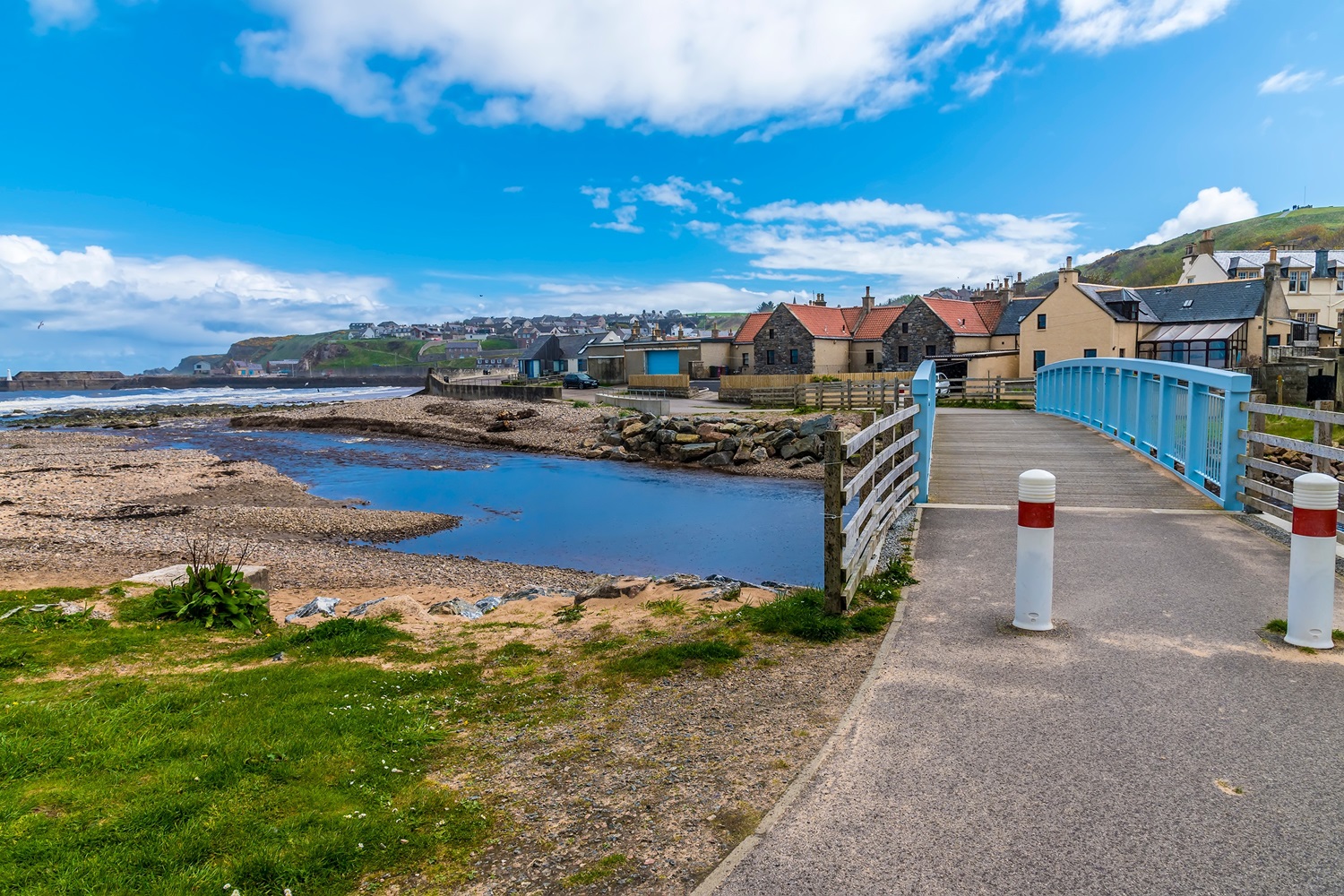
The route from Fochabers to Aberlour takes you further into the heart of Speyside, a region famed for its whisky distilleries and stunning natural beauty. This stage offers a blend of scenic countryside, charming villages, and plenty of opportunities to explore the local whisky culture.
What to see:
Aberlour is a peaceful haven, steeped in whisky heritage and surrounded by natural beauty.
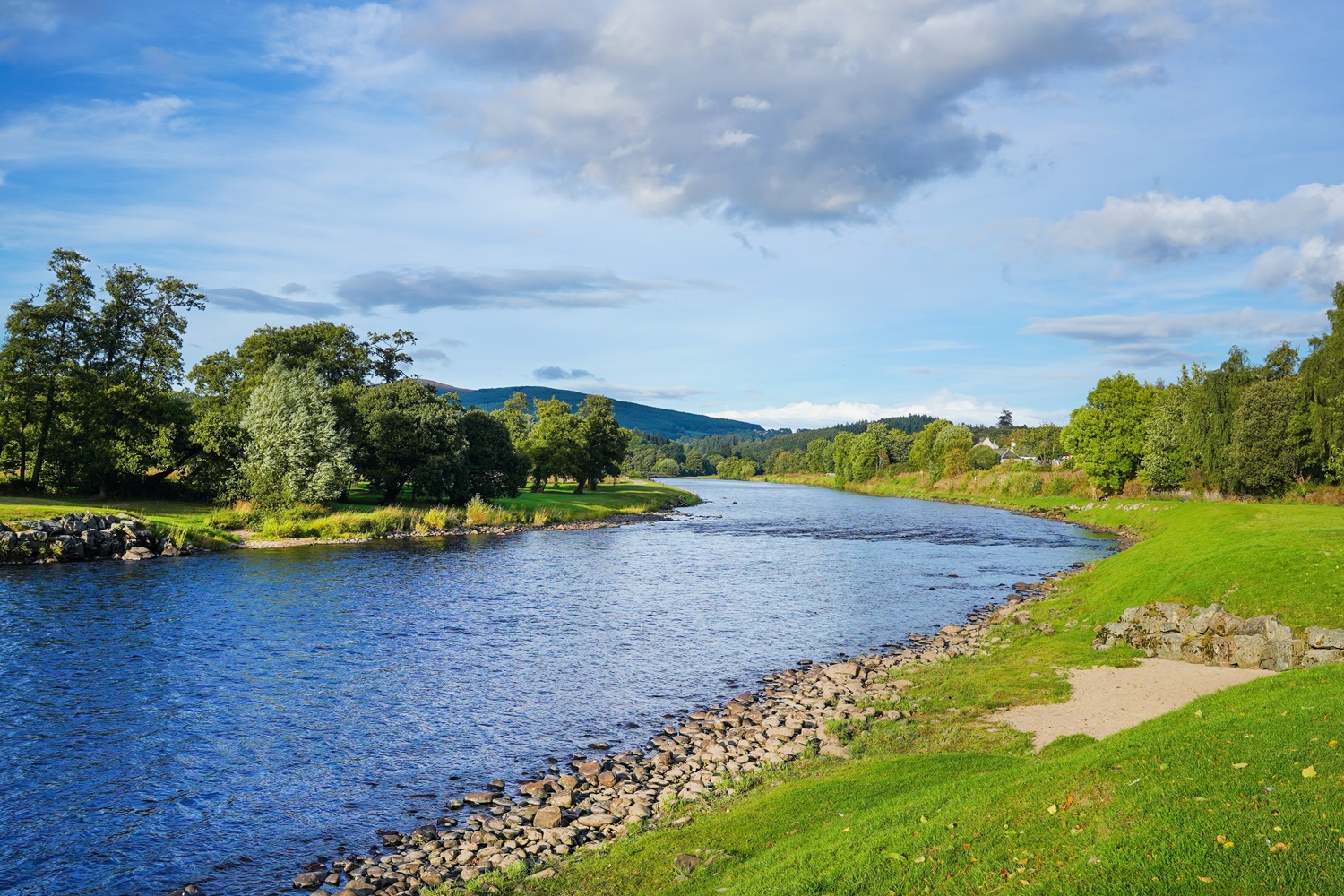
Leaving Aberlour behind, this stage of the North East 250 takes you deeper into the Cairngorms National Park, with towering mountains, ancient forests, and picturesque villages. This stretch offers the opportunity to immerse yourself in Scotland’s wilderness while discovering some of the area’s rich royal history.
What to see:
Ballater offers a relaxing stop with stunning scenery and a royal touch.
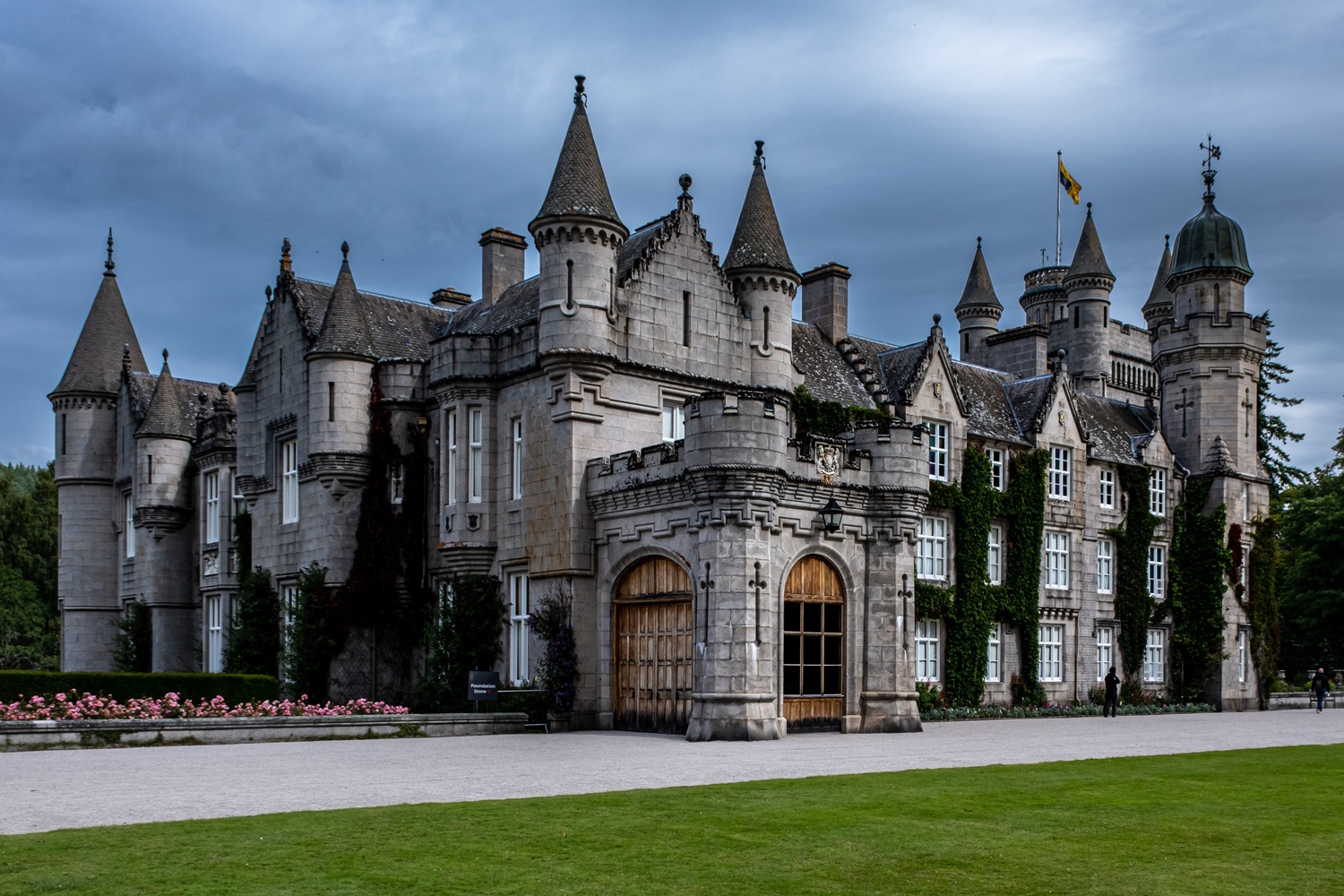
This stage takes you through the heart of the Cairngorms, offering one of the most scenic and adventurous sections of the North East 250. With winding mountain roads, breathtaking views, and an abundance of wildlife, it’s a perfect stage for those seeking outdoor experiences and Highland beauty.
What to see:
This stage is all about the majestic beauty of the Scottish Highlands, making it a highlight of the North East 250.
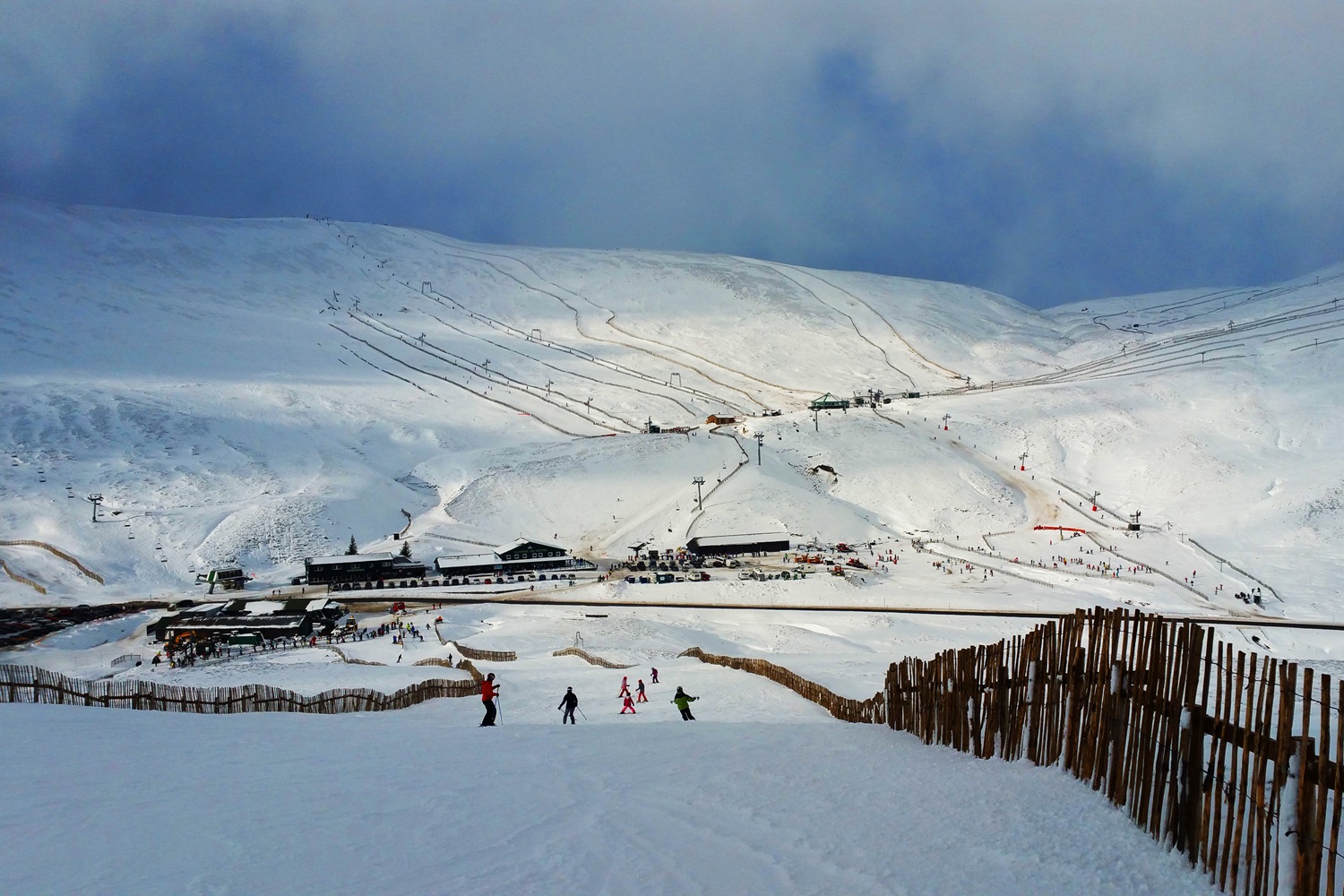
The final stretch of the North East 250 takes you from the rugged landscapes of the Cairngorms towards the rolling countryside of Aberdeenshire, where history and natural beauty meet. This stage is a journey through tranquil glens, historic castles, and sweeping views of the surrounding hills.
What to see:
The journey ends at Drum Castle, marking the perfect conclusion to your North East 250 adventure, filled with history, nature, and unforgettable views.
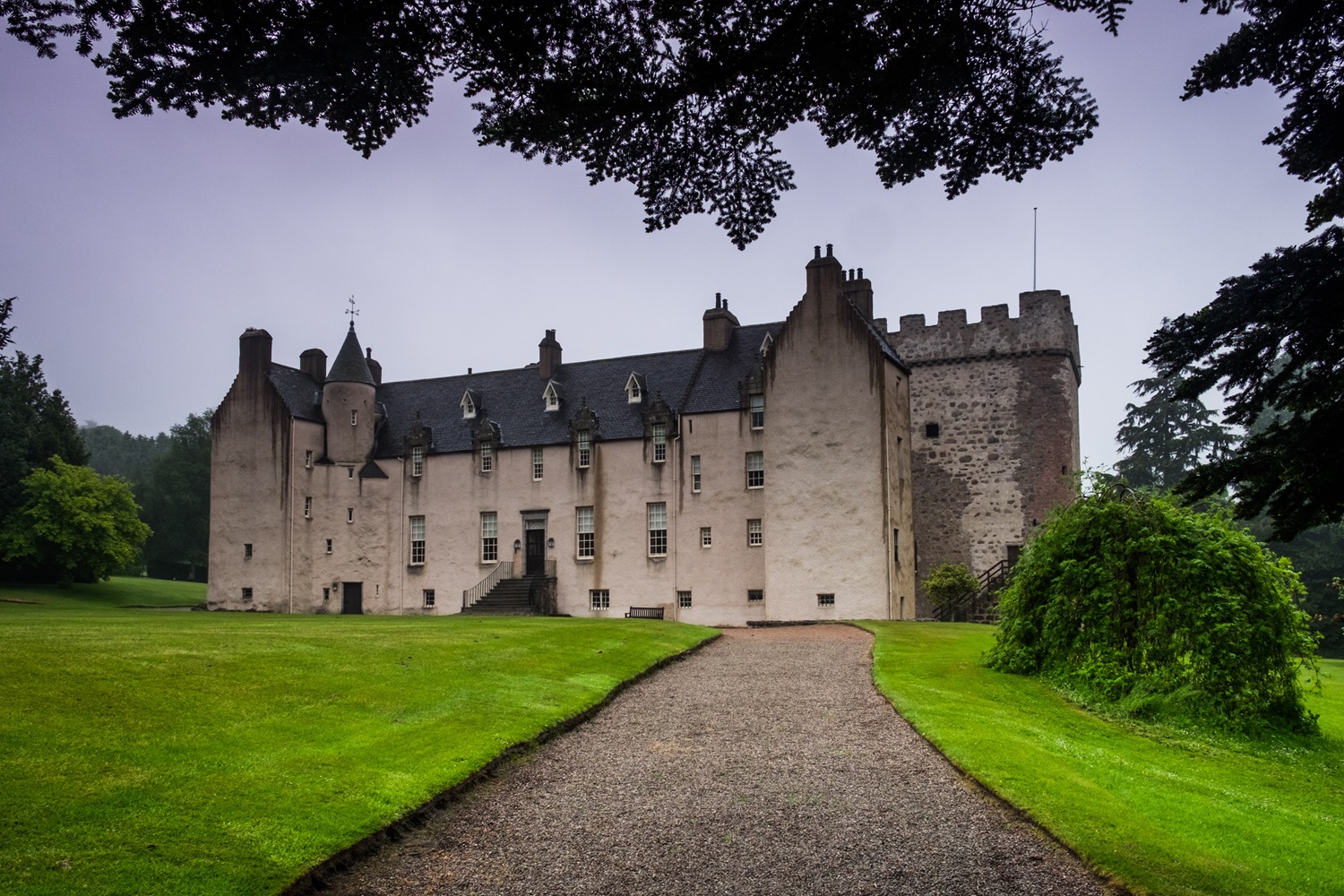
The North East 250 offers an unforgettable road trip experience, blending Scotland's dramatic landscapes, charming villages, and rich history. From the rugged coastline to the majestic Cairngorms, each stage brings its own unique charm and adventure. Whether you're exploring coastal beauty, wildlife, or historic landmarks, the journey is one that will leave you with lasting memories.
Ready to embark on this incredible journey? Hire a campervan from Compass Campers for the ultimate flexibility and comfort. Explore Scotland at your own pace, with everything you need for a seamless adventure. Book your campervan today and start your North East 250 road trip!
There truly is nothing like a motorhome adventure through the breathtaking landscapes, historical sites, and quaint towns of Scotland! From the rugged Highlands to the famous North Coast 500 to Scotland’s tranquil glens and lochs, there’s simply no better way to explore it all than with a motorhome trip.
In this guide, we’ll be looking at all aspects of motorhome travel in Scotland, from picking the best route to understanding local etiquette when camping and on the road. So buckle up and make memories you won't forget!
One of the best ways to discover the stunning landscapes, rich history and hidden gems of Scotland is by motorhome. The beauty of hitting the road in a motorhome is the flexibility — you can map out your own route, stay longer in your favourite places or go off the beaten track.
Providers such as Compass Campers offer you a selection of fully-equipped motorhomes to suit your requirements. No matter if it’s you heading out on a solo journey, travelling as a couple, or wanting the family road trip experience, Compass Campers delivers the essentials to get you movin’ and groovin’ on the road.
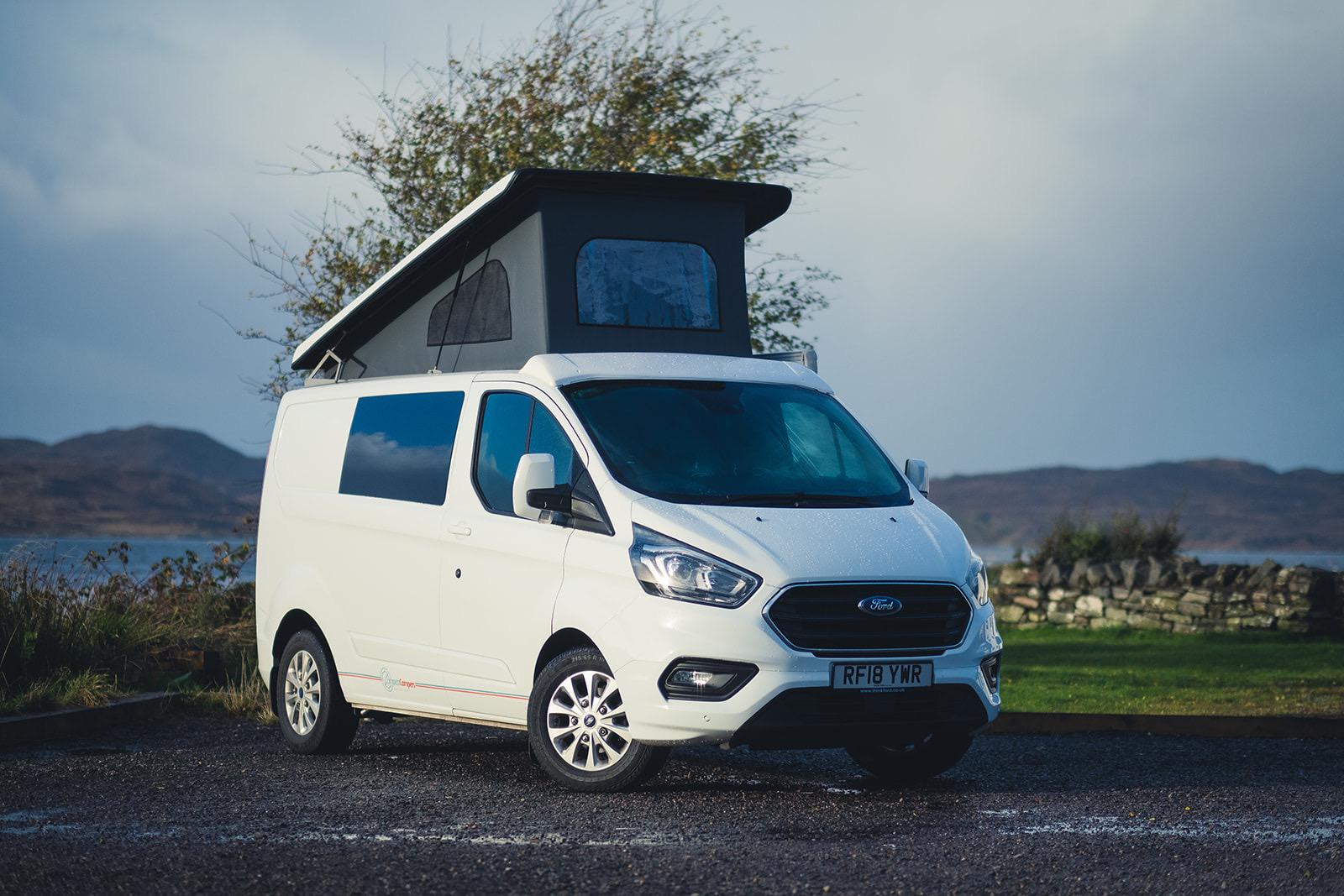
Scotland has some of the most beautiful road trips in the world, making it the dream destination to explore in a motorhome. NC500 stands for North Coast 500, a 516-mile stretch of stunning coastal scenery through Scotland’s Highlands. Beginning in Inverness, it leads you through quaint villages, rugged cliffs and unspoiled beaches (including Durness and the famous Bealach na Bà pass).
If you are looking for a shorter tour, you could hit the Argyll Coastal Route — a 129-mile detour that takes in breathtaking scenery between Tarbet and Fort William. Highlights include Loch Lomond, Inveraray Castle and the lovely town of Oban.
Another favourite is the Isle of Skye, with stunning views and places to see, like the Quiraing, Fairy Pools and Dunvegan Castle. Go via the Skye Bridge or ferry and feel its magic.
The Borders Historic Route from Carlisle to Edinburgh offers rolling hills, historic abbeys and picturesque countryside for a more laid-back road trip.
All routes offer motorhome-friendly options with plenty of scenic stopovers, campsites and attractions. Scotland’s well-kept roads and spectacular scenery mean every trip is as much about the journey as the destination, and these routes are ideal for motorhome explorers.
In Scotland, the Scottish Outdoor Access Code allows for wild camping, making it a unique and adventurous experience so that you can fully take in the natural beauty around you. This permits responsible wild camping on unenclosed land (as long as you’re away from homes and roads), giving you the opportunity to sleep in remote, beautiful spots.
However, the essential guidelines are as follows: leave no trace, camp in small groups, and do not disturb wildlife or the local community. Although wild camping is allowed, there are some heavily-trafficked regions which have permit restrictions to address them, including Loch Lomond. Prepare ahead of time and enjoy Scotland’s wild landscapes in a responsible manner.
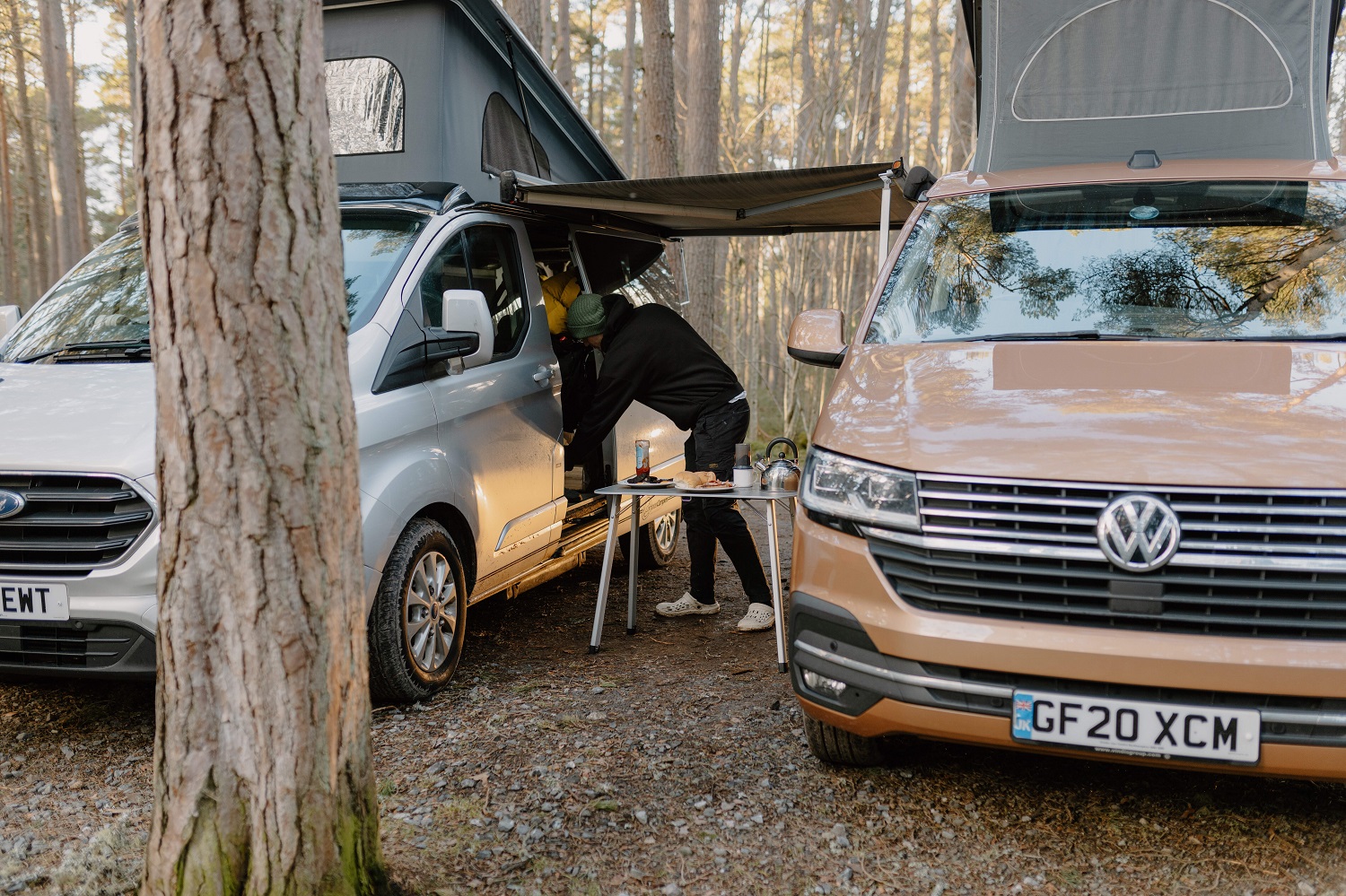
Scotland is a wonderful place to park up with your campervan, but planning out your trip is a must for a smooth sailing trip. For overnight parking/electric stopovers, consider campsites (especially if you're in a group) and motorhome aires which provide essential facilities such as basic amenities with electricity, waste disposal, water, etc. There is such a variety of options available in Scotland, from basic to fully equipped sites; finding a space that fits your requirements shouldn’t be too difficult.
If you’re wandering about during the day, public car parks are usually fine for short-term parking, especially near tourist sights. Always check for signage to be sure motorhomes are allowed, though. Please note that a few regions do impose restrictions or height barricades.
When it comes to wild camping, the Scottish Outdoor Access Code states that you can park responsibly on unenclosed land but should never obstruct roads, driveways or entrances to properties. Note that this doesn’t apply to overnight parking in laybys or cities, which may be restricted.
Apps such as Park4Night or Searchforsites are an invaluable aid to locating campervan-friendly parking and overnight spots. By respecting the rules of the road, parking responsibly, planning ahead, and behaving like an ambassador, you can fully enjoy the incredible landscapes and attractions of Scotland while also ensuring a positive experience for everyone.
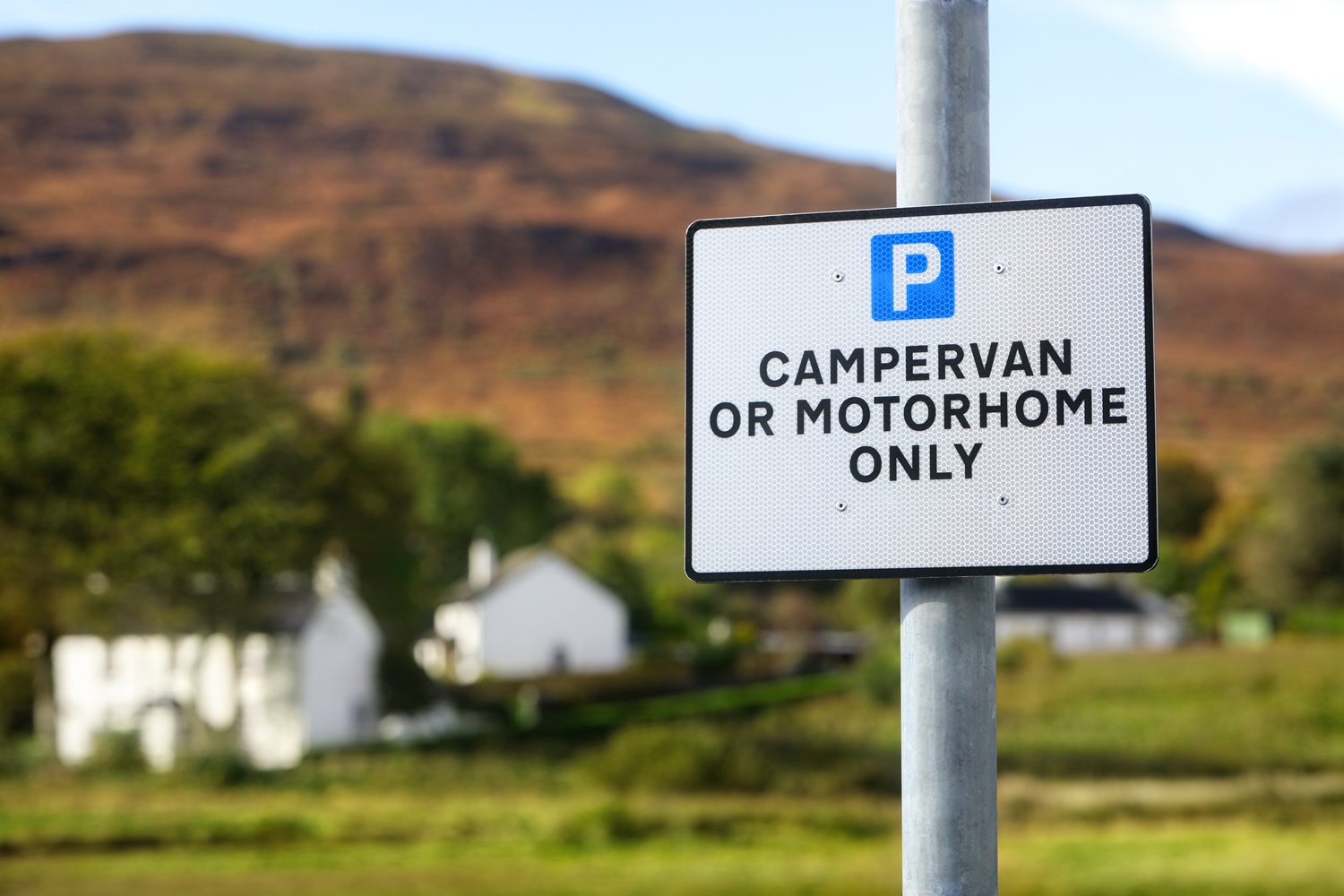
Driving a motorhome in Scotland is one of the best ways to uncover the country, but you need to do it safely and respectfully. Knowing the local driving laws, demonstrating good etiquette and being mindful of narrow roads and variable weather conditions will make for a smooth and pleasant journey.
Follow ‘Leave No Trace’ when hiking Scotland’s beautiful scenery to keep the environment unspoiled for others to enjoy in the future. Dispose of waste properly (including compostable waste), and never leave food scraps that might be dangerous for animals. Stay on designated paths to prevent trampling sensitive ecosystems and disturbing natural habitats.
And if you’re wild camping, leave no trace behind, including putting out campfires completely. Wash with plant-based products and dispose of greywater properly. By respecting nature and reducing your impact, you play your part in preserving Scotland’s natural beauty and setting an example for other visitors.
When you’re travelling through Scotland it’s vital that you show respect to the local communities that help make the country so friendly. Take care in villages, respect the speed limits and try not to make a scene. Park responsibly so as not to block roads, driveways or points of access.
Visit village stores, eat in local cafes and buy from markets, as local businesses need your support. Always ask permission if you’re wild camping near private property, and always leave no trace.
By being polite and respectful to people who live here, you play your part in helping visitors and locals to have the best experience of the amazing scenery and hospitality Scotland has to offer.
Scotland has plenty of motorhome aires and stopover sites across the country. Aires are dedicated parking spaces for motorhomes, they will usually provide facilities for dumping of waste, refilling water and possibly electricity. Not as decked out as full campsites, they are affordable and best for short-term stays.
One popular stopover is the Tarland by Deeside Motorhome Aire, close to Cairngorms National Park. It offers beautiful views, electric hook-ups, and a quiet place for nature enthusiasts.
In the Highlands, Pitlochry Motorhome Stopover is well-situated for local attractions and amenities (shops, restaurants, etc). The Fort Augustus Aire, close to Loch Ness, makes for another cracking choice and a great base to explore the loch and its stunning beauty.
If you prefer the coastal experience, with proximity to the beach and the lovely town, you can try the Stonehaven Aire.
With its mix of history, culture and beautiful architecture, Scotland’s capital is a destination not to be missed. Visit the majestic Edinburgh Castle on top of the Castle Rock, with vast city views. Stroll along the Royal Mile, lined with historical buildings, shops and restaurants. Be sure not to miss the gorgeous Holyrood Palace at the foot of the Royal Mile. If you have some time to spare, hike up Arthur’s Seat for a stunning view of the city and surrounding countryside. Edinburgh is a great combination of museums, art and local spirit, so it should never be missed in your itinerary!
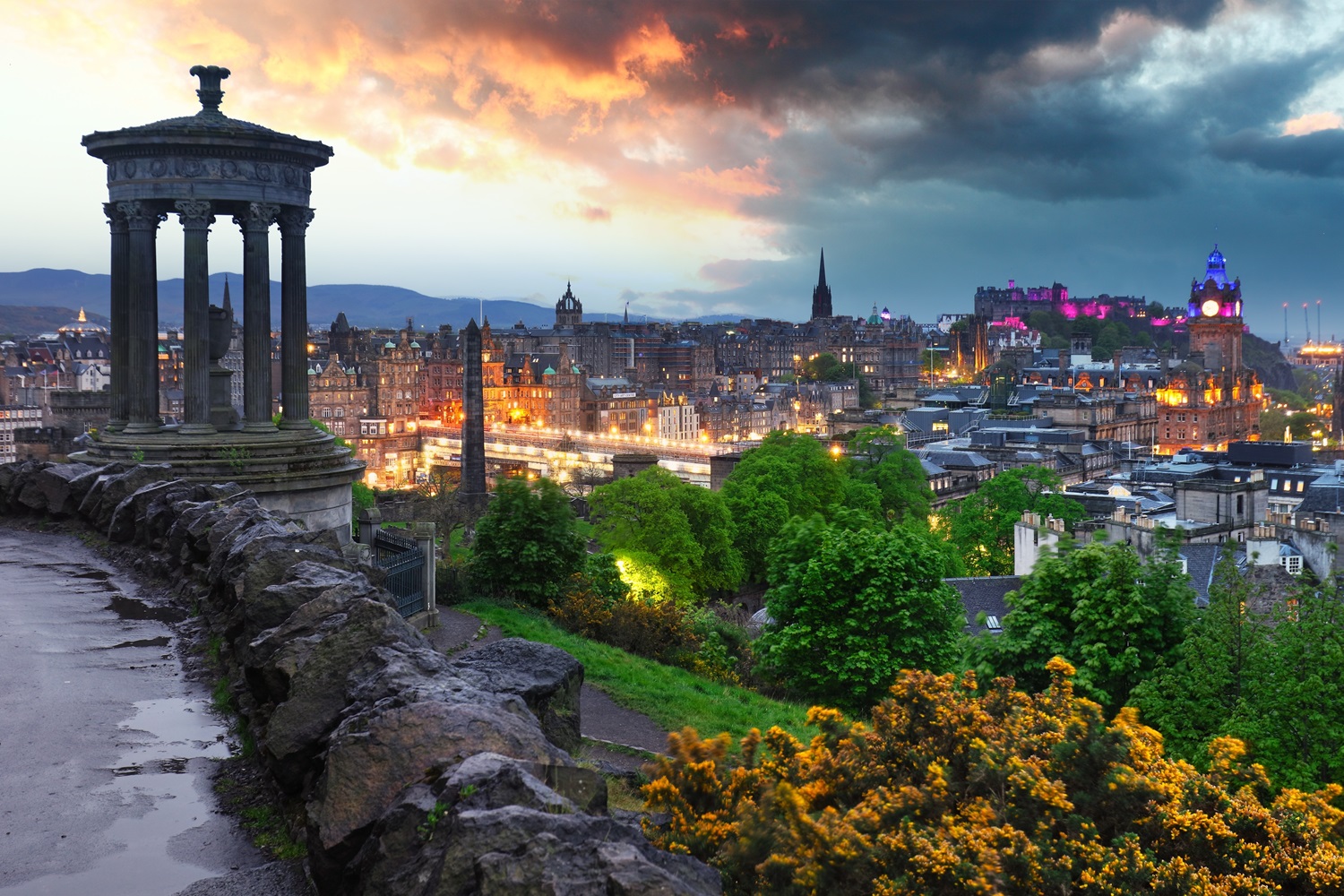
The Isle of Skye is famous for its dramatic scenery — steep cliffs, craggy hills, and idyllic coastal villages. Nature lovers will enjoy a highlight in the Fairy Pools, clear natural pools under the Black Cuillin Mountains. Hike to Old Man of Storr, a peculiar rock formation with panoramic views.
A charming glimpse into Scottish heritage can be found at Dunvegan Castle, the seat of clan MacLeod. Skye is the kind of place that, with its winding roads and breathtaking views at every turn, does the ideal combination of adventure and tranquillity, making it an unmissable road-tripping destination.
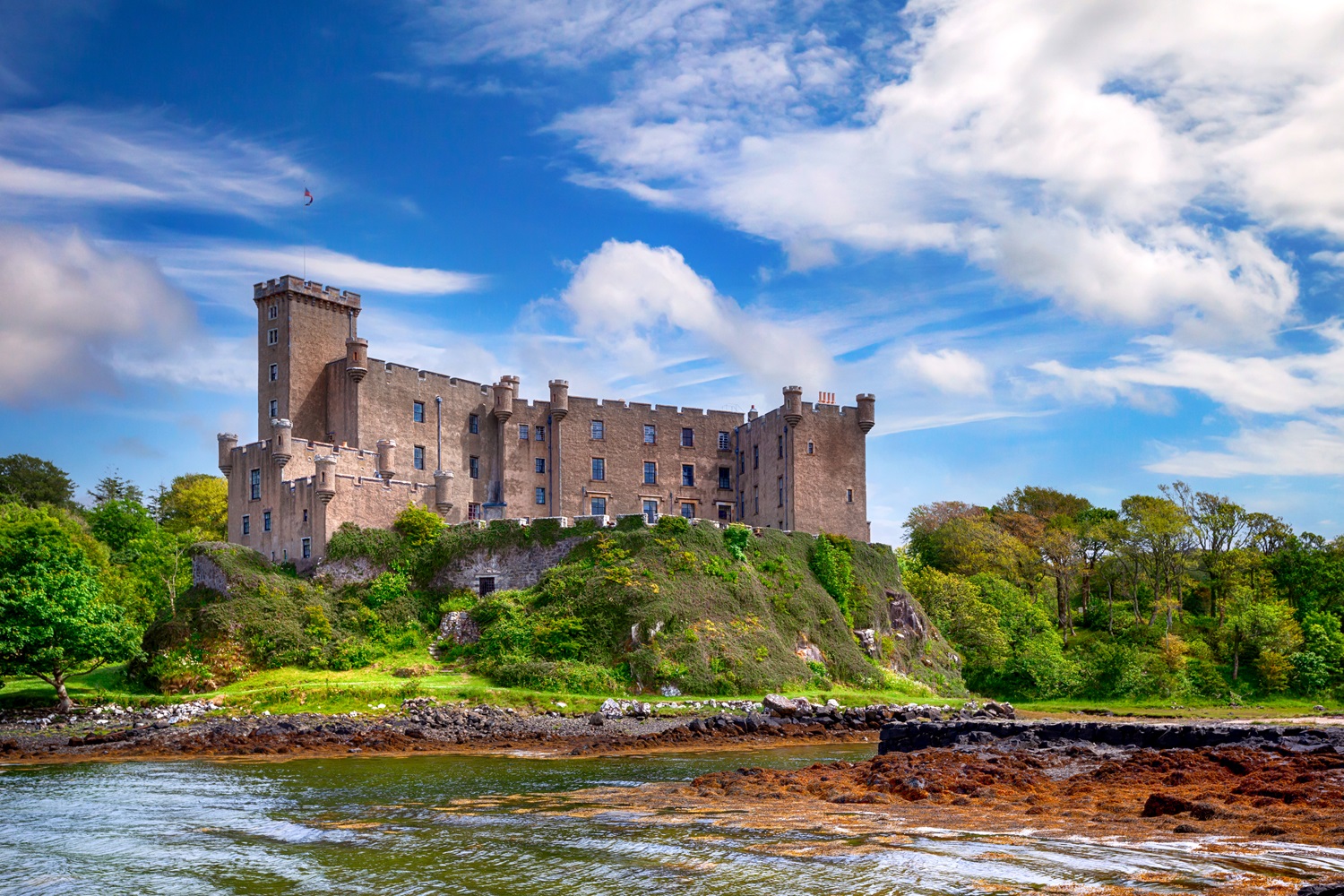
Loch Ness is one of Scotland’s best-known tourist attractions, famous not only for its stunning scenery but also for its mythical monster, Nessie. Set amidst rolling hills and dense forests, the sprawling freshwater loch provides a tranquil and breathtaking environment. Or visit Urquhart Castle for stunning local views and its age-old ruins.
If you’re fortunate, you might even glimpse the elusive Nessie. Next door, the village of Drumnadrochit has several exhibitions and tours dedicated to the mystery of the Loch Ness Monster. It’s an ideal location for fans of history and folklore alike.
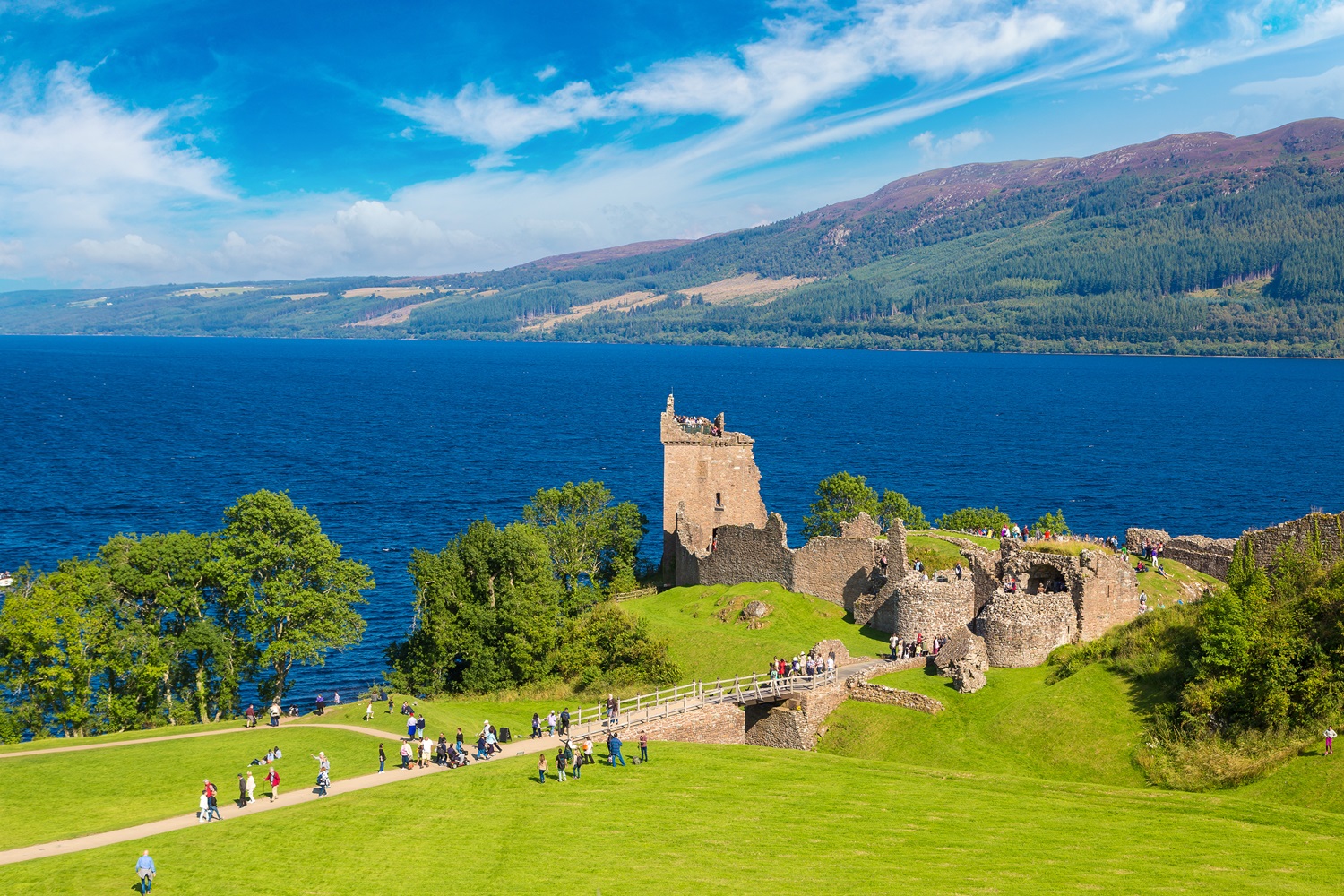
Scotland’s most breathtaking landscape is a place of towering peaks, deep valleys, and untamed scenery. You’ll be enchanted by the jagged mountain peaks and mist-enshrouded glens that have led to christen Glencoe as one of the top scenic drives on the planet.
The area is rich in history, of which the tragic Glencoe Massacre of 1692 is the most notable. There are countless hiking trails for outdoor lovers, with paths up to The Three Sisters and Buachaille Etive Mòr, offering breathtaking views of the desolate wilderness all around.
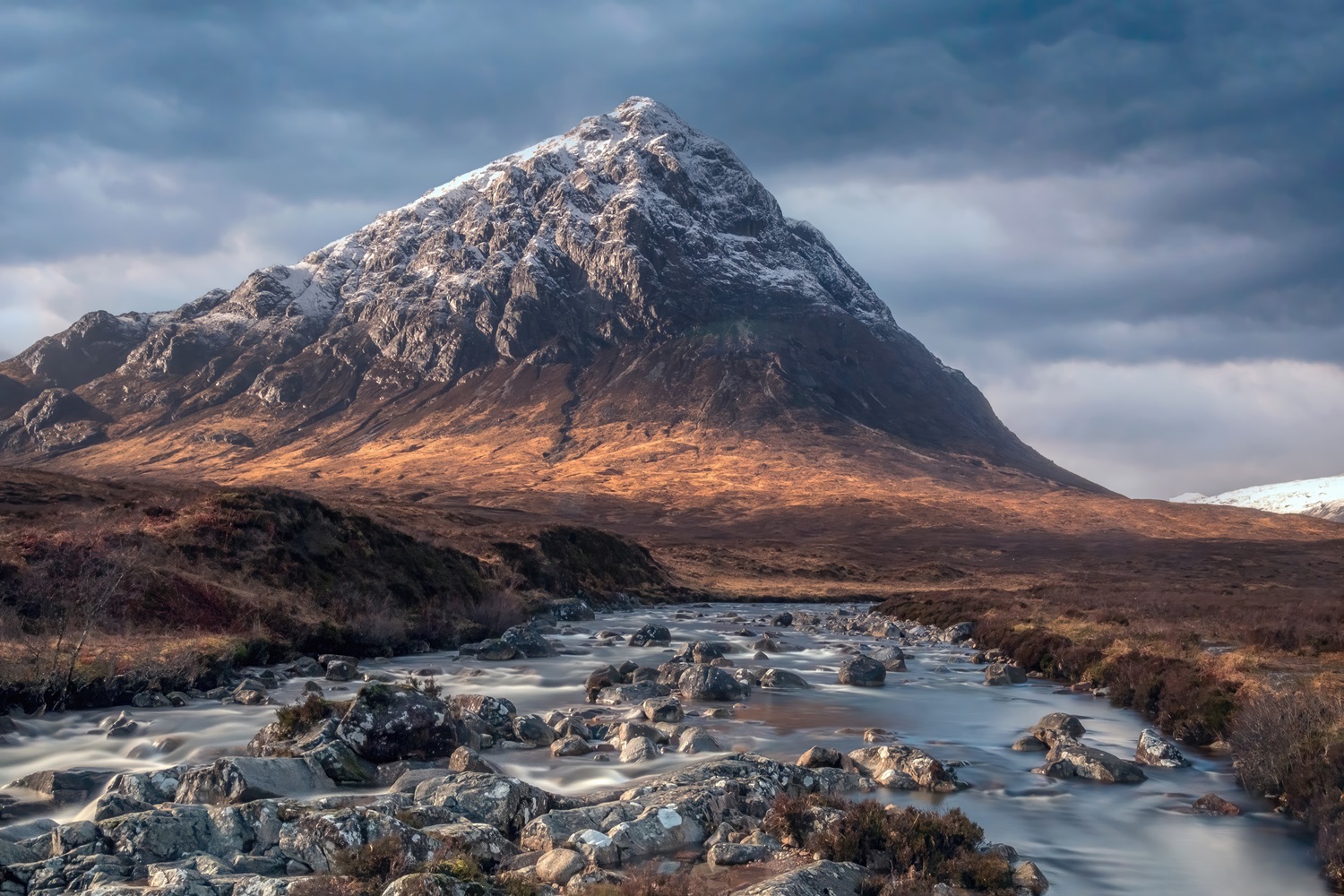
The North Coast 500 (NC500) has become a world-famous scenic route over the last decade or so, though it's simply 500 miles of Highland scenery around the northern Highlands. This classic route winds through out-of-the-way villages, sandy beaches and rocky cliffs, taking you past places like Dunrobin Castle and the Black Isle.
Make stops for panoramic views at John o’ Groats and the towering cliffs of Smoo Cave. NC500 is the road trip of a lifetime through some of the most beautiful, wildlife-rich and undiscovered areas in Scotland; it is a must-drive on a Scottish adventure.
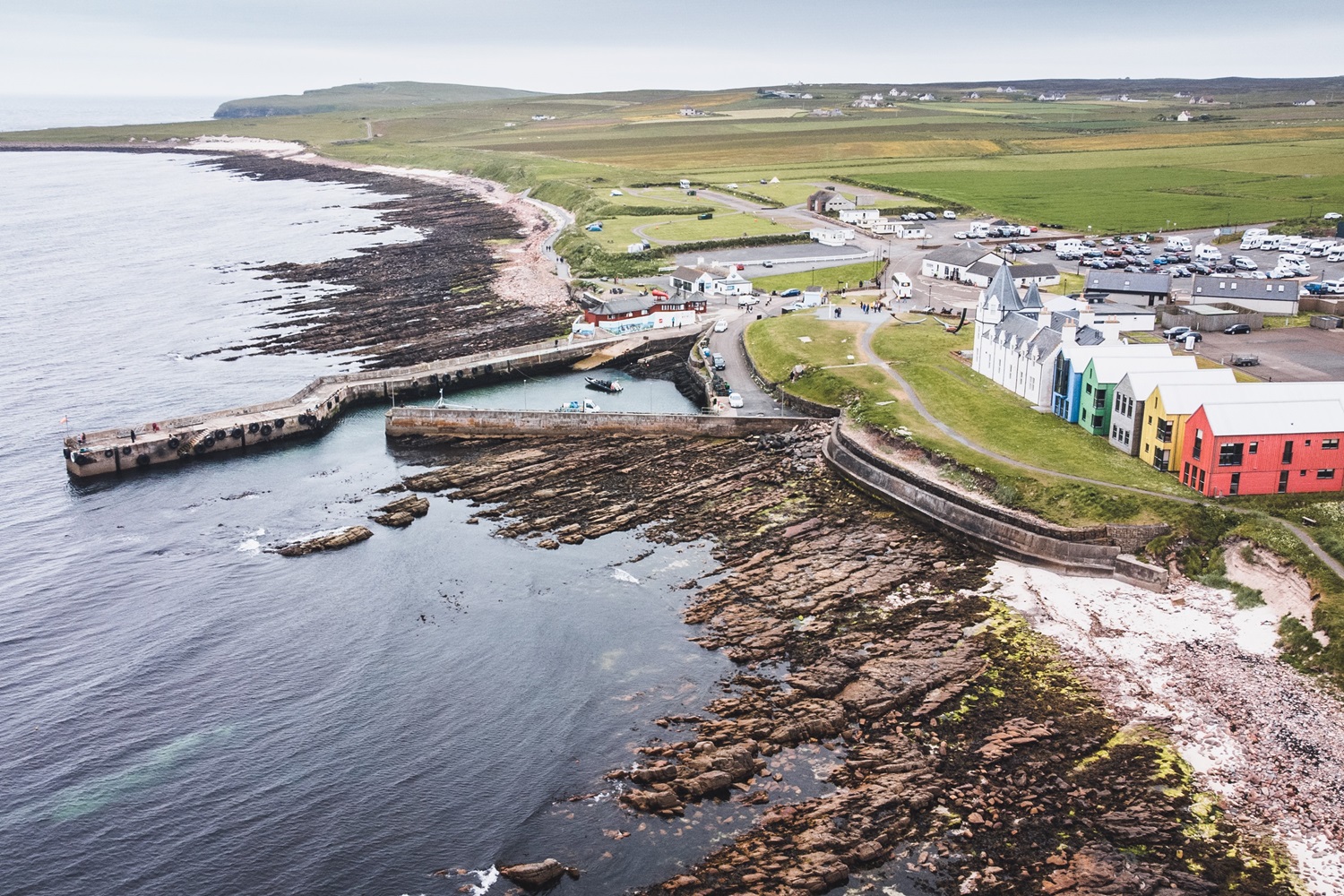
This is largely determined by the best weather or activities for you. The months of late spring (May to June) and early autumn (September to October) are perfect, with mild weather, longer days and fewer tourists. Great for discovering Scotland’s beautiful scenery with fewer summer crowds for hiking and outdoor pursuits.
Summer (June to August) has the warmest weather but can be crowded, particularly in popular tourist areas. Winter (November to February) provides a quieter experience, with fewer visitors, but expect cold weather and fewer daylight hours, particularly in the Highlands.
Scotland is a motorhome adventurer's dream, with stunning routes, wild camping and a vast mix of history and scenery. Scotland has endless options for road trips, whether they’re iconic ones like the Isle of Skye or the NC500 or vast empty stretches of countryside. Remember to always have respect for the locals and leave no trace when on vacation.
When you are travelling through some beautiful parts of the landscape, choose Compass Campers to hire quality motorhomes that are both reliable and comfortable to luxuriate in as you explore Scotland. Get on the road today to write your own epic adventure with Compass Campers, your partner for exploring Scotland by motorhome.
Sitting on the east of Scotland, this coastline has some of the most scenic views and interesting landmarks in the UK, making it an ideal road trip destination. You can take a 7-day tour along the coast, enjoying quaint towns, rugged topography, and ancient castles almost at your leisure.
The best way to experience this once-in-a-lifetime trip is with a campervan, which allows travellers to visit remote locations, revisit scenic views, and stay in unique spots during their journey.
This guide will take you through a carefully curated itinerary, offering a week of exploration, discovery, and unforgettable memories on Scotland’s east coast.
Scotland's east coast is practically made for a road trip, with its picturesque coastlines, historical sites and cosy towns. Hiring a campervan from a reputable motorhome hire company like Compass Campers is the best way to explore this diverse region. A campervan is the ultimate in freedom and flexibility, enabling you to go where you like when you like, without the need to work around hotel bookings or predetermined itineraries. You could wake up each day to a different vista — a coastside sunrise, a quiet forest, or a charming town.
With everything from sleeping arrangements to meals in tow, campervan travel allows users to spend less time worrying about logistics and more time enjoying the ride. In addition, having the freedom to stop at any point gives you the opportunity to find hidden gems en route, from a secret beach to a beautiful village to an amazing vista.
Even further east, Edinburgh and the historic town of St Andrews are two of many destinations to visit in the east, which features a rich tapestry of culture, history, and natural beauty. With a campervan, you’ll be able to easily move between these destinations, soaking in the landscape and immersing yourself in the spirit of Scotland.
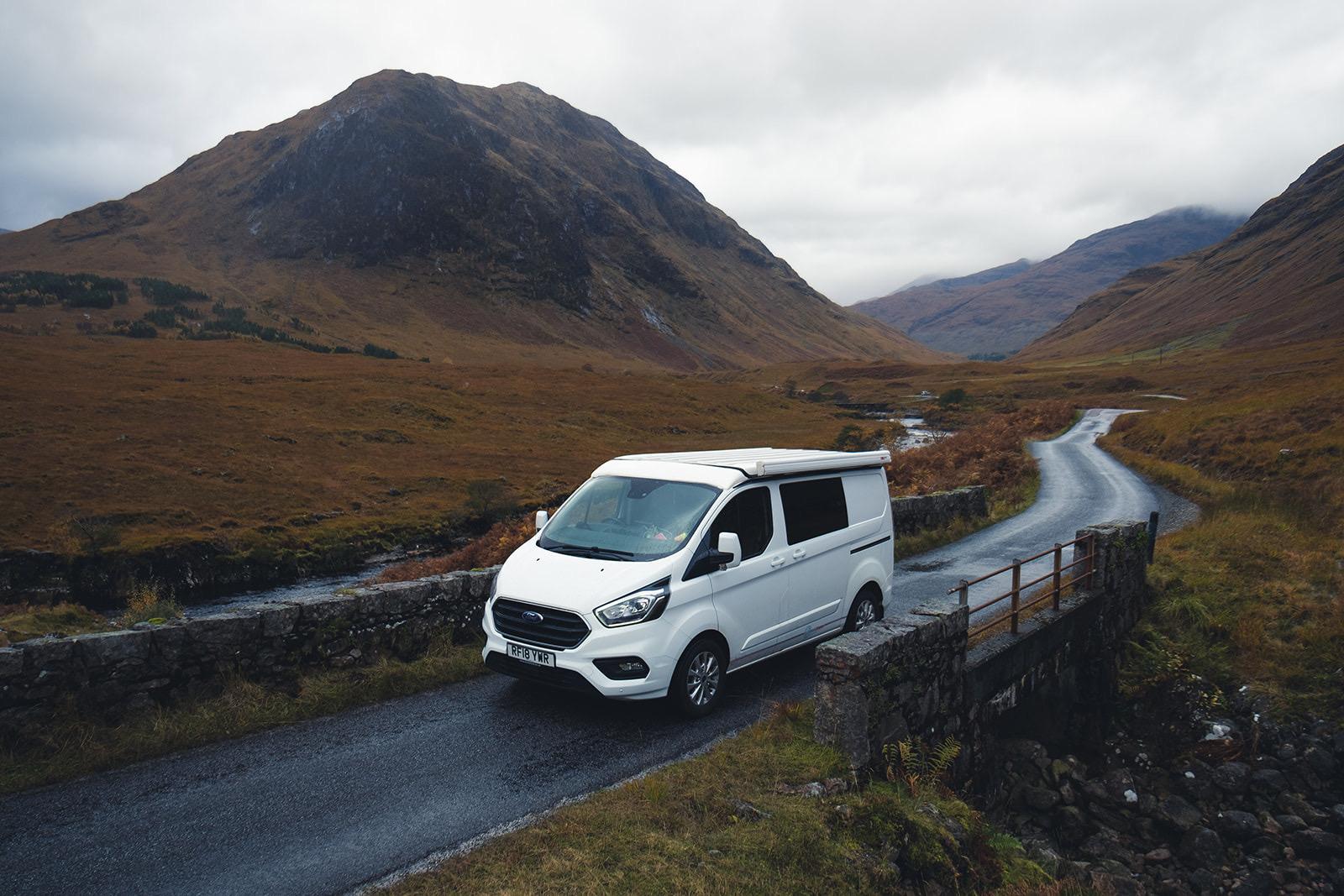
First up is Edinburgh, Scotland’s capital, rich with history, culture, and gorgeous architecture. Explore Edinburgh Castle, a historic citadel that stands atop Castle Rock and provides sweeping views of the city and the surrounding hills. Stroll along the historic Royal Mile, home to historic sites, shops and cafés.
Along the way, visit St Giles’ Cathedral and discover the city’s royal past at Holyrood Palace. For a more active adventure, hike up Arthur’s Seat, an extinct volcano that offers stunning views of the city, coast and Pentland Hills.
Be sure to visit the National Museum of Scotland, which covers the country’s history from prehistoric to modern times. Edinburgh is renowned for its food scene, too, with a variety of traditional pubs serving up local dishes. Round off your day with a walking tour of the Old Town or a whisky tasting at one of the city’s famous bars.

On the second day, pay a visit to St Andrews, a lovely coastal town famous for its prestigious university and golfing history. Start your day at St Andrews Cathedral ruins, the largest in Scotland, so you can bask in the history that shaped this quaint town. Wander around the nearby St Andrews Castle, where you can witness the atmospheric ruins and gaze at panoramic views across the North Sea. An absolute treat for golf fans, the Old Course is the oldest golf course in the world and the site of many famous tournaments.
The surrounding Links is also a lovely place to stroll, even if you don’t golf. Walk along the coast with some relaxation on West Sands Beach, which is featured in the movie Chariots of Fire. The town itself has very cute streets lined with independent shops, cafés and restaurants where one could easily spend an afternoon wandering around.
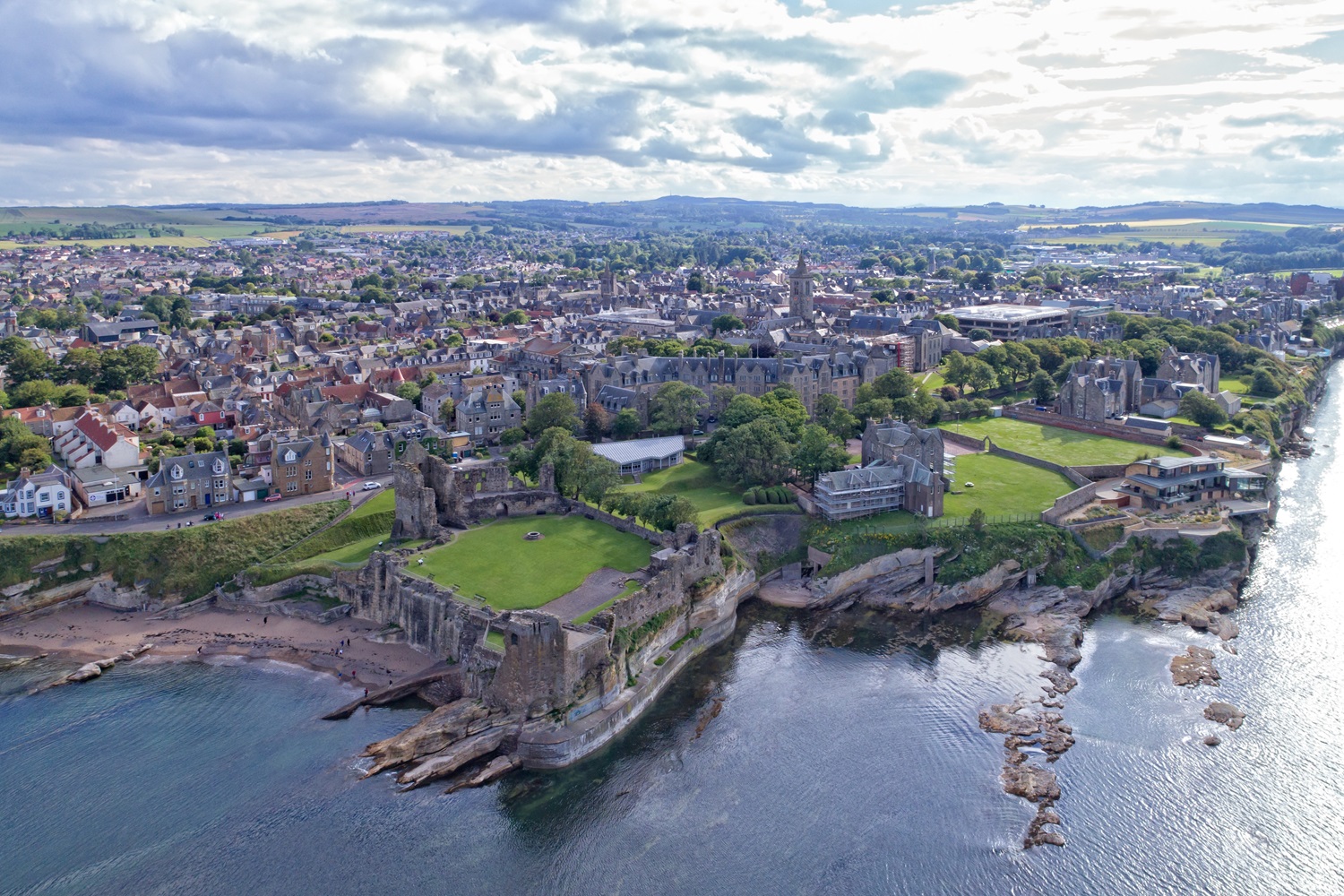
Then, make your way to Dundee, a lively city on the banks of the River Tay. Begin your trip with a stop at the V&A Dundee (Victoria and Albert Museum), a world-class design museum situated in a beautiful building with striking architecture. Revel in the intriguing Discovery Point, where you can visit the renowned RRS Discovery, the vessel which carried Captain Scott and Ernest Shackleton on their first voyage to Antarctica.
Another spot to add to your list is Dundee Law, a hill with great views of the city and surrounding area, great for some epic photos. Dundee also has a thriving arts scene, with many galleries and public art installations to enjoy.
After exploring the city, take a leisurely walk along the waterfront or share a meal at one of the many excellent restaurants the city offers. Dundee combines innovation with a strong sense of the traditional, making it the ideal destination for fans of art, culture and the Scottish seafaring past (Dundee is home to the world’s first three-legged iron ship).
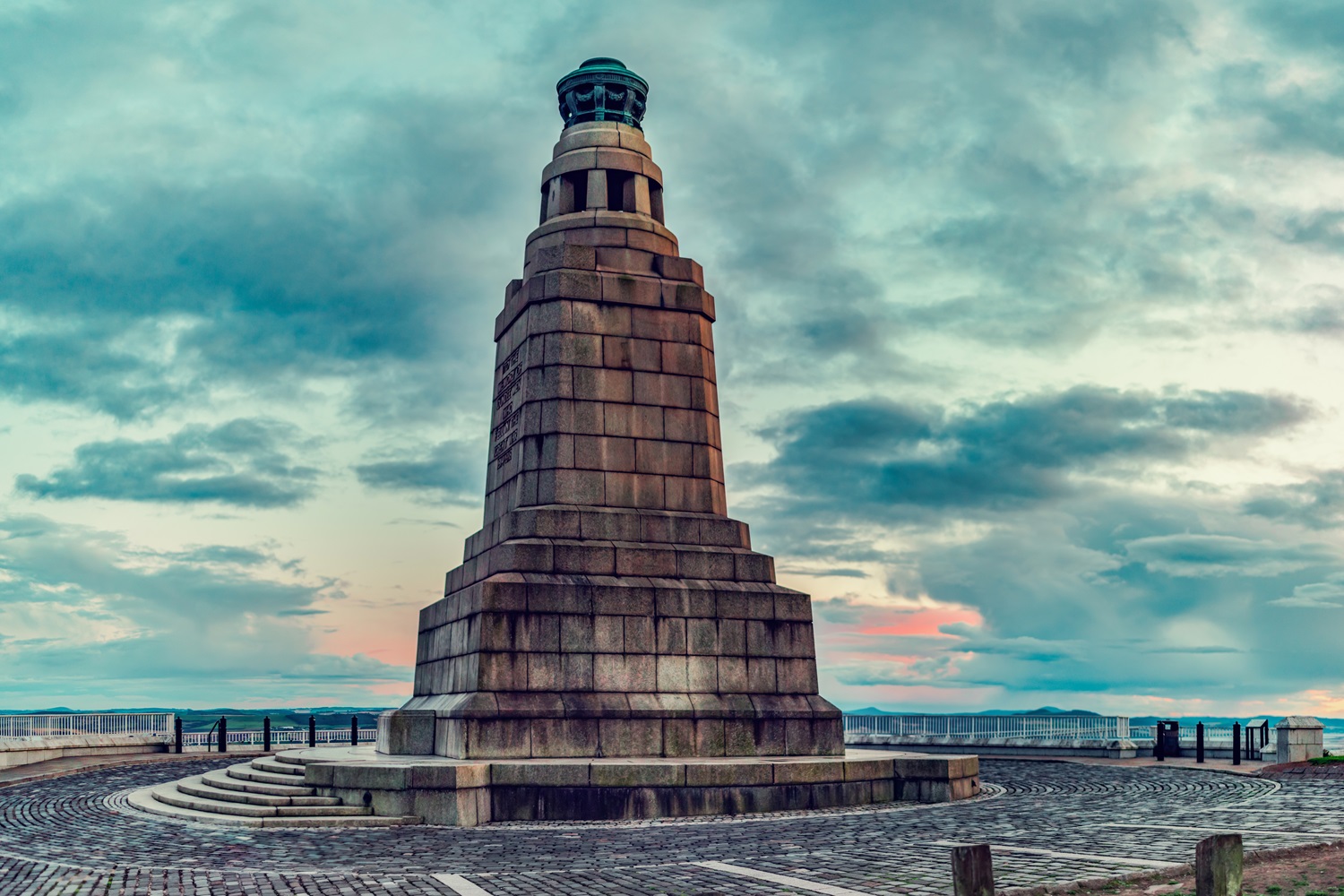
On day four, make your way to Aberdeen, known as Scotland’s “Granite City,” because of the numerous grey stone buildings lining its streets. Start with the Aberdeen Art Gallery, a magnificent venue filled with collections of art, both local and worldly.
Next, walk along Union Street, the city’s main thoroughfare, which is home to shops, cafés and historic landmarks. Another architectural highlight is Marischal College, a massive granite building adorned with intricate carvings that reflect the city’s heritage.
If you want to get some fresh air, go visit Aberdeen Beach and take a serene stroll along the shore, and nearby Footdee (Fittie) is a quaint fishing village with kooky cottages that delivers a stunning view of the North Sea. As the ‘Granite City’ is famous for its seafood, be sure to stop by a local eatery for some fresh Scottish fish dishes or visit a local whisky distillery to try some spirits.

On day five, drive north to Inverness, the informal capital of the Scottish Highlands. Your first port of call will be the famed Loch Ness, the paragon of the putative Nessie. Take a boat tour of the loch to see the pretty vistas and maybe even spot the legendary beast. The rest of your day is spent at Inverness Castle, which overlooks the city and the neighbouring River Ness. Culloden Battlefield, the site of the bloody 1746 battle that ended in defeat for the Jacobites, is not far from here.
Discover this defining moment in Scottish history at the battlefield and the visitor centre. Another highlight of Inverness is the beautiful nature surrounding the area, including the Cairngorms National Park, where you can hike, bike, and watch wildlife. Inverness itself has a chill vibe, with lots of cafés, pubs and independent shops to peruse before heading out to the next stop.
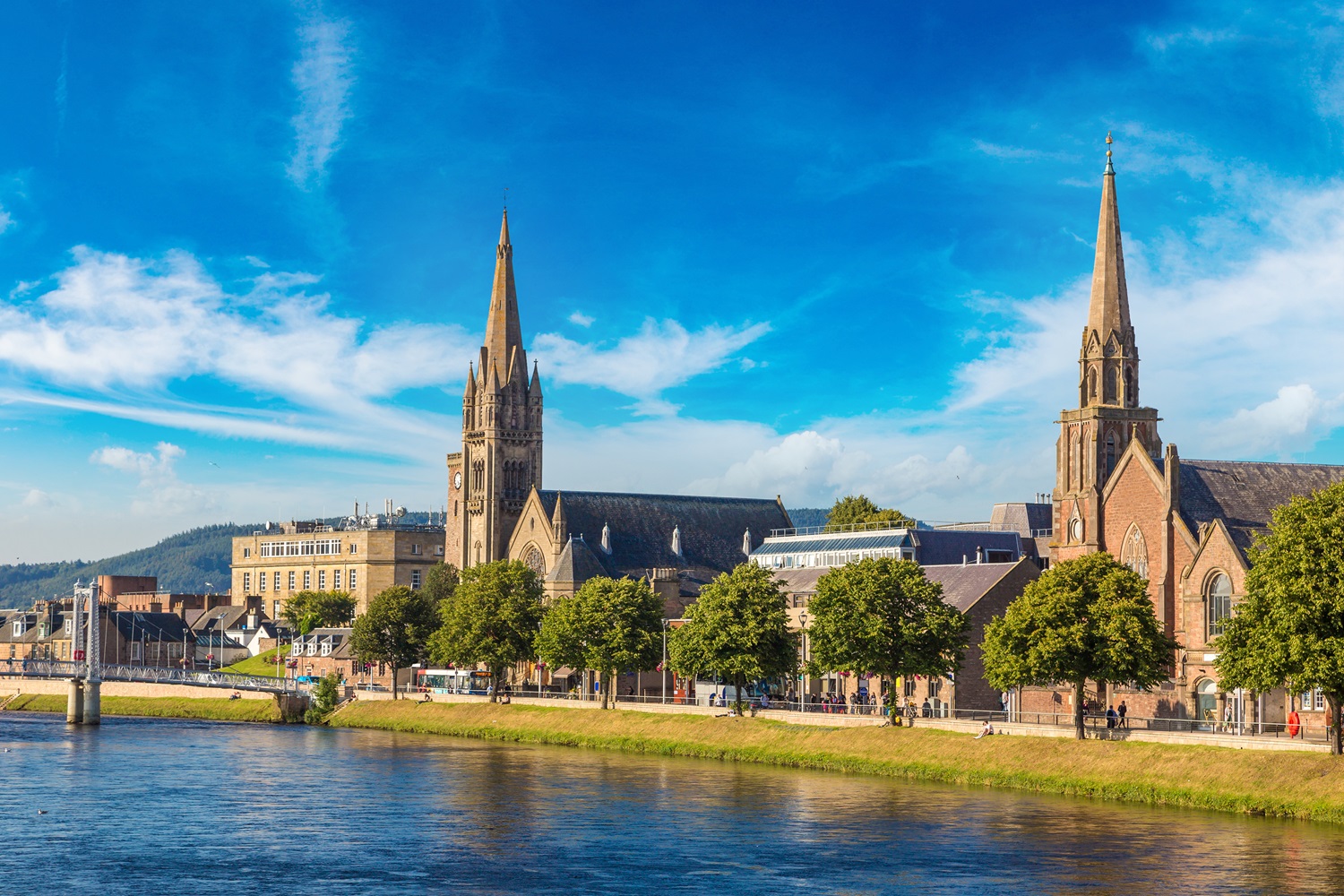
Day six brings you to the delightful village of Ullapool on the shores of Loch Broom in the Northern Highlands. Start your day at the Ullapool Museum, where you can discover the region’s maritime past and view displays of the town’s fishing heritage. Take a leisurely walk around the harbourside, admiring the fishing boats, colourful cottages and views over the loch. Ullapool is famous for its seafood, and what better place to eat locally produced fresh seafood than one of the village’s seafood restaurants?
For a more adventurous pursuit, a boat trip around Loch Broom will expose you to some spectacular views of the surrounding hills, as well as the opportunity to spot wildlife, including seals and dolphins. If you have time, take a detour for a scenic drive to the nearby Corrieshalloch Gorge, a stunning, dramatic spot that you can walk a short distance within and take gorgeous photos.
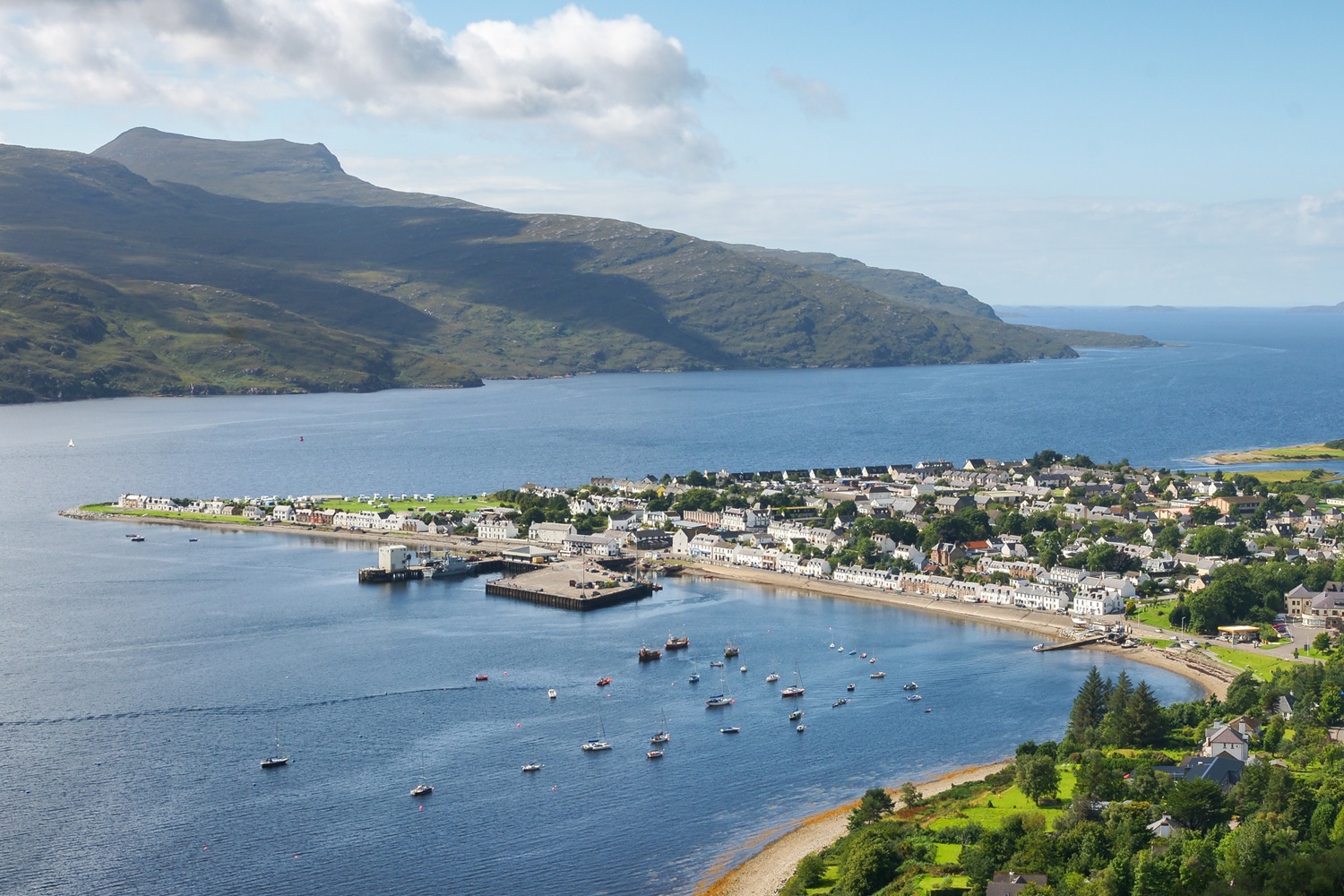
Your last stop on your road trip is Fort William, a town tucked at the foot of Ben Nevis, the highest mountain in the UK. For the more adventurous, aim to hike to the top of Ben Nevis — though it’s a steep climb, the sights from the summit are unbeatable. Or, if that is a little too taxing for your tastes, venture out into Glen Nevis, a beautiful valley with walking trails through gorgeous scenery.
Fort William is also home to the picturesque Caledonian Canal, where you can take a scenic boat trip or take an easy stroll along its banks. The town is steeped in cultural diversity, with a myriad of local museums and galleries to visit. You can also discover the Highland way of life at the West Highland Museum. At the end of the day, unwind in one of the town’s local pubs, with its hearty Scottish fare and creative whisky selections, and raise a glass to the end of your journey.
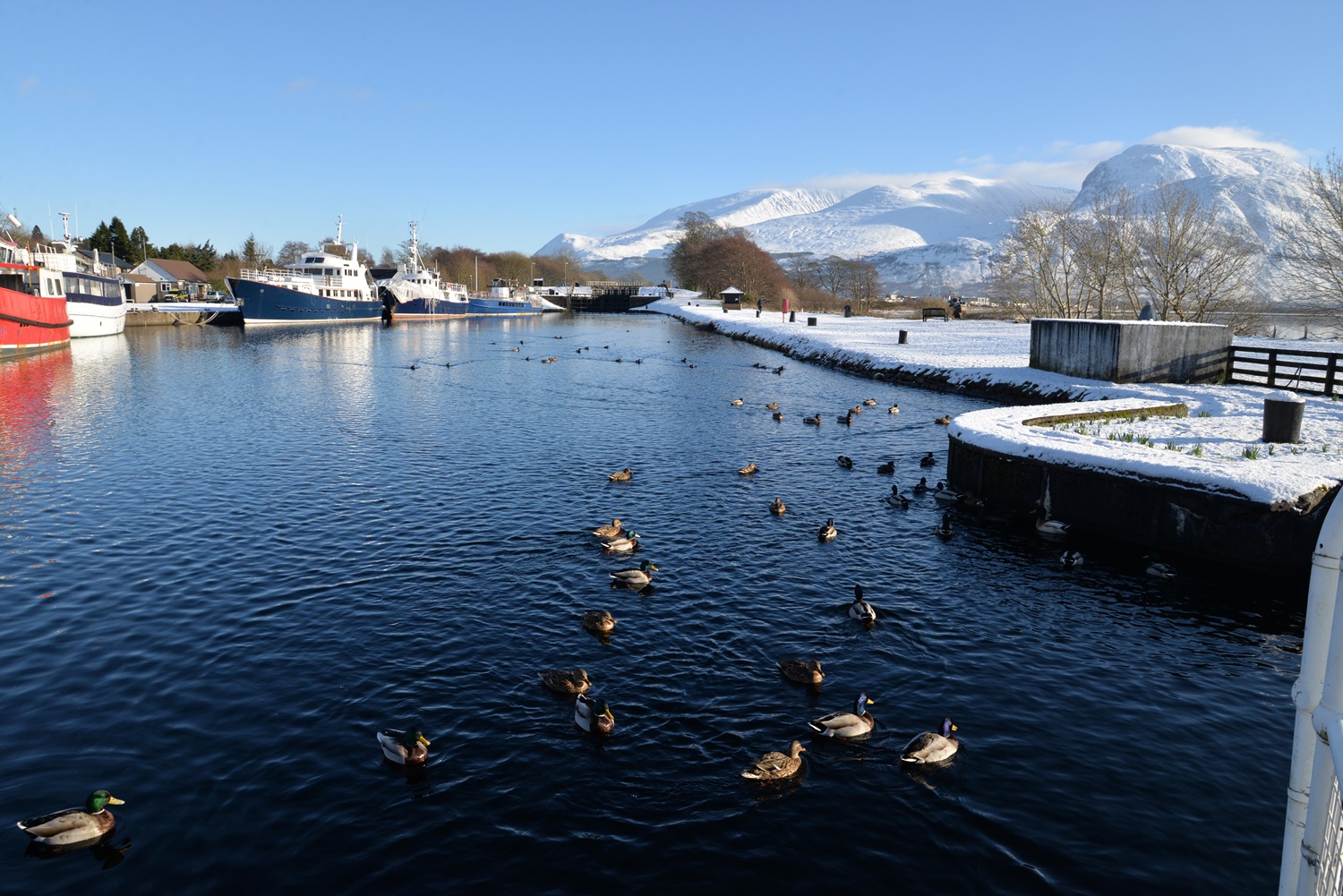
For the ultimate flexibility and comfort on your East Coast Scotland road trip, choose Compass Campers. With a range of well-equipped campervans, you can explore Scotland at your own pace, enjoying the freedom to stop wherever you like. Book your adventure with Compass Campers for a memorable, stress-free experience.
Embarking on a road trip from Edinburgh to the Isle of Skye is an unforgettable adventure that takes you through Scotland’s stunning landscapes, from historic castles to rugged highlands and dramatic coastlines. The journey offers a perfect mix of natural beauty and cultural landmarks, making it a must-do for any travel enthusiast.
Whether you're in the mood for an action-packed exploration or a leisurely drive, this road trip provides ample opportunities to immerse yourself in Scotland’s rich history and breathtaking scenery. Get ready to discover the best places along the way and experience one of the most scenic drives in the UK.
To get to the Isle of Skye from Edinburgh, the most common route is to head northwest via the M9 and A84, passing through Stirling and Callander. From there, take the A82 through the stunning Loch Lomond and the Trossachs National Park, followed by the A87, which leads you directly onto the island.
The total drive is about 230 miles and takes around 5 to 6 hours, depending on traffic and stops along the way. The journey offers breathtaking views of mountains, lochs, and valleys, making it an incredible experience in itself. Be prepared for some winding roads and scenic detours.
For the ultimate road trip experience, hire a custom-built campervan from Compass Campers. Our high-spec, luxury campervans are designed for comfort and convenience, featuring automatic transmission, leather interiors, LED lighting, and a state-of-the-art heating system. With memory foam mattresses and all the essential amenities, you’ll have a cosy home on wheels as you explore Scotland’s breathtaking landscapes.
Whether you're heading to the Isle of Skye or discovering hidden gems along the way, our campervans offer the perfect balance of adventure and relaxation, ensuring your journey through the Scottish Highlands is both comfortable and unforgettable.

Stirling Castle, located just over an hour’s drive from Edinburgh, is a must-see for history lovers. It was the site of pivotal events, including the Battle of Stirling Bridge, where William Wallace secured a major victory. Today, the castle is home to restored rooms like the Great Hall and Royal Palace, showcasing Scotland's royal history. Visitors can also enjoy panoramic views of the surrounding countryside and learn about the country’s turbulent past.
Stirling Castle offers a blend of history and stunning views, making it an ideal stop on your road trip to the Isle of Skye. Don’t miss the impressive Royal Palace, which is designed to reflect the grandeur of the Renaissance period. The castle also has interactive displays, including a model of the famous Stirling Heads.
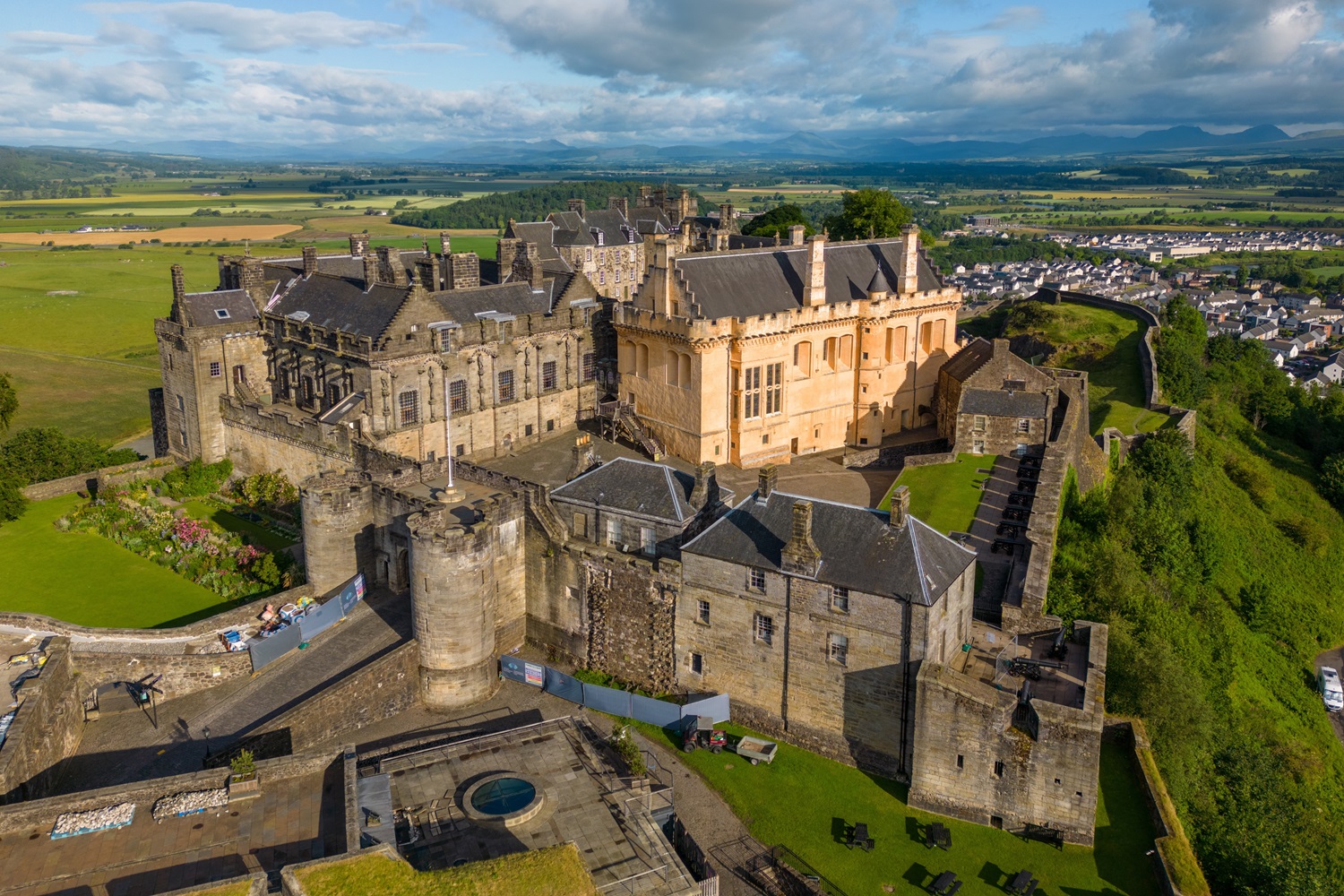
Loch Lomond & The Trossachs National Park, just over an hour from Edinburgh, is a nature lover’s paradise. The park’s highlight, Loch Lomond, is Scotland’s largest freshwater loch, surrounded by lush hills and scenic villages. The park offers a wide range of outdoor activities, including hiking, cycling, and wildlife watching. Explore trails like the West Highland Way or relax in the village of Balmaha.
Whether you’re seeking adventure or relaxation, Loch Lomond & The Trossachs National Park provides breathtaking scenery and a perfect introduction to Scotland’s natural beauty on your way to the Isle of Skye. It’s also home to a variety of birdlife, including the iconic osprey, and the area’s calm waters make it a great place for canoeing.
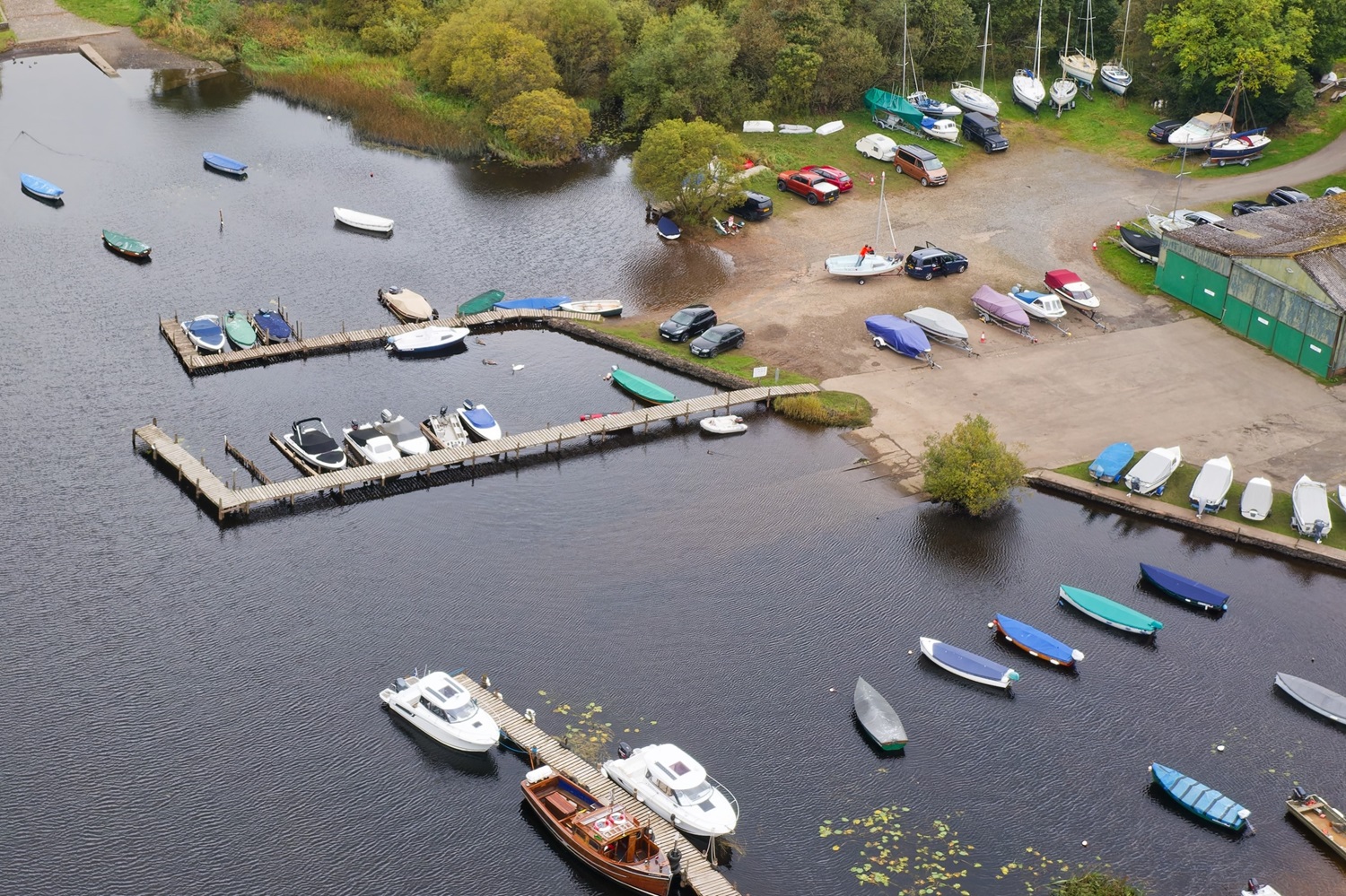
Glencoe is a stunning valley famous for its dramatic landscapes and historic significance. Known for its rugged mountains and deep glens, it’s perfect for outdoor activities like hiking and climbing. Glencoe also holds a sombre place in history, being the site of the 1692 massacre, which adds a layer of intrigue to the landscape.
Hiking the Devil’s Staircase offers some of the best views, but if you prefer a more relaxed visit, the Glencoe Visitor Centre offers educational exhibits about the valley’s history and geology. Glencoe’s beauty and emotional history make it a must-visit destination on your road trip to the Isle of Skye. You can also enjoy the tranquil beauty of the nearby Loch Leven, with options for boat tours or peaceful strolls along the shore.
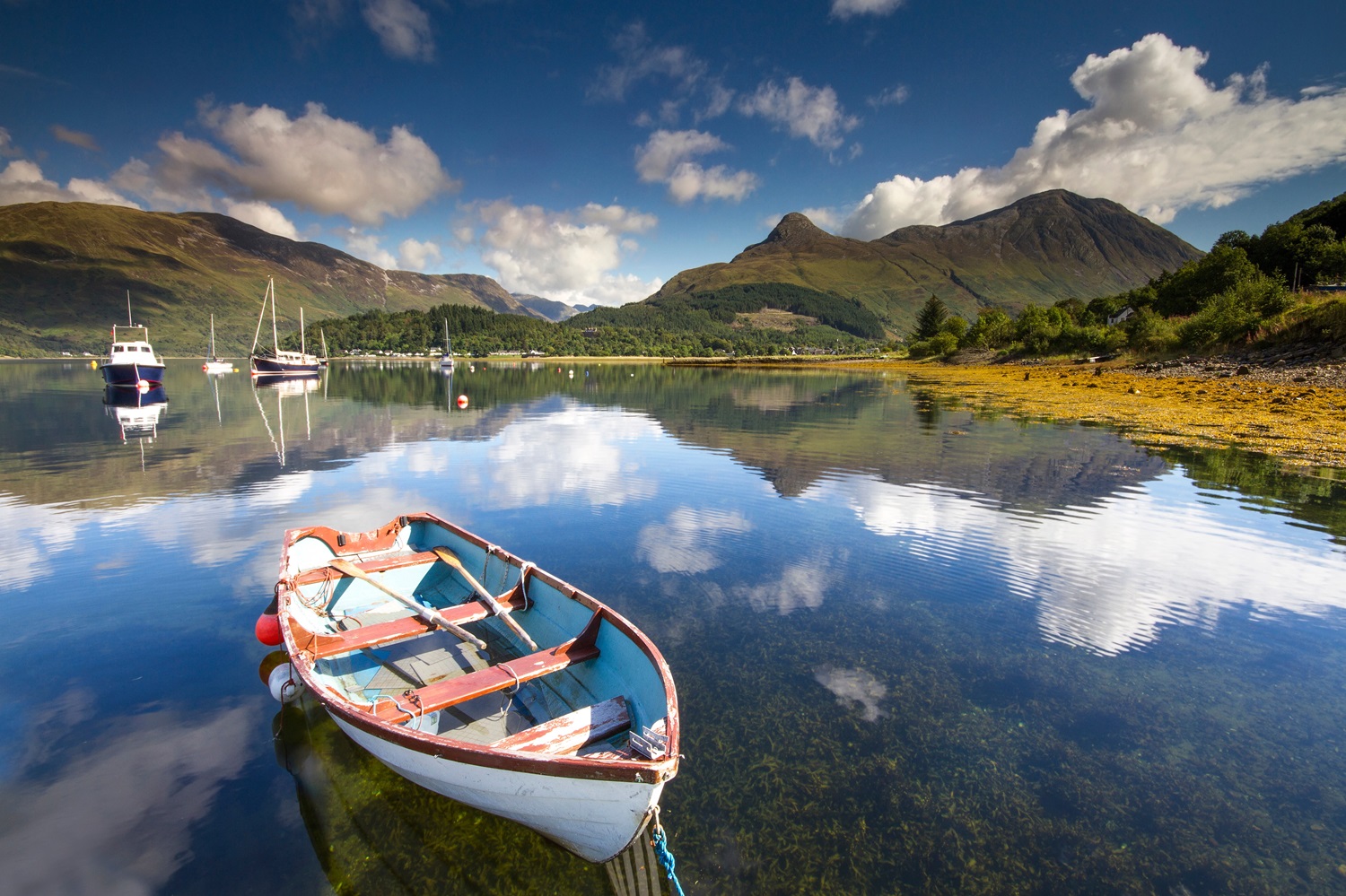
Fort William, located at the foot of Ben Nevis, is Scotland’s "Outdoor Capital." The town is perfect for adventure enthusiasts, offering hiking, mountain biking, and water sports. For those up for a challenge, Ben Nevis offers several hiking routes to the summit. Alternatively, relax in the town's charming shops and cafes. Fort William is also a base for exploring nearby attractions, including the West Highland Line, known for its scenic train journeys.
Whether seeking adventure or relaxation, Fort William provides an excellent stop on your way to the Isle of Skye. For visitors looking to take in more dramatic views, the nearby Loch Linnhe offers serene waterside walks.

Nevis Range Mountain Resort, near Fort William, is a year-round destination for adventure. In winter, it offers skiing and snowboarding on Aonach Mor. In summer, enjoy mountain biking, hiking, and panoramic views via the Nevis Range gondola. The gondola takes you up to 2,000 feet, offering breathtaking views of Ben Nevis and the surrounding landscape.
For a more leisurely experience, enjoy a meal at the café while soaking in the scenery. Nevis Range’s stunning views and wide range of activities make it a perfect stop on your road trip to the Isle of Skye. For those who prefer a gentler adventure, the resort also offers guided walks and nature tours in the area.
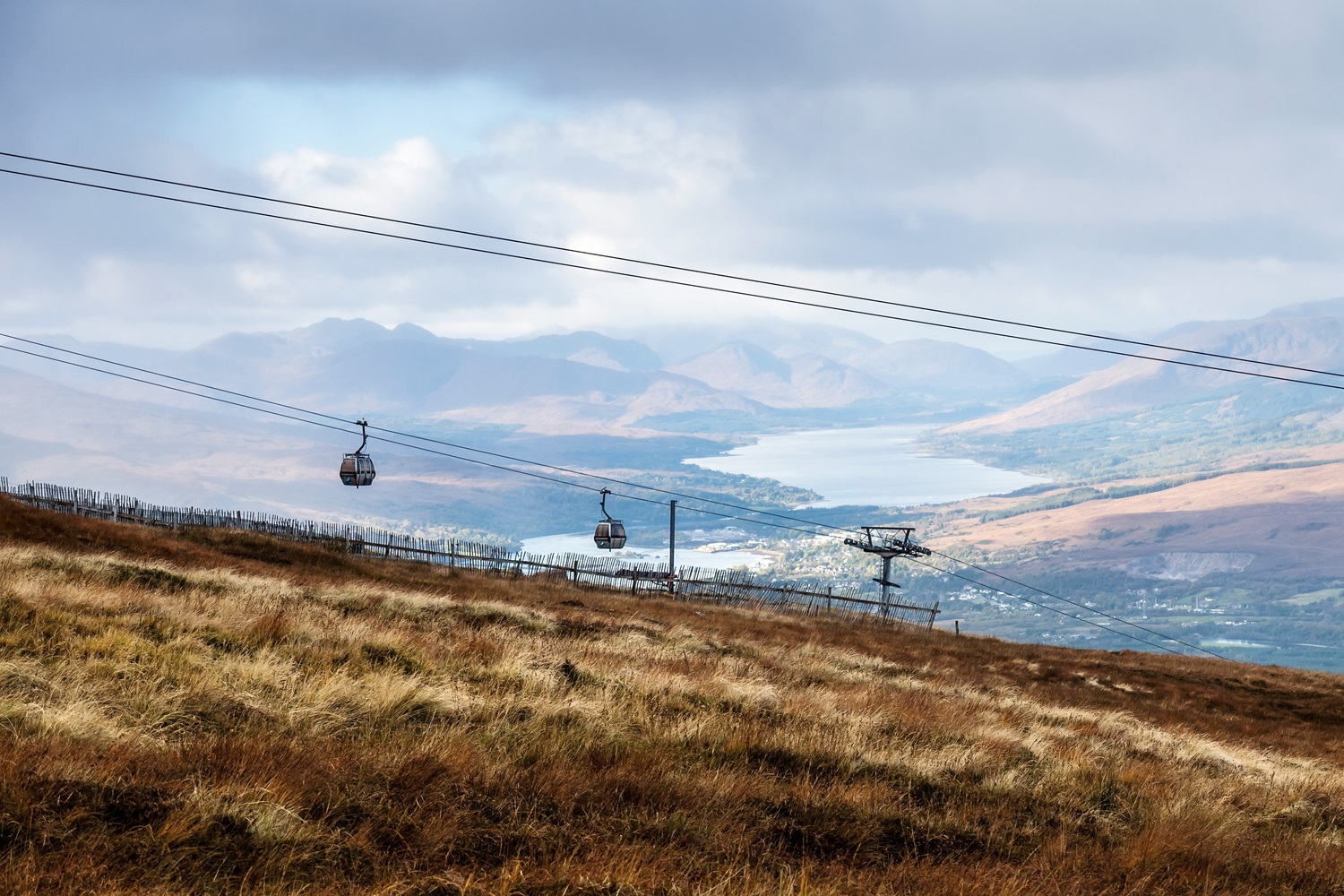
The Five Sisters of Kintail, located on the road to the Isle of Skye, are a striking mountain range. The five peaks stand tall, offering dramatic views of the surrounding landscape. The range is ideal for hiking, with routes like the Five Sisters Ridge Walk providing incredible vistas of the Highlands.
Even if you’re not hiking, the surrounding area offers plenty of scenic viewpoints. This location showcases the rugged beauty of the Scottish Highlands, making it a must-see for anyone on their way to the Isle of Skye. The nearby village of Shiel Bridge is a peaceful spot to rest and take in the spectacular mountain views.
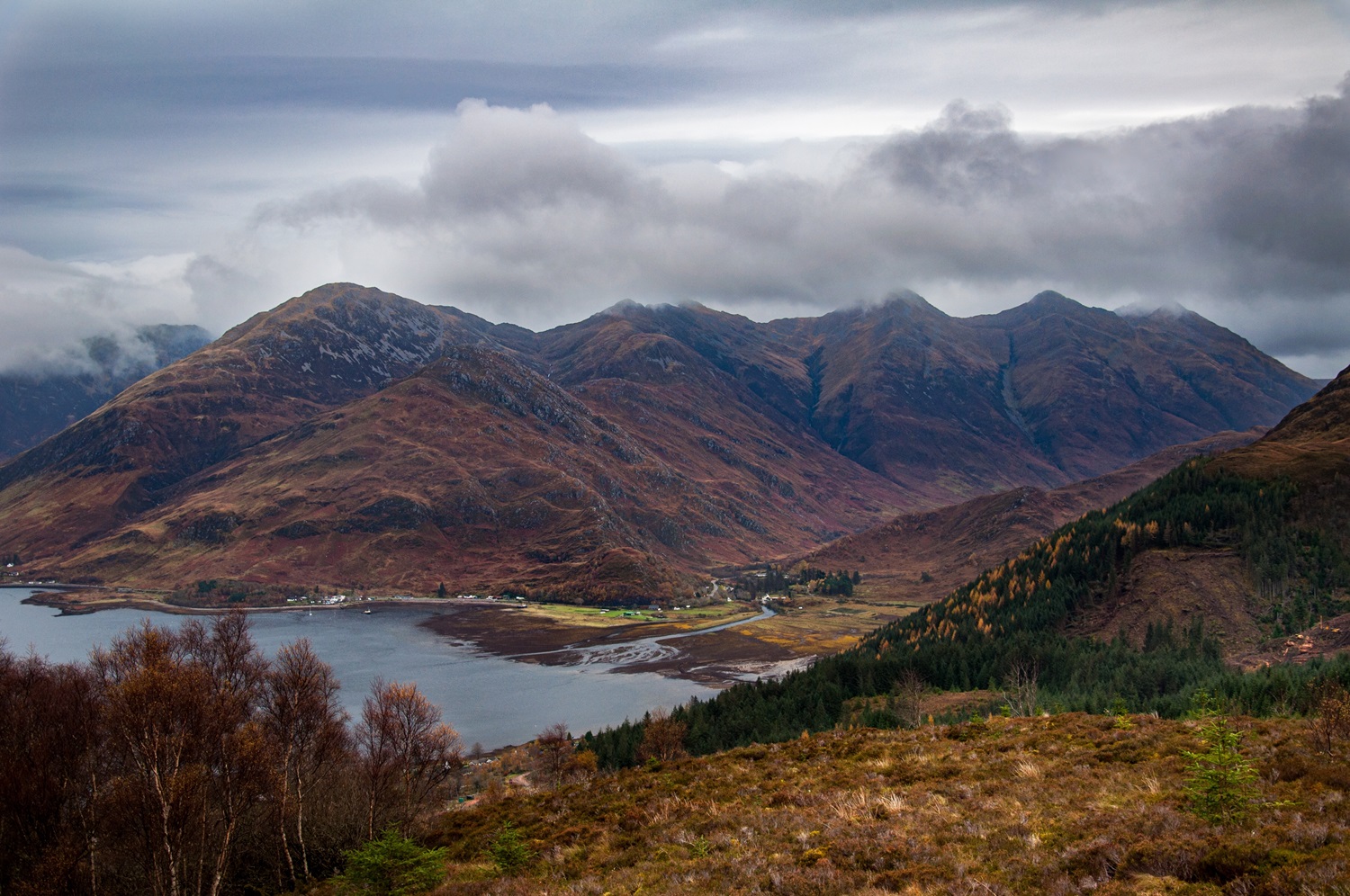
Eilean Donan Castle, located at the meeting point of three lochs, is one of Scotland's most iconic landmarks. The 13th-century castle has a rich history, particularly its role in the Jacobite uprisings. Visitors can explore its well-preserved Great Hall and chambers while learning about the castle’s past.
Surrounded by stunning scenery, the castle offers excellent photo opportunities, with lochs and mountains forming a picturesque backdrop. Eilean Donan Castle is a perfect stop for history enthusiasts and nature lovers on their way to the Isle of Skye. The castle also offers a lovely café with views over the loch, making it an ideal spot for a relaxing break.
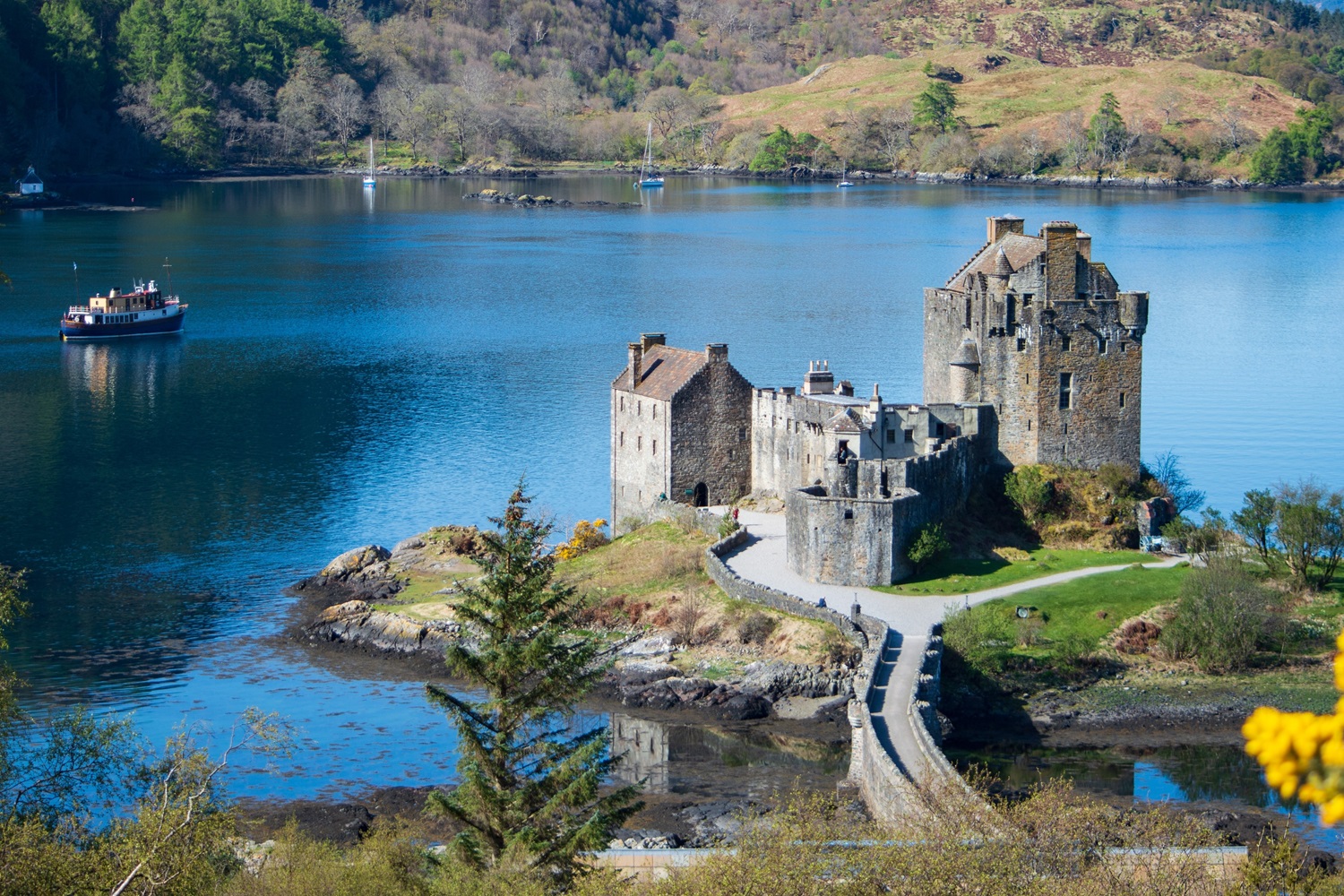
The Skye Bridge, connecting the Isle of Skye to the mainland, offers stunning views of the surrounding landscape. The bridge spans Loch Alsh and provides a scenic introduction to the island, with panoramic views of the mountains and coastline. As you cross, you’ll catch a glimpse of Skye’s jagged peaks and tranquil waters.
The bridge is also a gateway to nearby attractions, such as the village of Kyle of Lochalsh. The Skye Bridge is not just a crossing but an iconic spot for admiring the stunning scenery of the Scottish Highlands. Don’t forget to stop at the viewpoint just before you cross for the best view of the bridge and Loch Alsh.
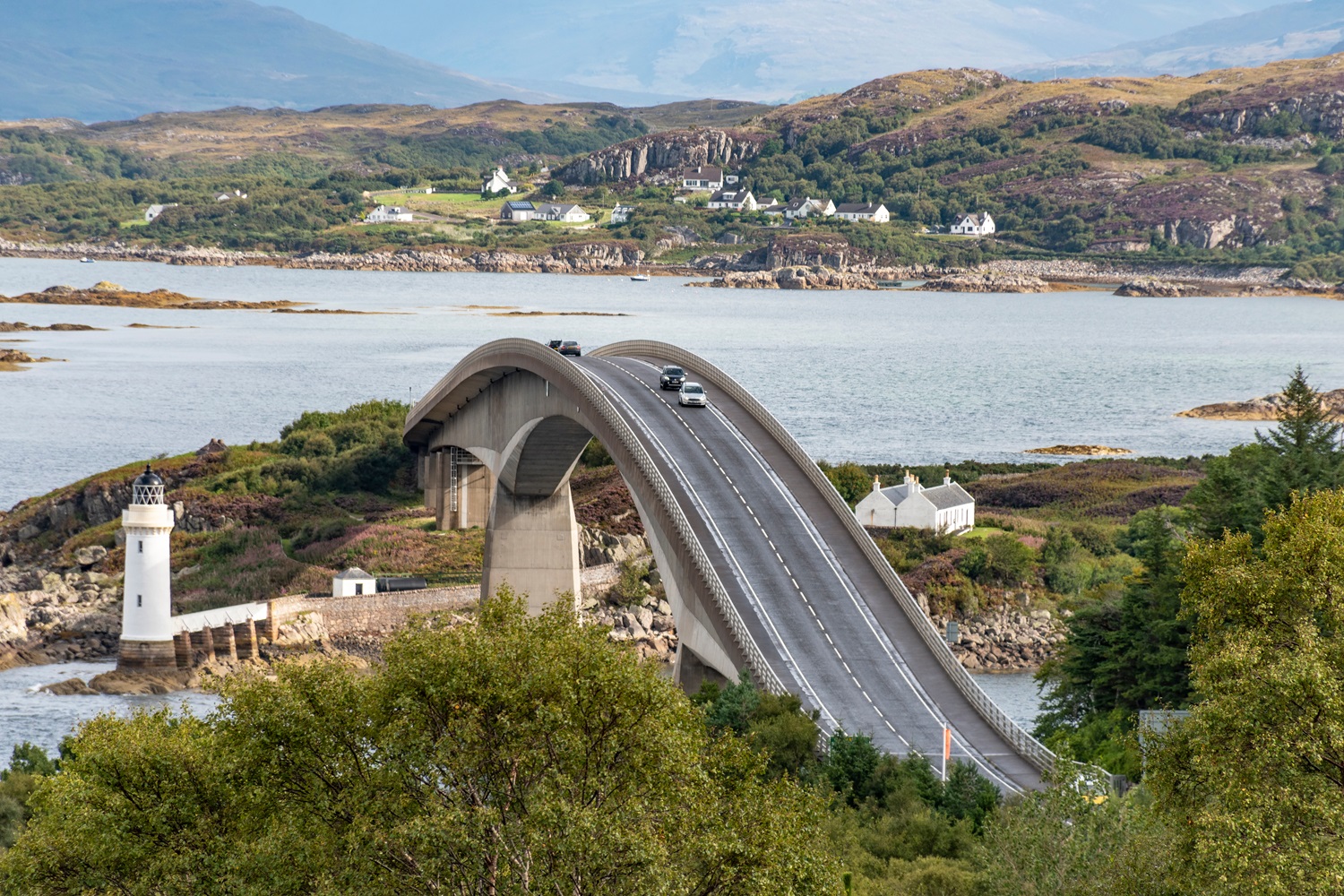
Portree, the Isle of Skye’s largest town, is a charming stop with colourful buildings lining the harbour. The town offers a blend of Scottish culture, with cosy cafes, shops, and local restaurants serving traditional dishes. It’s a great base for exploring Skye’s natural beauty, including nearby attractions like the Old Man of Storr and the Quiraing.
Portree also offers breathtaking coastal views, making it an ideal place to relax and enjoy the island’s scenery. Its welcoming atmosphere and strategic location make it a must-visit spot on your Isle of Skye road trip. The town also hosts a bustling weekly market, where you can pick up local crafts and fresh produce.
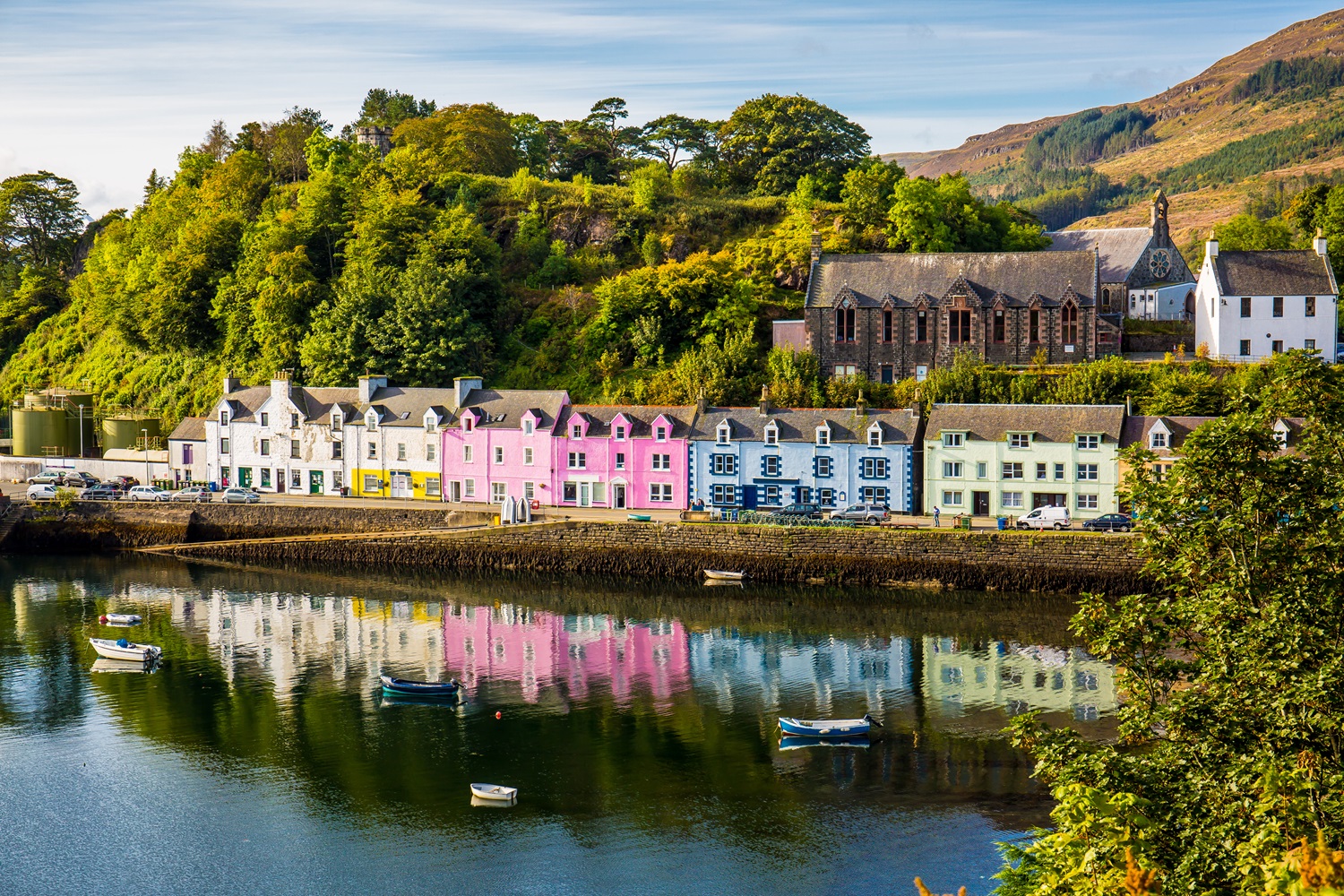
The Old Man of Storr is one of the Isle of Skye’s most famous landmarks, known for its towering rock formation. Located on the Trotternish Ridge, the Old Man stands out against the island’s rugged landscape, offering incredible photo opportunities. The hike to the summit is moderately challenging, but the views from the top are worth the effort.
On the way up, hikers are treated to sweeping vistas of Skye’s hills, lochs, and coastline. Whether hiking to the top or simply admiring the view from below, the Old Man of Storr is a must-see on your road trip. Be sure to visit early in the morning to avoid the crowds and capture the stunning views in the soft light.
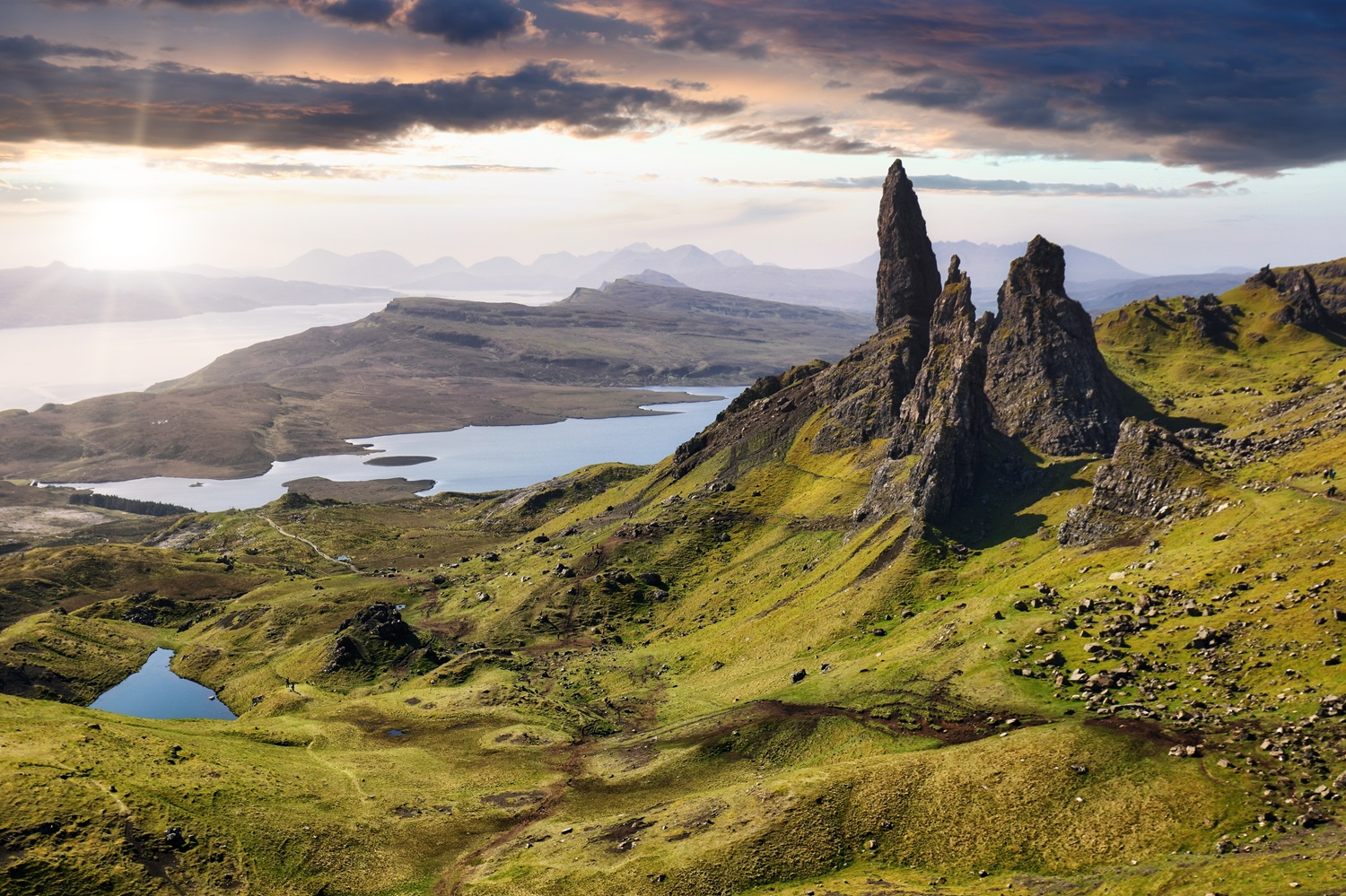
Take one of the most beautiful drives Scotland has to offer, drive from Glasgow to the Isle of Skye. The drive showcases some of the best landscape spots throughout various natural parks as well as beautiful castles and different cities. Beginning in lively Glasgow, you will be making your way up north through Loch Lomond to the famous Glencoe and into the glorious Highlands until arriving at the picturesque Isle of Skye.
For a more hands-on experience, you may want to hire a campervan from Compass Campers and take your time to visit each of the stops all the while enjoying Scotland's open roads.
Travelling by car overland from Glasgow, the A82 northbound leads you to the Isle of Skye while opening up Scotland's dramatic landscapes en route through the Highlands. As for this road trip, you're looking at about 216 miles of driving in approximately five to six hours (though many explorers make a day or two of the drive to enjoy attractions along the way).
Drive from Glasgow into the largest freshwater loch in Scotland, Loch Lomond, and beyond through beautiful stops such as Tyndrum, Glencoe and Fort William. Leaving Fort William, you will see you follow the famous A87 with a great photo spot, Eilean Donan Castle.
Take the Skye Bridge at Kyle of Lochalsh, which takes you from the mainland to the southern tip of the island. Alternatively, take a ferry from Mallaig to Armadale on Skye's southern shore, reached by the scenic "Road to the Isles," a detour from out of Fort William.
Whatever you opt for, the route offers stunning views and wildlife all along it. For something special, consider hiring a campervan from Compass Campers and making random stops along your route so that you can soak in more of Scotland's rugged beauty.
For the ultimate Glasgow to Isle of Skye road trip, hiring a campervan from Compass Campers offers both comfort and convenience. Our high-spec campervans are designed for adventure, featuring a crash-tested Evolution 2 roller bed, cosy Espacher diesel heating, and a fully-equipped kitchen with a gas hob, Panasonic microwave, sink, and Waeco fridge.
With blackout curtains, mood lighting, and a side overhead locker, you’ll have everything you need for restful nights.
Additional features like air conditioning, Apple Play, heated seats, and a 6-speed automatic transmission ensure a smooth, enjoyable drive. Compass Campers makes exploring Scotland’s scenic beauty effortless and stylish.
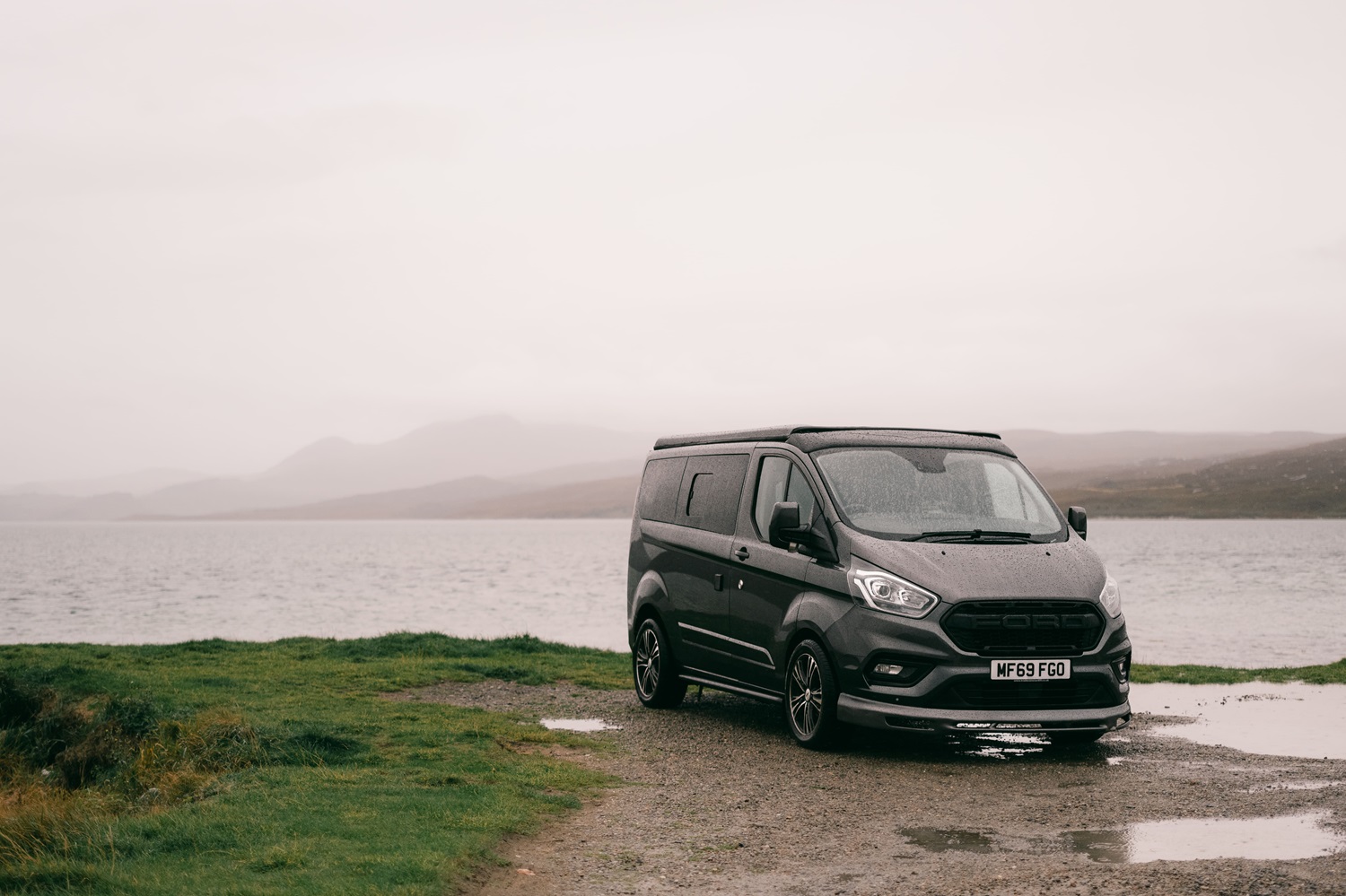
If you’re planning on taking your trip from Glasgow to the Isle of Skye and want to make the most out of it. There are some important stops we recommend you take along the way. These 10 locations can make your journey even more memorable:
Start your road trip in Glasgow; it is a lively city with a lot of history, culture, and art. Glasgow is known for its mix of old and newer architectural buildings, such as Glasgow Cathedral, the stunning Kelvingrove Art Gallery and Museum, and the Riverside Museum. Stroll through the West End, where you will find cute little cafes and boutique shops perfect for a pitstop.
The mixture of Victorian and modern architecture and green areas, including the Botanic Gardens and Kelvingrove Park, will occupy you plenty. Use it as a base before heading north, and take in Glasgow’s vibrant vibe to warm you up for the beautiful drive that is to come.

Loch Lomond is a tranquil treasure in the heart of Loch Lomond and The Trossachs National Park. It is known for its clear waters and surrounding hills, making it perfect for kayaking, enjoying a picnic, or soaking in the views. Luss is a picturesque village with cute cottages and a beach.
Loch Lomond is a little taste of peaceful beauty and outdoor activity to ease you into the flavours of the Highland landscapes that lie ahead, whether you opt for a boat cruise, forest walk, or local pubs.
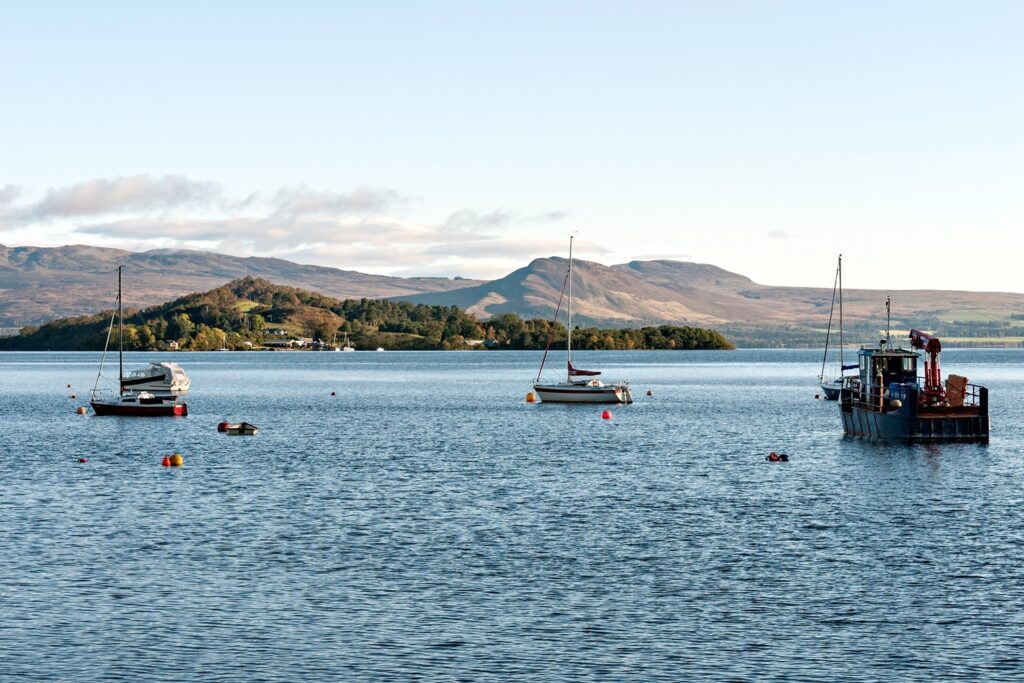
The historic town of Inveraray is located on the shores of Loch Fyne and makes for a lovely stop-off with various sights. Head to Inveraray Castle, an 18th-century treasure and home of the Duke of Argyll; you can explore its opulent halls and stunning grounds. The town also hosts the compelling Inveraray Jail — a former prison turned museum with stories of 19th-century life.
Dine in a lochside restaurant overlooking the waters of Lochs, shop for local food or take views of any of the mountains facing it. Inveraray is a sleepy little village filled with history and charm, one you won’t easily forget on your travels.
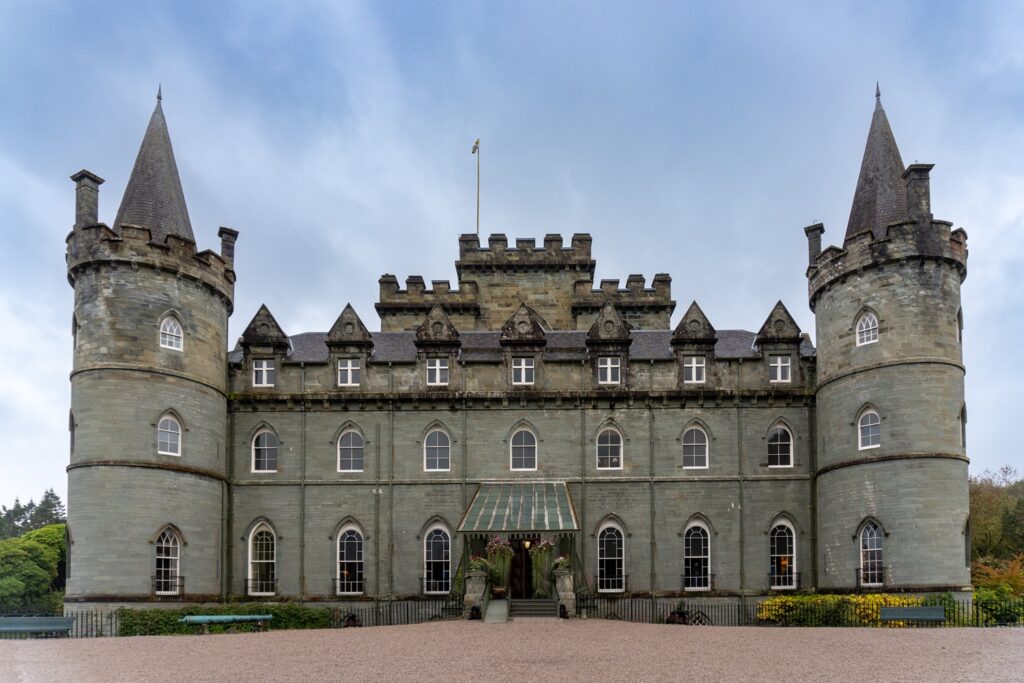
Kilchurn Castle, perched on the edge of Loch Awe, immediately transports you back to medieval times. The castle provides sweeping views of the surrounding mountains. Built in the 1400s, it looks particularly breathtaking during sunrise. A short walk to the castle gives plenty of opportunities for photos of the loch and surrounding hills.
Kilchurn is one of Scotland's most photographed castles, and its sombre presence makes it a sight to behold. The stone ruins and a bit about its history as a fortress make for an interesting little stop on your road trip.
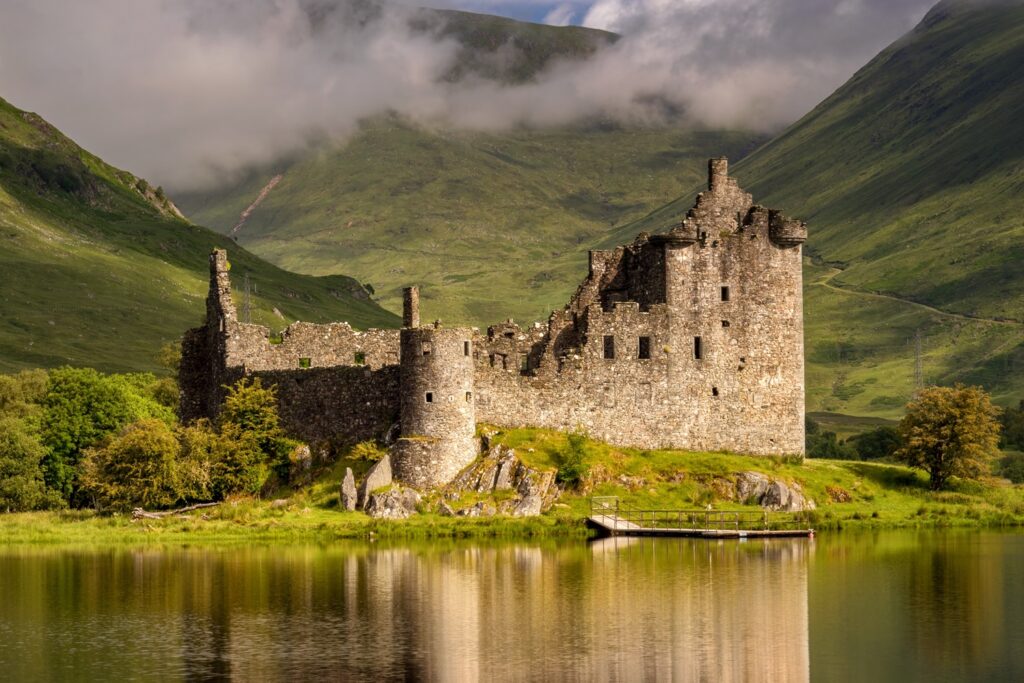
Glencoe, known for its striking scenery, is one of the top things to see on a Scotland road trip. Thanks to its painful past, it has been nicknamed the Valley of the Weeping. Glencoe charms travellers with its rugged peaks and soaring waterfalls between vibrant valleys.
Outdoor enthusiasts can enjoy the Lost Valley and the Pap of Glencoe hiking trails or simply take in a mile of stunning vistas from numerous lay-bys along this road. This area, pivotal to Scottish folklore and history, is scattered with national parks and pause points that offer powerful scenery at every turn.
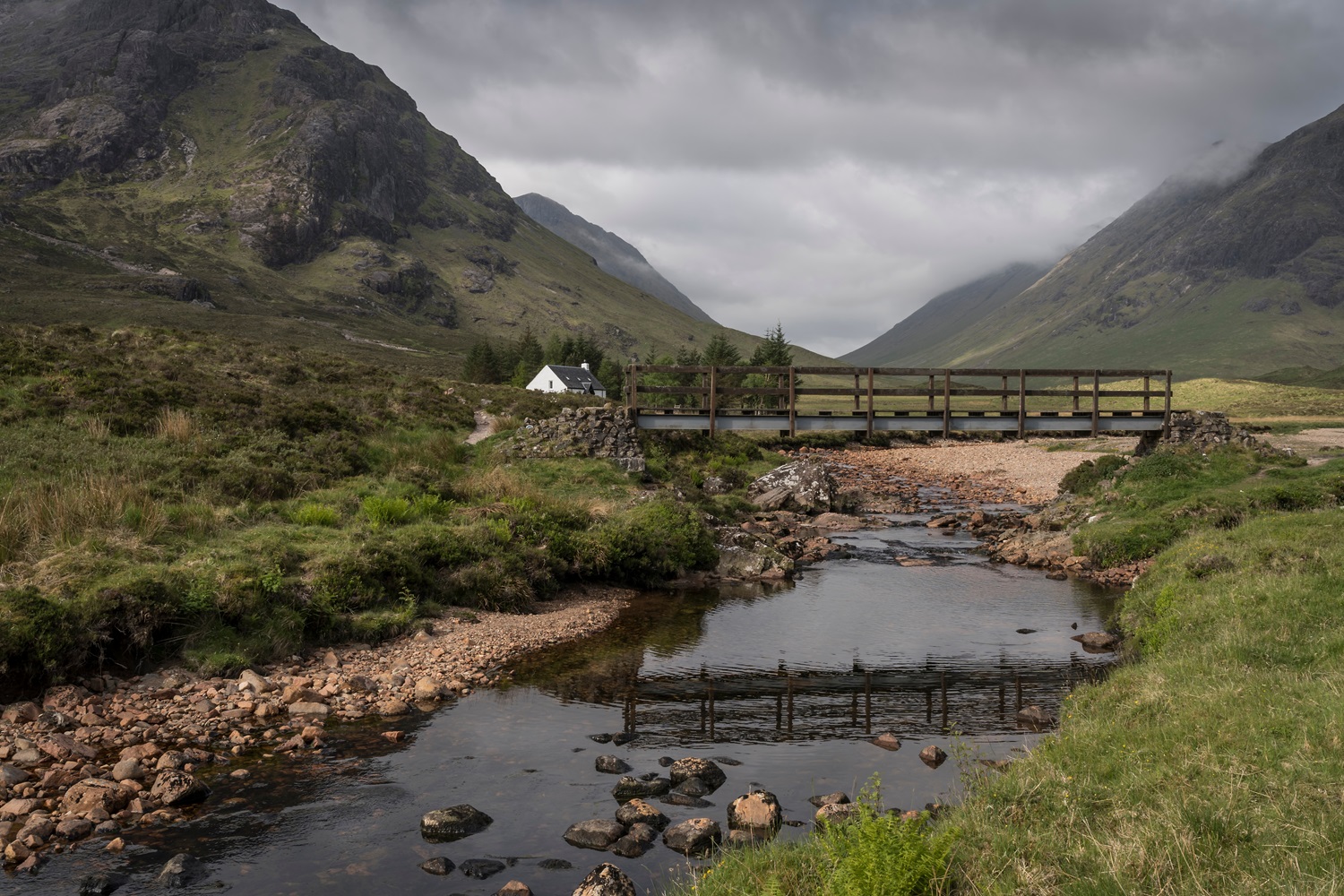
Ben Nevis is the UK's highest mountain and an attraction for climbers and other outdoorsy types. For the adventurous, the Mountain Track is a well-used route to the top with views over the Highlands. For a less active adventure, there are beautiful walks and viewpoints around Fort William with views of Ben Nevis.
The mountain, with its impressive size and often slightly covered in snow, is a divine image of the Highland landscape and one of the highlights for travellers who would like to fulfil their spirit with the beauty of Scottish wild nature.
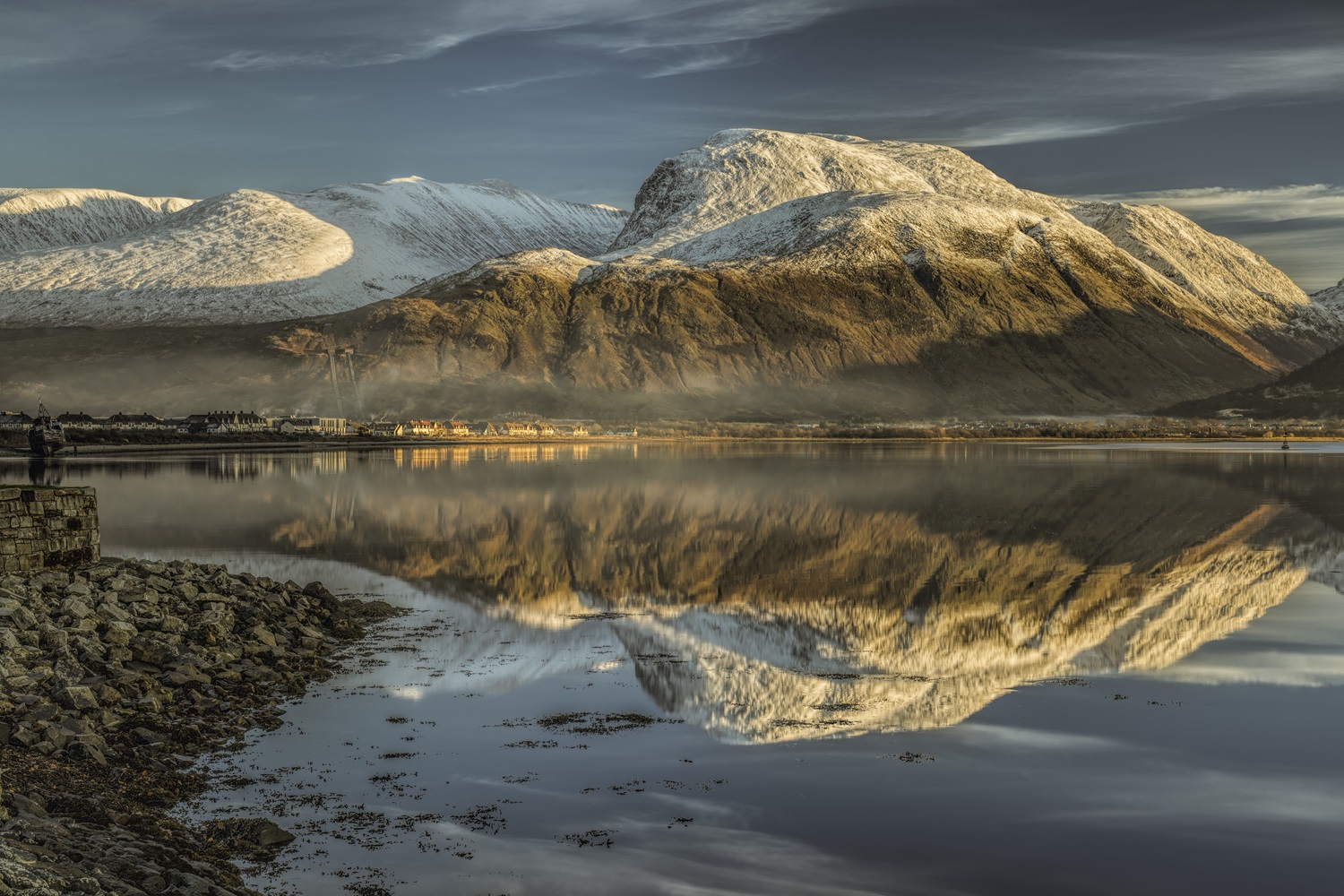
Fort William sells itself as the "Outdoor Capital of the UK" and is a bustling town serving up nature, history, and Highland hospitality. Fort William is a well-known outpost for nearby Ben Nevis (and many subsequent paths across Loch Linnhe). During the day, old buildings littered with comfortable cafes and little shops help bring life to its busy High Street, while in the evening, local pubs go on to do their part by keeping the town loud and lively until late at night.
Take a ride on the Jacobite Steam Train, known as the Hogwarts Express, for an unforgettable experience with breathtaking scenery on the way to Mallaig. Fort William is the perfect pause for those in Highland activity and culture.
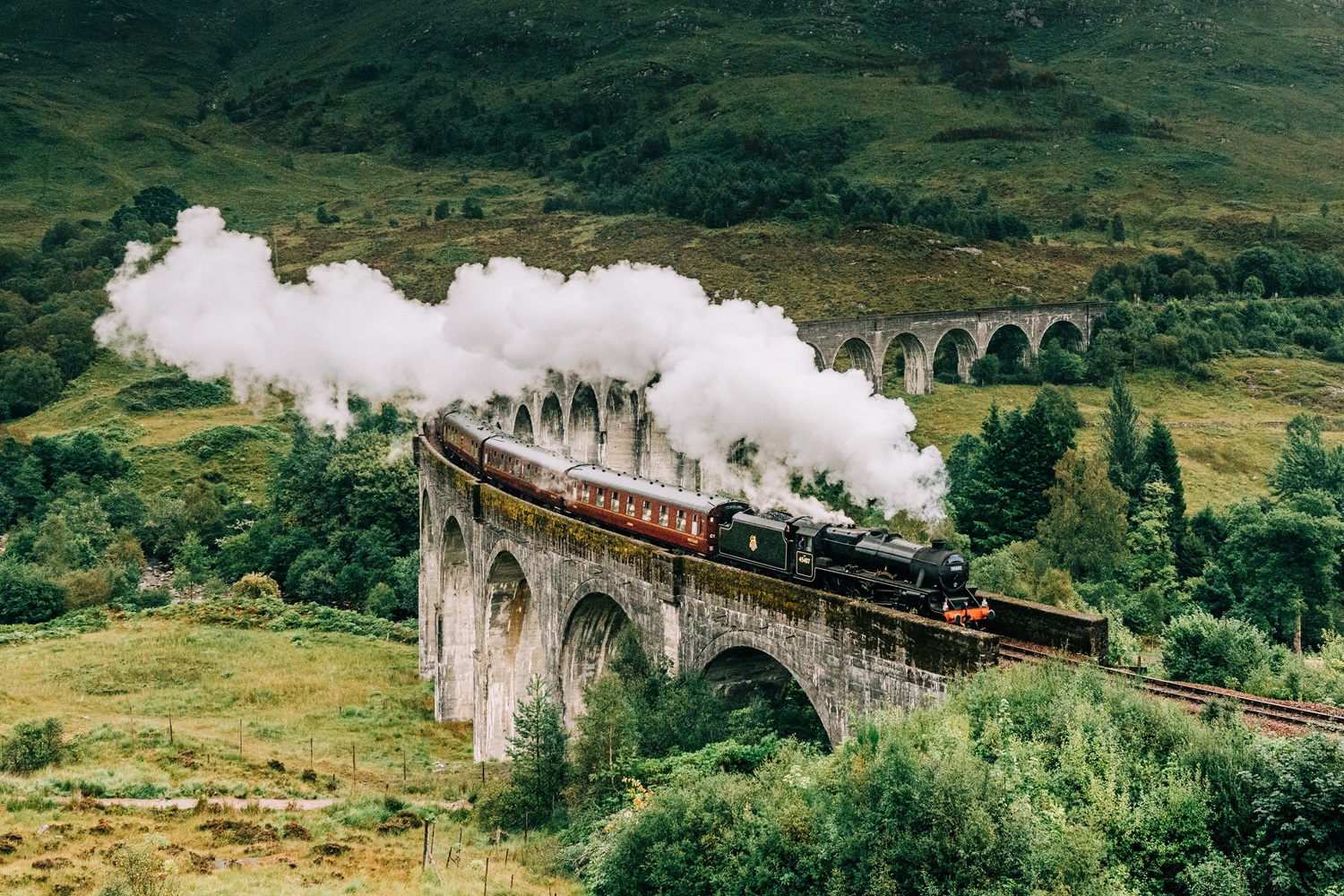
Situated where three lochs meet, Eilean Donan Castle is one of the most photographed castles in Scotland. With its rugged little island and a charming stone bridge connecting the fortress to the mainland, this mediaeval fort evokes a fairytale environment. The visitor centre offers an opportunity to explore the restored interiors of the castle and its history.
Eilean Donan's views are extraordinary, with the surrounding mountains and loch mirroring the ambience. The castle itself is beautiful, but in addition to that, it has also been featured many times in films and TV shows, so it serves as a nice little stop before heading across into the Isle of Skye.
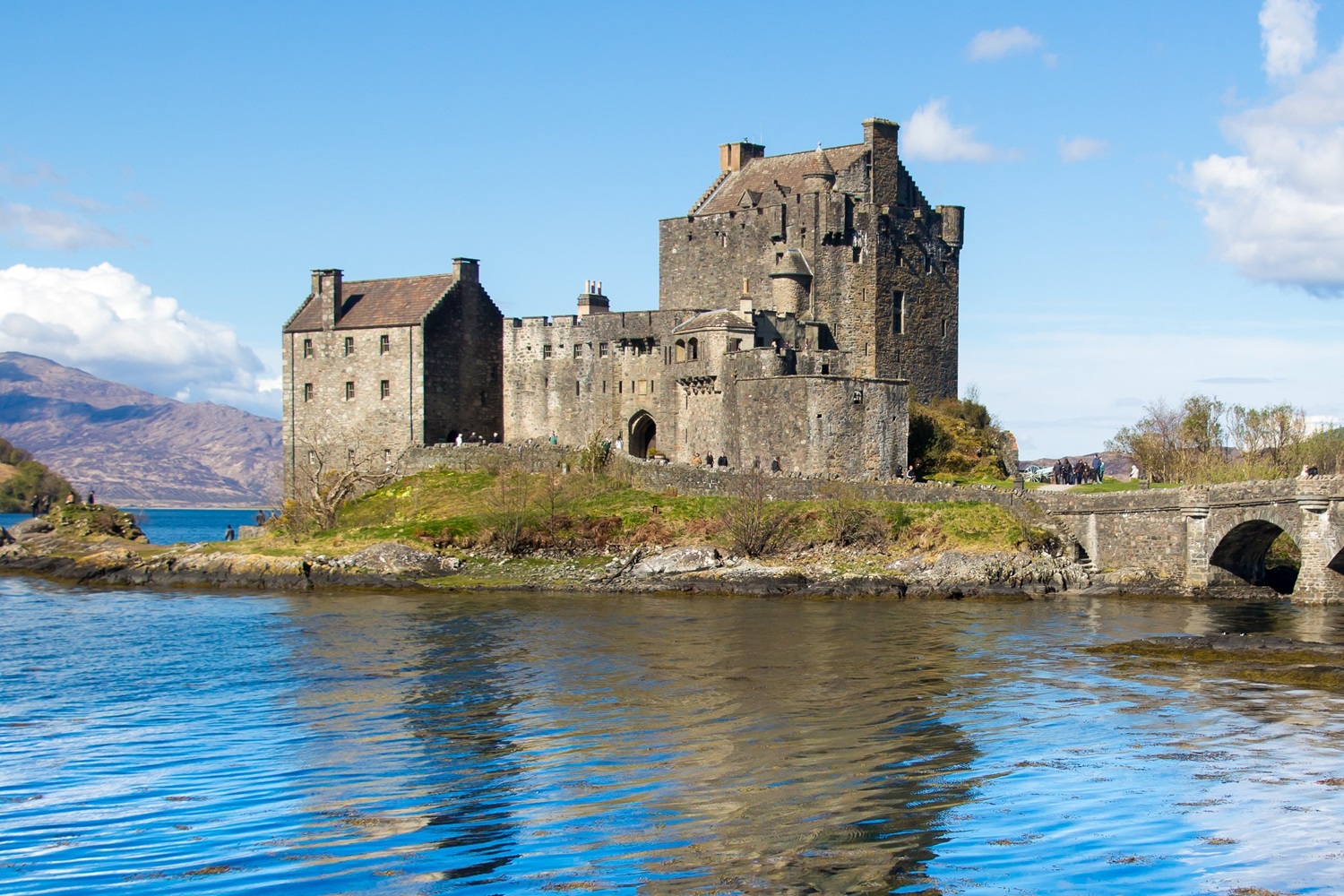
The colourful town of Portree is the beating heart of the Isle of Skye, and this makes for a perfect end to your road trip. Portree is a pretty harbour town known for its colourful houses, lively pubs and traditional restaurants. Walk along the waterside or browse local shops specialising in Highland crafts.
From here, you have easy access to Skye's natural attractions like the Old Man of Storr and the Quiraing. Portree has that lovely mix of community feels while also being near some glorious landscapes, so it is a hive of activity both as a base and as part of the experience on the Isle of Skye.

The Glasgow to Isle of Skye road trip is a fantastic journey through Scotland, bursting with picturesque landscapes, Scottish history and memories (from city vibes to complete ruggedness!). Loch Lomond, Glencoe, Ben Nevis and star attraction Eilean Donan Castle are points of interest. From visiting charming little villages to hiking along beautiful trails, you have a real Scottish adventure in the making here.
If you want to make the most out of your trip, check out the campervan options here at Compass Campers. Experience nature the way you want to, with equipped vans that deliver comfort and flexibility — so you can roam at your own pace. Book your campervan today with Compass Campers.
Famed for its stunning landscapes, ancient history and picturesque towns, there is no better place to embark on a road trip than Scotland. With twists and turns along the way, from the rugged Highlands to the postcard-perfect lochs, there is something to be discovered at every corner.
A three-day trip beginning in Edinburgh, Glasgow, Inverness, or beautiful Aberdeenshire gives you enough time to experience the essence of this wonderful country. Whether following winding roads that weave through breathtaking backdrops or vibrant local communities, Scotland is the perfect place for an unforgettable road trip. Let the adventure begin!
Road-tripping through Scotland is a unique experience that offers staggering landscapes, a deep history, and a vibrant centre-stage culture. From the rugged Highlands to tranquil lochs and picturesque coastal villages, this country's varied terrain will provide you with an amazing setting for your travels.
With many ancient castles, historic sites, and stunning hiking trails in all regions, you should find plenty to keep you busy on your next visit. Additionally, Scotland's warm hospitality and local cuisine make every stop memorable. This freedom to explore at your own speed will help you find those hidden gems and take you deep into the real world of Scotland as a road trip, making it an experience never to be missed.
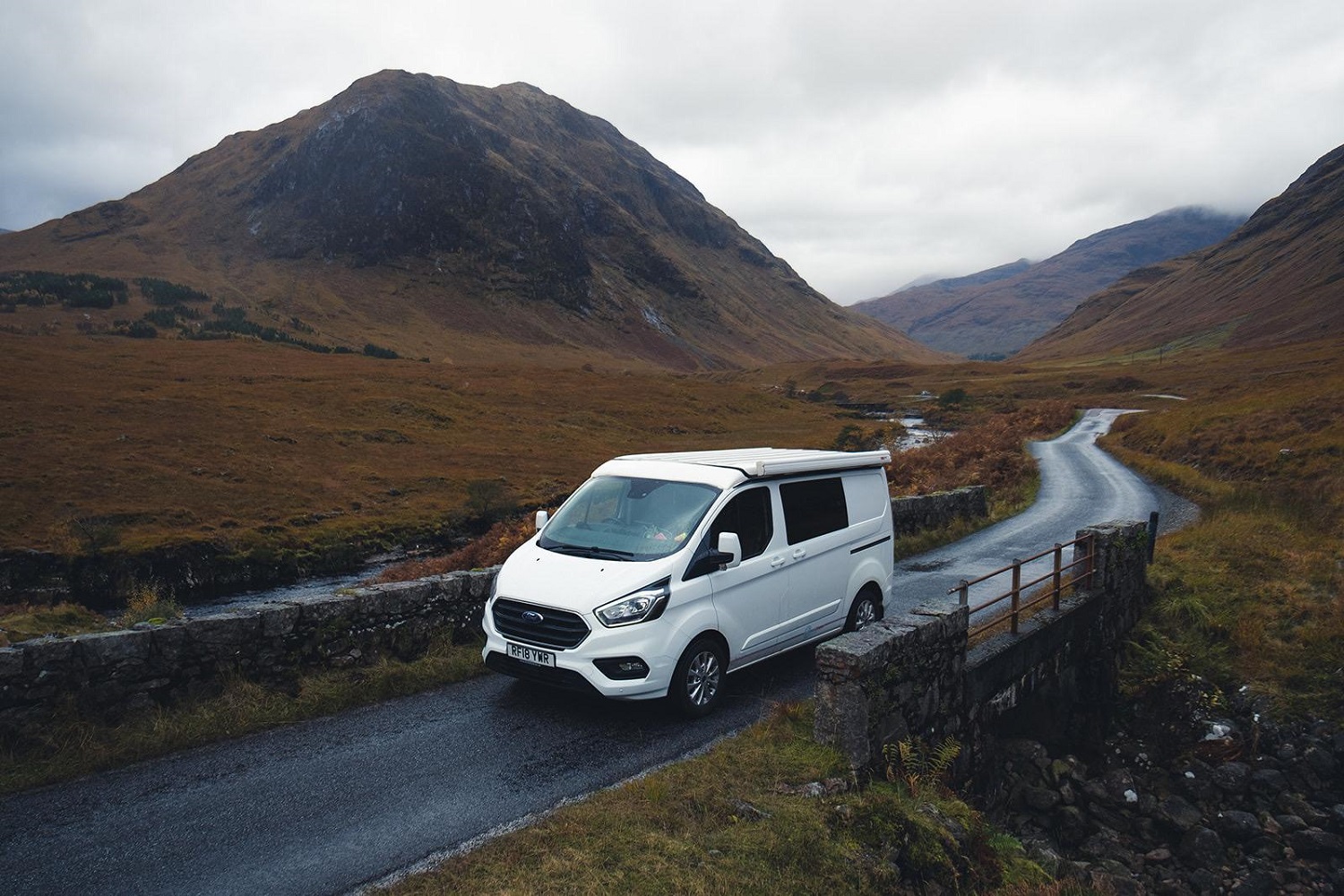
If you kick off your road trip in Edinburgh, go west to the magical Loch Lomond and the Trossachs National Park. Take the first day to explore the charming towns of Balloch and Luss, which offer lovely views of the loch and a short walk on the beach. After a refreshing dip in nature, make your way down to the lively Stirling. Stirling Castle is a key historical attraction, and the rest of the streets are filled with sweet shops and cafes.
On day two, head north to the Highlands and take in the dramatic Falls of Dochart at Killin before driving on to Oban – officially ‘The Seafood Capital of Scotland’. Feel free to indulge yourself in fresh seafood, and take your time drinking while taking in the sights of the coastline all day. Or hop on a ferry out to reach one of the islands. Mull or Iona most readily come to mind.
End your last day by driving back to Edinburgh, taking the Glencoe route. This iconic valley, with its stunning landscapes, also offers awesome hiking opportunities. On your way back to Edinburgh, think about all the wonderful views and events on your Scotland road trip through beautiful environments with a long history.
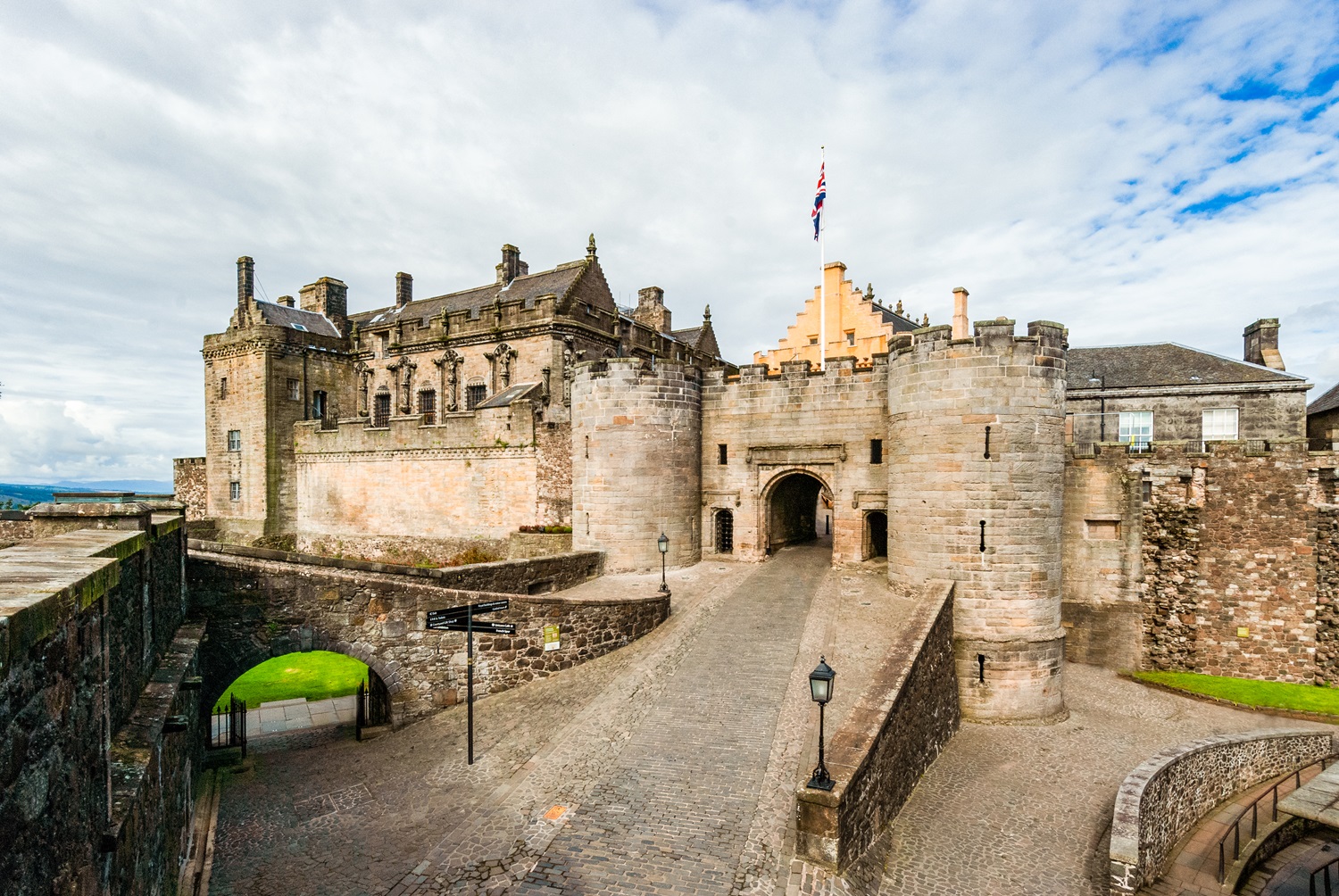
From Glasgow, travel to the beautiful Loch Lomond for your first taste of Scottish scenery. An hour away, with breathtaking views and the fresh outdoors. Your first day of travelling can be spent exploring the cutesy village of Luss, strolling along the shores of Loch Lomond or heading out on a boat to see it all from an alternative perspective. On a lazy afternoon, stop by at Balloch Castle, a lovely parkland for picnicking in the lap of nature.
On the second day, take the day to reach the Highlands but stop for a break in the lovely village of Crianlarich. Drive from there to scenic Glencoe Valley, which is famed for its rocky landscapes. Alternatively, go hiking in the region or pop into the Glencoe Visitor Centre for a spot of historical knowledge. Continue to Fort William afterwards, the wheelbase for exploring Ben Nevis, the highest peak in the United Kingdom. Retire for the night, having a delicious dinner at Fort William.
Return home to Glasgow, stopping at the historic Doune Castle, known for its appearances in various films and TV series and shows. Spend time exploring the castle and the attractive area around it before returning to lively Glasgow and reflecting on your road trip memories.
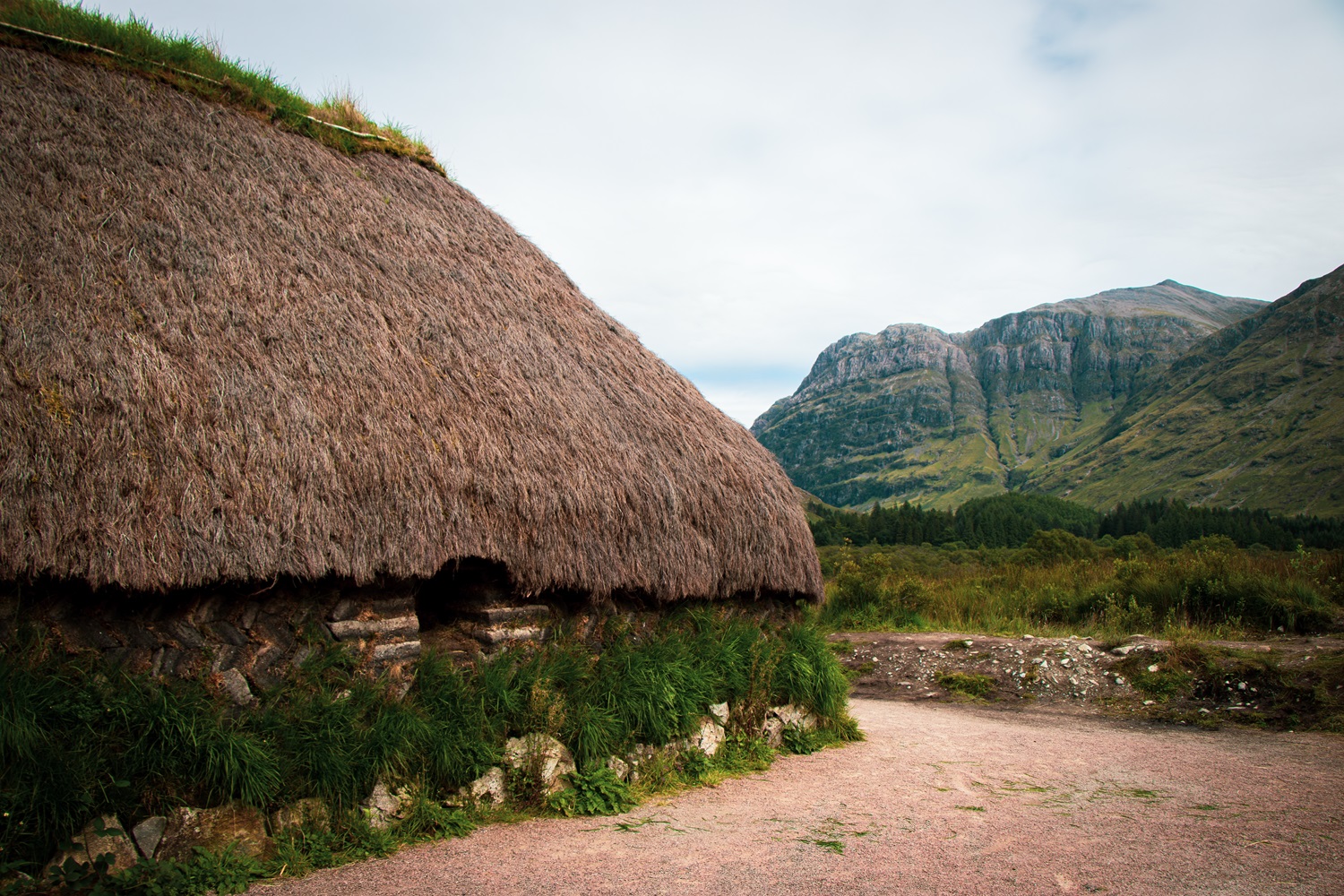
Set off on your journey in Inverness, the capital of the Highlands and escape down to scenic Loch Ness. Loch Ness is the infamous home to the legendary Nessie or the Lochness Monster. Grab a boat tour through the loch for the surrounding mountain views and take a trip to Urquhart Castle, nestled on its edge. Follow this with a stroll around the pretty streets of Drumnadrochit, home to the Loch Ness Centre and Exhibition, which provides information on the loch's folklore.
On day two head on out to fit into the North Coast 500 route, showing you the best of what the Highlands have to offer. Take a drive to the beautiful village of Dornoch, home to a stunning beach and ancient cathedral. From there, continue up the coast to Tain and Dalmore Distillery, where you can take a tour and taste this famous whisky.
Visit the epic landscapes of the Cairngorms National Park on your last day. Embark on a guided tour of one of the many scenic trails for some hiking or cycling. Head back to Inverness, stopping at photogenic locations on the way. Contemplate the adventures you have had; surrounded by breathtaking landscapes and vibrant cultures in wild Highlands.
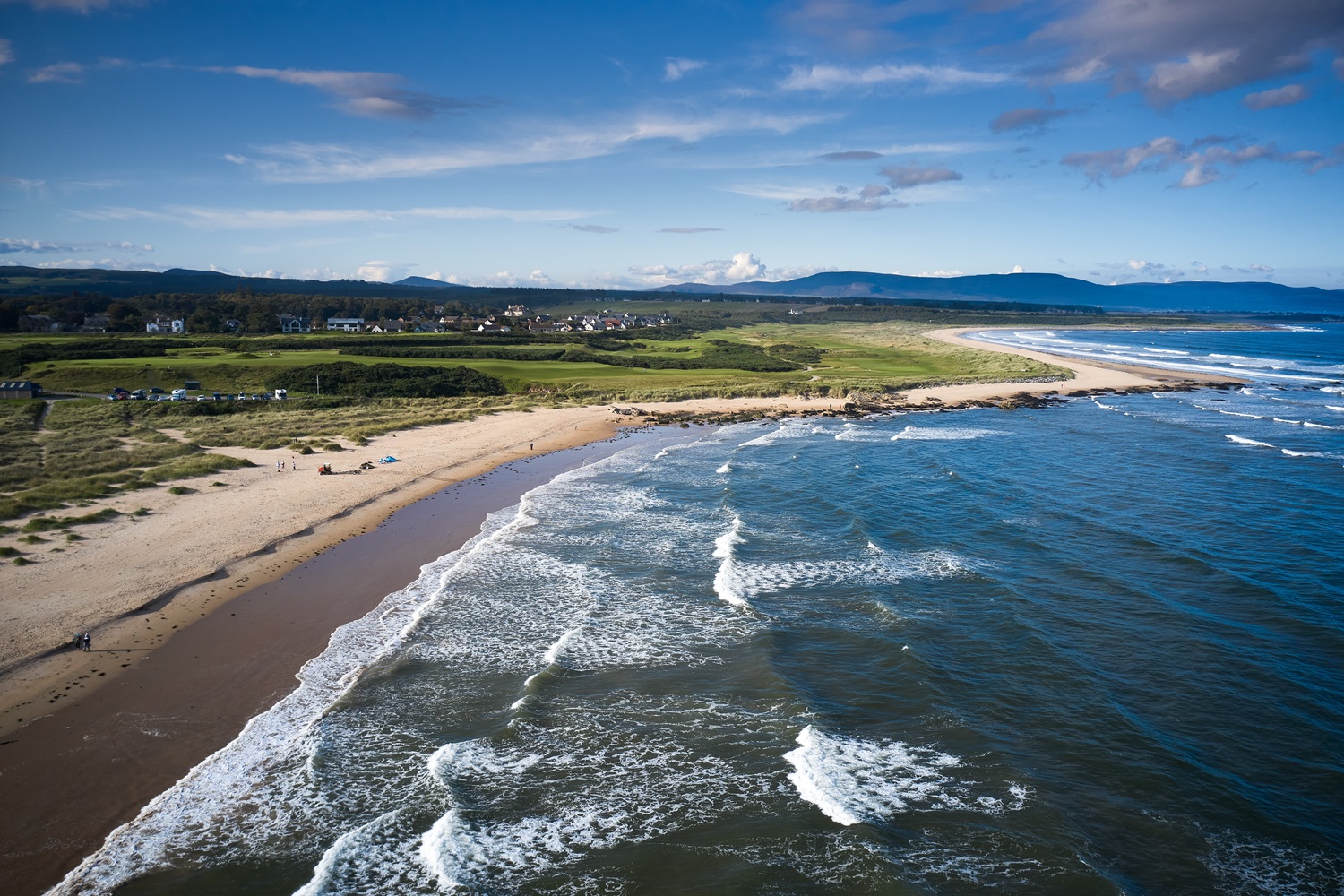
Travel approximately 100 miles around Aberdeenshire on a delightful 3-day road trip, passing through northeast Scotland's picturesque landscapes and character-filled towns. Begin your trip in the once-dubbed “Granite City” of Aberdeen. The whole city is like a living teaching museum due to an array of culture-rich heritage sites. Walk through the city centre, visit Marischal College and jet along the attractive beachfront. Why not try out some fresh seafood at a local restaurant, then set off north-west for Ballater, the idyllic village in the heart of Royal Deeside?
Spend the morning of day two exploring Balmoral Castle, a lovely summer home for the royal family in Britain. Stroll the grounds and enjoy a walk through the beautiful gardens. Moving onto your next destination should be Braemar, which is also a wonderful place to see the spectacular landscapes of Cairngorms National Park. There is lots of space to hike around or just be at one with nature.
On your last day, drive to the picturesque coastal village of Cruden Bay and check out Slains Castle, a historic setting that inspired Bram Stoker's Dracula. On your return to Aberdeen, take a look at the beautiful coastline. Follow this Aberdeenshire road trip, and you will be left with rich history, stunning scenery, cultural highlights, and, most importantly, memories of your adventure.
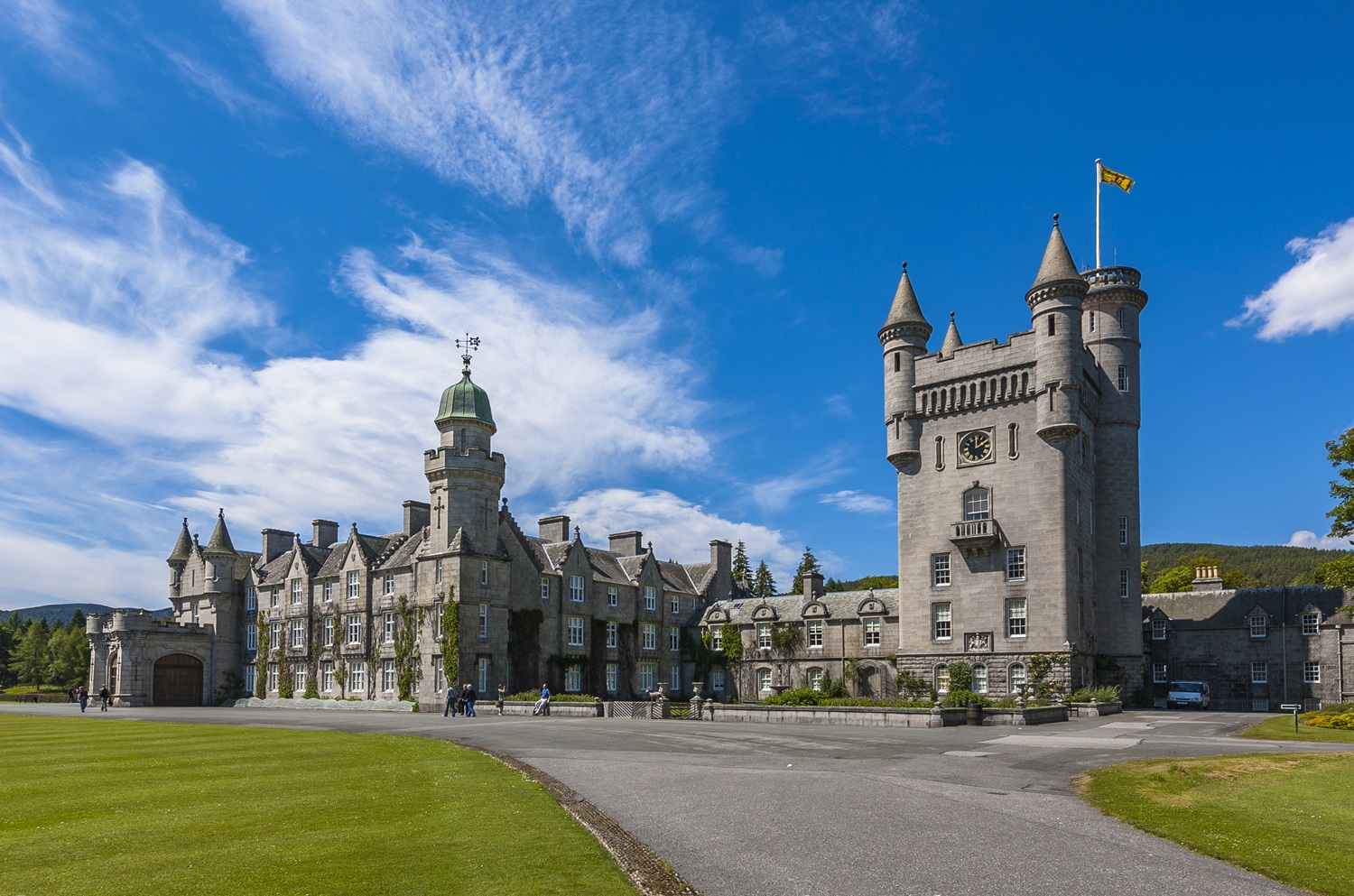
Hiring a campervan from Compass Campers for your 3-day road trip around Scotland is a fantastic way to explore the stunning landscapes and hidden gems at your own pace. With a range of well-equipped, comfortable campervans, Compass Campers ensures you have everything you need for a memorable adventure.
Enjoy the flexibility to travel from vibrant cities to the tranquil countryside, all while having a cosy home on wheels. Our friendly team provides excellent customer service and helpful tips for your journey, ensuring a smooth experience. Contact us today so we can discuss your needs and find you the perfect campervan for your Scottish journey.
One of the most spectacular scenic trips in Britain, a journey around Scotland's west coast offers jaw-dropping landscapes and unforgettable experiences. Experience the rugged mountains and tranquil lochs, along with its historic castles and vibrant coastal towns. It is a real paradise for all adventurers as well as nature lovers.
Wherever you turn, there is something different to be seen and experienced—the dramatic mountains of Glencoe or the island feel of Mull and Skye. Here, we list eight of the best sights to see if you are taking a west coast Scotland road trip and want to see more of its wild beauty.
Ready to start the best west coast Scotland road trip? Here are the destinations you cannot miss on the way:
Oban is one of Scotland's most popular and family-friendly resorts. It is known as the "Gateway to the Isles" and boasts many attractions and activities. This makes it an ideal base from which to explore the west coast of Scotland or take ferries to the Inner Hebrides. Amongst its top attractions are the colosseum-shaped McCaig's Tower, which boasts spectacular views across the town and islands. The Oban Distillery, with its world-famous single malt, is an inescapable stop for whisky lovers.
Oban is a port town whose harbour, alive with fishing boats, boasts some of the freshest seafood in Scotland. Nearby, explore castles like Dunollie or hop a boat to the Isle of Kerrera for historic ruins and beautiful walking paths. A laid back town that is on the doorstep of some epic coastlines and islands makes Oban an ideal base for discovering the beauty of Scotland’s west coast.

A delightful combination of wilderness, culture and wildlife can be experienced on the Isle of Mull - just a short ferry trip from Oban. The island's capital, Tobermory, has a colourful waterfront and local feel. Wildlife lovers will be in their element on Mull, where sightings of golden eagles, otters, and red deer are the norm. Boat trips to neighbouring islands such as Staffa offer puffin spotting and seal watching. The magnificent Fingal's Cave on Staffa, with columns of basalt crammed close together and waves that thunder inside the dark cavern, is a sight to behold.
Duart Castle, which rests upon a cliff overlooking the sea, is the ancestral home of Clan Maclean and is worth visiting for fans of history. Its various terrains range from sandy beaches to mountainous peaks, inviting intrepid trekkers to gaze at nearby islands and sparkling oceans once they arrive. For anyone looking for nature's beauty and peace, it is one stop you will remember forever.

The drive through Glencoe is one of the most picturesque and historic areas in Scotland. This deep, dramatic valley boasts towering mountains, lochs, and waterfalls. A haven for lovers of the outdoors, there are endless hikes at different levels with lots of climbing opportunities. Devil's Staircase and Pap of Glencoe are must-do routes, offering wide-ranging valley vistas and beyond to the Highlands.
The Glencoe site is not just a beautiful place but also a historical one, home to the Glencoe Massacre of 1692, where Campbell soldiers killed many MacDonald clan members they had encouraged into their homes and then betrayed. If you want to find out more about these sad goings on at Glencoe, visit the international visitor centre that looks back in time at the geology and history of this special area.
Whether you want to experience the great outdoors or learn a little about Scottish history, Glencoe´s dramatic and rugged landscape must be one of the most amazing places on Scotland's west coast.

Loch Lomond in Scotland is the largest freshwater lake in the country and one of its most iconic beauty spots. Its gorgeous combination of steep blue waters, timber-clad banks, and verdant valleys is a magnet for outside fanatics. The loch is popular with kayakers, boaters and paddle boarders, but the nearby hills mean you're spoilt for choice when it comes to walking and cycling routes too.
The pretty stone cottages in Luss are a regular stop for those who want to enjoy the silent charm of the region and lakeside. For the more adventurous, Ben Lomond provides those who reach the summit with a panoramic view overlooking the loch and beyond. A wealth of wildlife enjoys Loch Lomond as its habitat, including ospreys and red deer. Wherever your sense of adventure leads you, Loch Lomond has plenty to offer both adrenaline seekers and relaxers.

Lying in the shadow of Ben Nevis, Fort William is a mecca for wannabe adventurers and an access point to the Scottish Highlands. The UK's highest mountain, Ben Nevis, lures hikers and climbers from across the globe with its difficult ascents mixed in with stunning panoramas overlooking the surrounding countryside.
Fort William offers plenty of activities for those less inclined to climb, including scenic walks along the Caledonian Canal and exploring the nearby Glen Nevis, where waterfalls like Steall Falls offer picturesque hikes.
It is also home to the Jacobite Steam Train, which takes passengers along one of the most beautiful railway journeys in the world and crosses over the Glenfinnan Viaduct, as seen in Harry Potter. Combining magnificent scenery, historical sites and outdoor pursuits, Fort William has long been a prominent destination for anyone touring the western coast of Scotland.
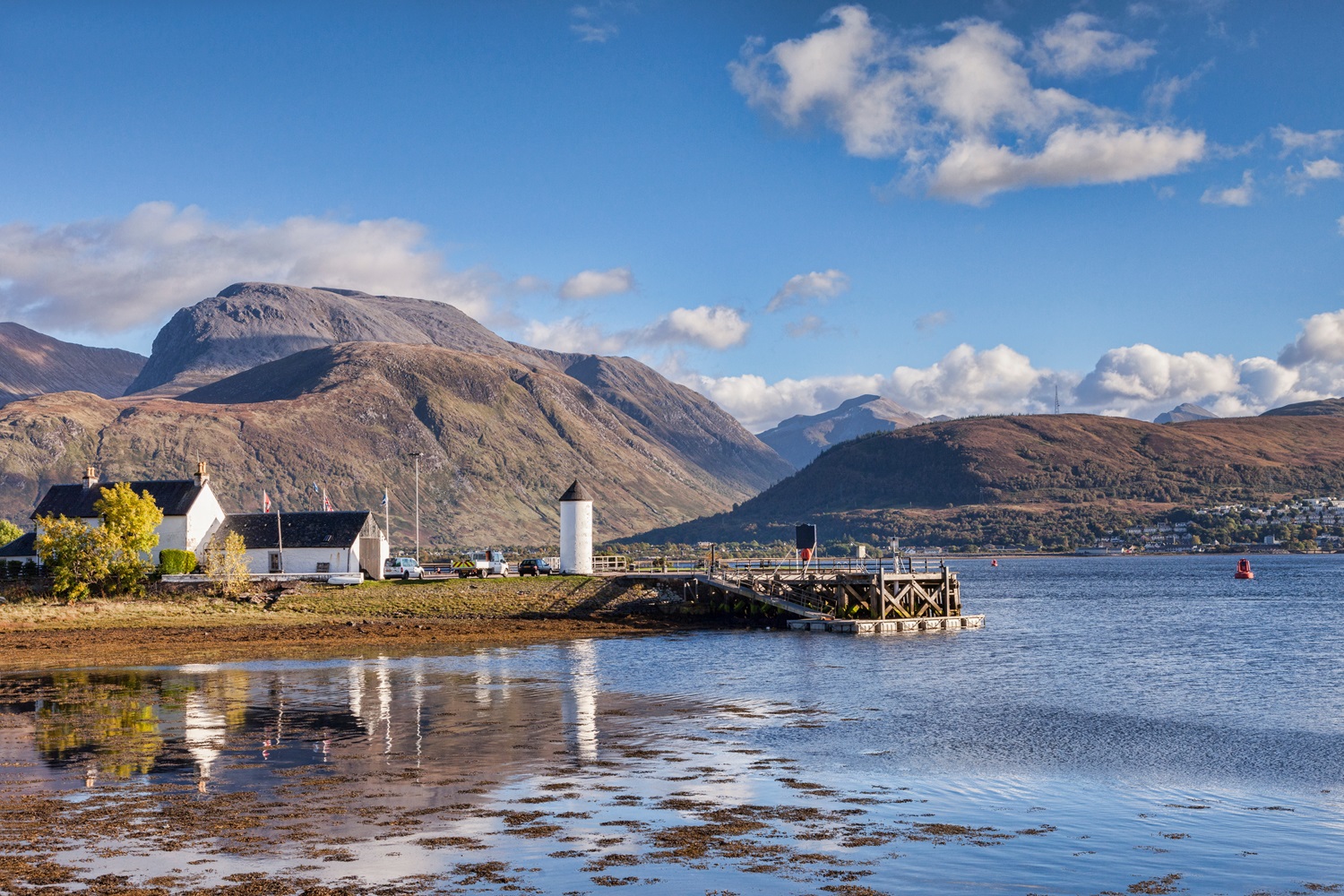
The Ardnamurchan Peninsula is one of Scotland's most remote and unspoilt places, so it truly offers a chance to escape into nature. It is the most westerly point of mainland Britain, marked by an impressive lighthouse, from which you can see breathtaking views across the Atlantic Ocean and towards local islands. The peninsula is home to otters, eagles, and deer and provides lovely walks along empty beaches and through ancient woodlands.
One such gem that is worth the effort is Sanna Bay. It has miles of white sandy beaches backed by a turquoise ocean, perfect for a lazy day picnic and amble. Ardnamurchan's wild beauty and the feeling of isolation make it an excellent place for tourists who want to evade the masses and see the Scottish wilderness in its pure state. With a mix of marine and backcountry, it is among the best on any west coastal highway journey.
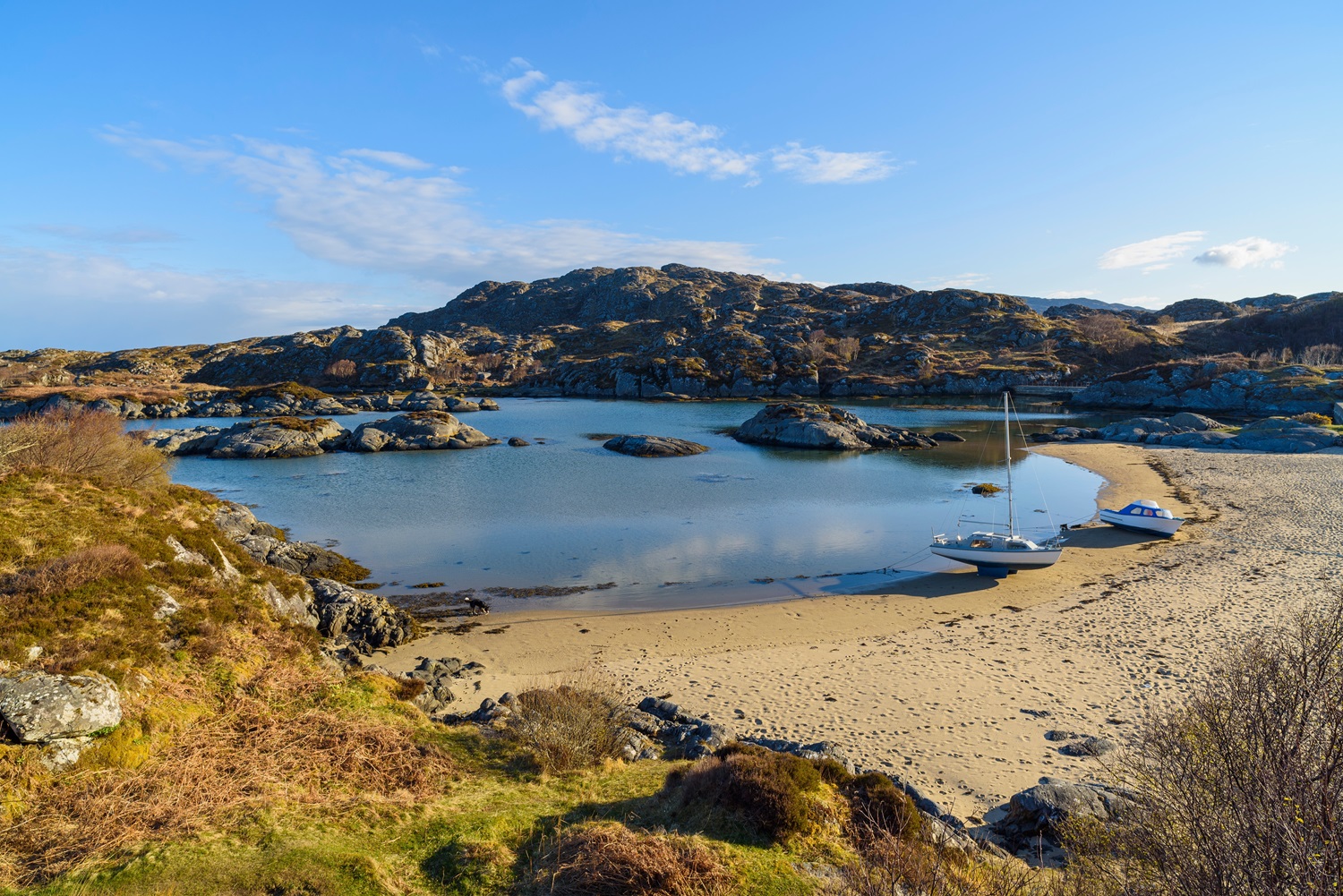
The Isle of Skye is one of Scotland's most iconic locations, famous for its rugged landscapes and fascinating history, widespread throughout the island. Among the island's natural attractions are the Fairy Pools, a collection of crystal-clear waterfalls and pools, and the Quiraing, which boasts some of the best hiking trails in Scotland. The Old Man of Storr, a striking upthrust rock, is another unmissable sight, and the hike to it is relatively gentle because of the stunning vistas over land and sea.
Enjoy Dunvegan Castle, home of Clan MacLeod and the Talisker Distillery, where Skye whisky demonstrations can be enjoyed. On the Island of Skye itself, the capital Portree is a pretty town with galleries, shops and pubs along the bustling harbourfront. Whether you're interested in exploring natural wonders and historical sites or simply enjoying the tranquillity of island life, Skye has something for everyone.
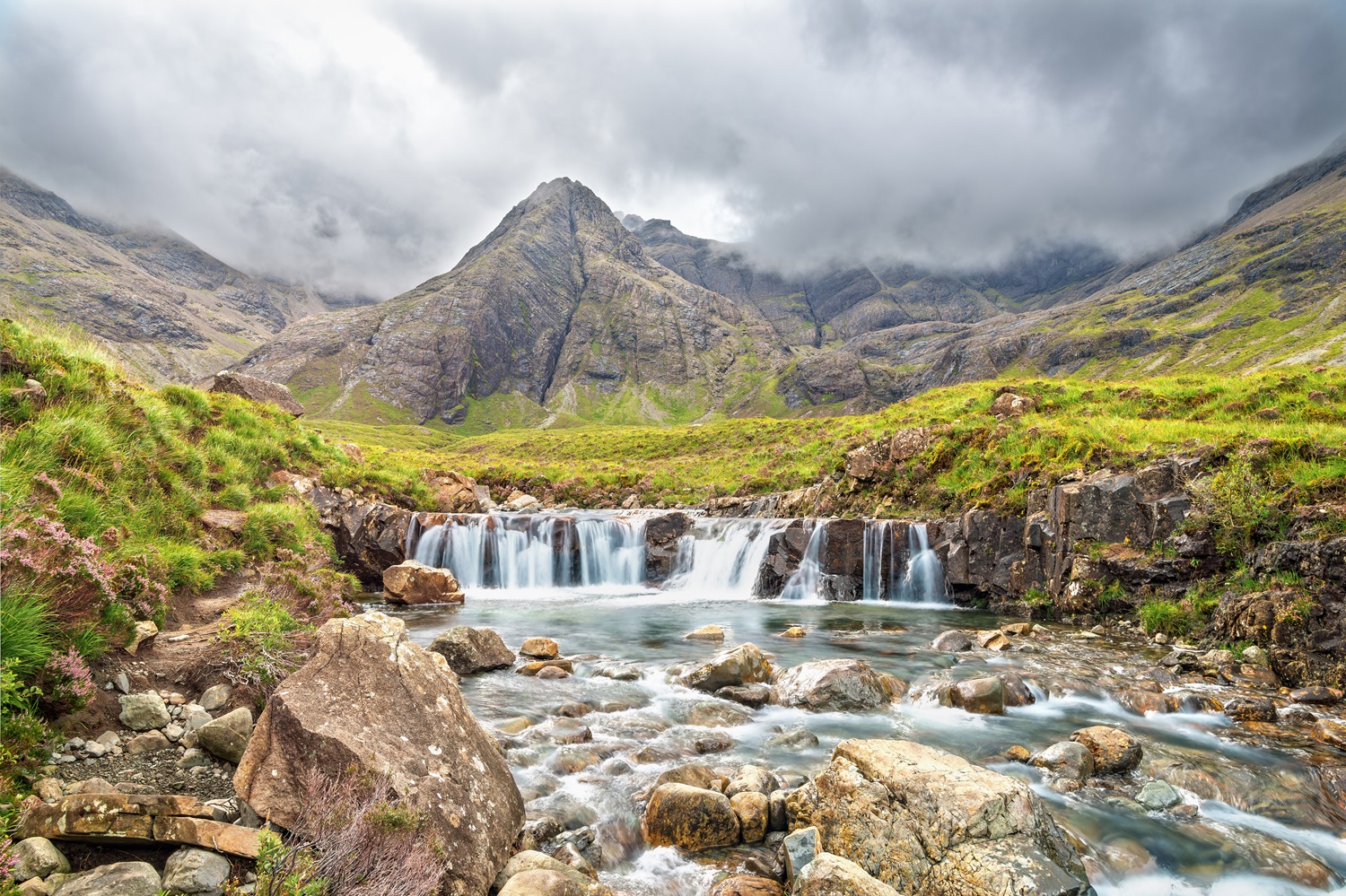
The Kintyre Peninsula offers some respite from the more packed-out tourist spots on the West Coast. Take a look at Kintyre, one of Scotland's hidden gems with rolling hills, untouched beaches and an interesting history. Named the whisky capital of the world, Campbeltown has a few internationally recognised distilleries, such as Springbank and Glen Scotia, where tours and tastings can be booked. For history fans, the Kintyre Way offers a long-distance footpath that winds past historic sites and through picturesque villages with views across the sea.
The nearby Isle of Gigha is easily accessible by ferry and offers stunning beaches and gardens. Kintyre’s rugged coastlines and tranquil atmosphere make it ideal for a relaxing road trip stop, with wildlife spotting, hiking, and golfing opportunities. Kintyre provides a perfect blend of natural beauty and cultural heritage for those looking to explore a quieter corner of Scotland’s west coast.

To really explore this part of the country, hire a campervan from Compass Campers and take that west coast Scotland road trip you will always remember. Let our spacious, fully furnished vehicles take you wherever you want to go, at your own speed, in comfort and style.
With Compass Campers, you can expect flexible rentals and a top-notch experience for a memorable journey. Contact us today to talk to one of our experts and arrange a booking.
Scotland is, of course, famous for its natural beauty, Celtic heritage and colourful culture, but one thing special about it is the surreal Northern Lights. The Aurora Borealis is the name given to this natural light display that streaks across the night, likely leaving everybody fascinated with its bold greens, purples and pinks wherever they can see it.
Whether you are an experienced aurora hunter or a complete novice, the wilderness of Scotland offers the ideal canvas for this awe-inspiring event. In this guide, we’ll explore the best spots to experience the Northern Lights, along with tips to enhance your adventure.
Being on its rugged coastline, Aberdeenshire presents an excellent opportunity to witness the Northern Lights. Favourites such as Cruden Bay and Peterhead are embracing their dark skies on a burgeoning basis. The region's primitive landscapes, rolling hills, and serene beaches allow a breathtaking aurora display.
Local guides can help the guests to national parks, which are the perfect viewing spots for this interception of nature. The historical castles, which are part of its vista, only serve to make the whole experience more magical and make it a must-see for those keen to witness the Northern Lights.
The Shetland Islands are located far north of the Scottish mainland and make for a great base to hunt the Northern Lights. The islands have long winter nights and little light pollution, making it a perfect vantage point for viewing the night sky. It is why places like Unst and Fetlar are known for their clear skies, making them great spots to see the Aurora Borealis.
This magnificent backdrop is provided with a little help from the rough coastlines and high cliffs; the lovely landscapes are distinct between them. The local folklore surrounding the Northern Lights also adds more to the experience, as Shetlanders tell tales of the magical lights dancing across their skies.

Another great place to see the Northern Lights in Scotland is Orkney. With their northern location and far-flung status, the islands are also ideal for witnessing the Aurora Borealis. The Ring of Brodgar and Skara Brae are sweeping places with an incredible night sky backdrop, lit up on good nights by the ethereal northern lights.
The islands are characterised by a unique ambience due to their rich history and temples, allowing tourists to find pleasure in both natural and cultural wonders. Most of the local accommodations can also set up an alert to ensure you don't miss that spectacular sight.
The Isle of Skye is a beautiful destination no matter the time of year, but winter nights are hard to beat when viewing the Aurora Borealis. The optimum time to see it in Scotland is between the beginning of winter and the end of February, and locations like Quiraing and Neist Point are perfect vantage points.
The stunning surroundings, rocky mountains, and sea cliffs make it the perfect site for the spectacle. Many local guides offer tours to chase the lights and stargazing, which adds to the experience. A strong sense of isolation and the stunning landscapes on the Isle of Skye make it an unforgettable location to see the aurora.
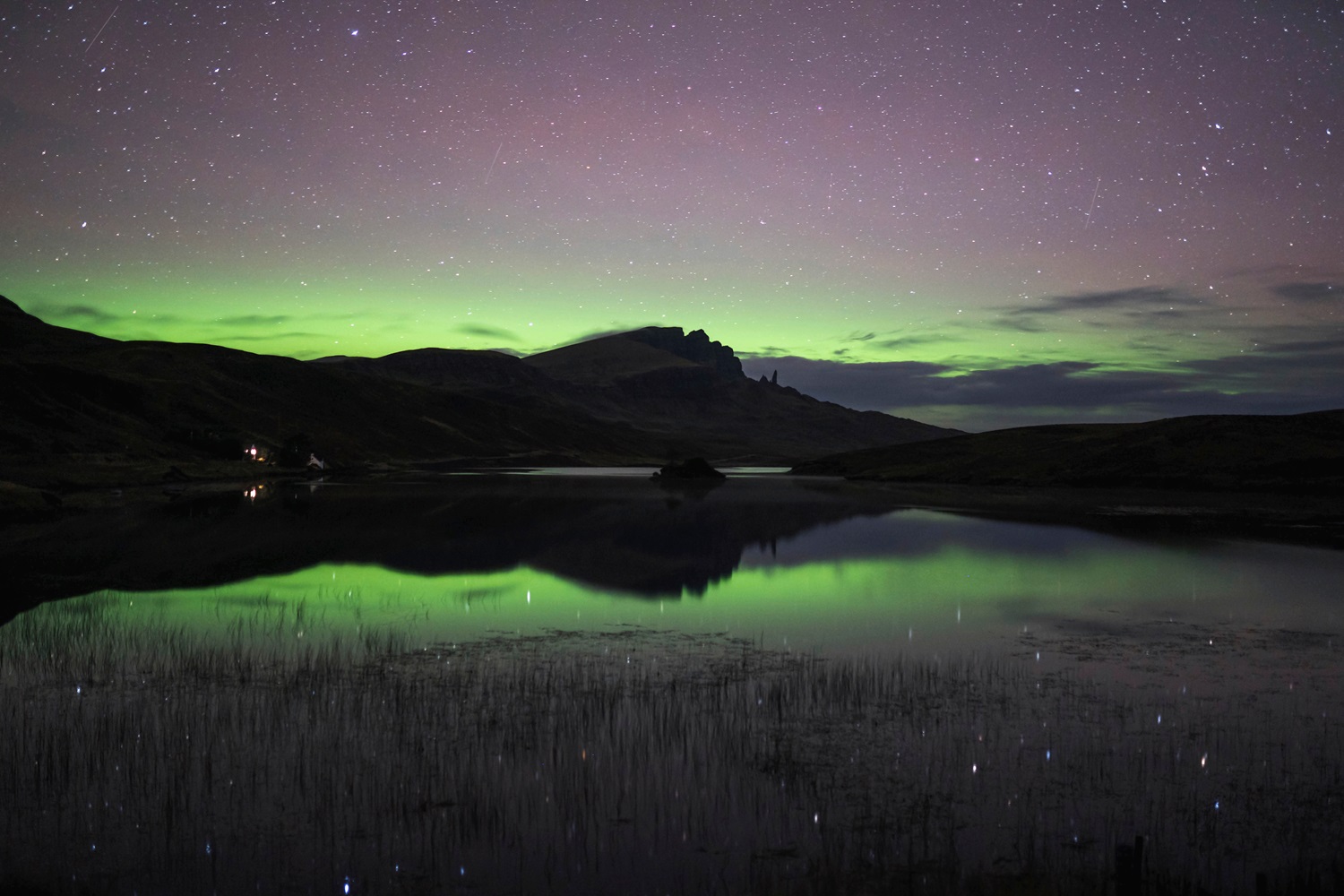
With its wide open spaces and dark skies, Cairngorms National Park is one of the best places to experience the Northern Lights. Aviemore and Rothiemurchus are perfect places to catch the aurora on view from within this stunning National Park. Mountains, lochs, and forests all come together to make for a truly magical place to witness the northern lights.
The beauty of its surroundings — which include a lake, several trails and great hiking paths — draws visitors looking for outdoor activities throughout the year. In winter, there are skiing and snowshoeing options to keep you busy, too. Many local accommodation providers supply aurora alerts, so you never have to miss the show.
Loch Ness, of mythical monster fame, is another prime spot for seeing the Northern Lights. The calm, black waters in the loch provide mirror-like reflection, really capturing the vibrance of the Aurora Borealis as it swirls above. The loch and the hills that form the horizon of the surrounding area offer some stunning panoramas from places such as Fort Augustus and Dores Beach.
Its rich history and legends are other reasons why it is such an interesting place to see the lights. Guests can bundle up for extra warmth and combine the experience with a boat tour or visit the historic Urquhart Castle while stargazing.
Galloway Forest Park, known for being a Dark Sky Park, is a prime location for observing the Northern Lights. The park's remote setting ensures minimal light pollution, providing clear views of the aurora when conditions are right. Visitors can explore the park’s numerous walking trails, offering scenic spots for aurora viewing.
The area is also home to diverse wildlife and stunning landscapes, enhancing the experience. The park's facilities include dedicated dark sky viewing areas and events, making it an excellent choice for families and novice aurora chasers looking to enjoy the celestial display.
The Northern Lights are best viewed in Scotland during the winter, with long nights running from late September until early April. With longer, darker nights offering more optimal conditions for the dancing lights in the sky, the best times to see them come between December and February. The best are clear nights when there is no cloud cover, so you may want to check the weather forecast online to increase your odds.
The auroras are also visible for longer time periods during high solar activity, and you can easily measure this through space weather updates. If you want the best shot of seeing this beautiful display, travel to a remote area away from artificial light during these months.
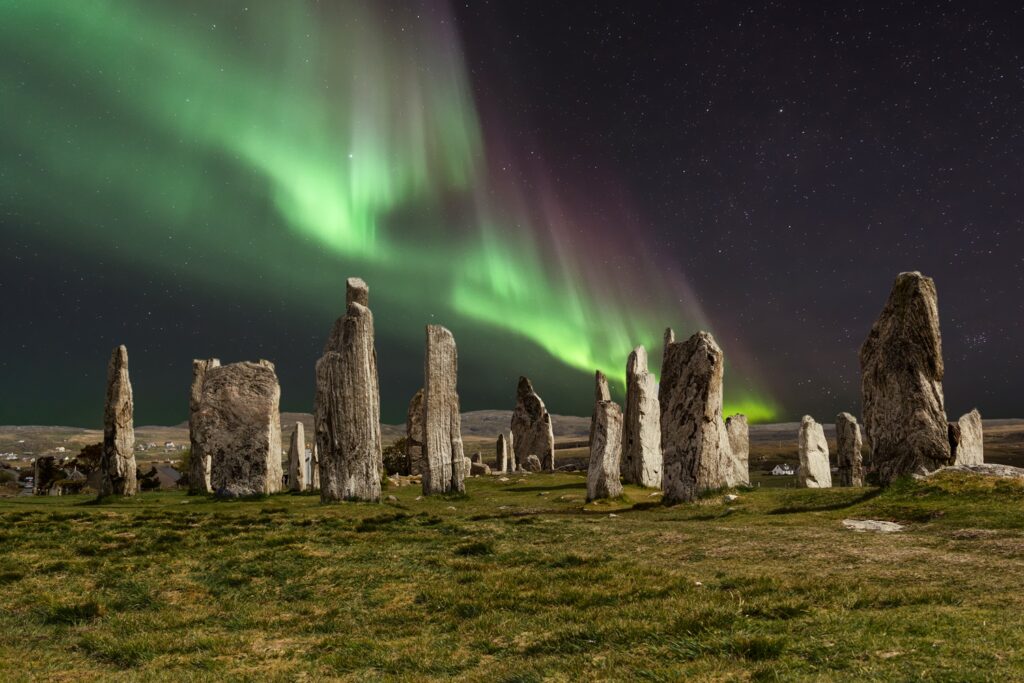

Selecting a campervan for your Scottish Northern Lights sight-seeing trip provides you with the best aspects of both camping and cosy cabin trips. A campervan will make it very simple for you to get away from all of the city lights and increase your chances of seeing the aurora. Campervans offer comfortable bedding, basic cooking amenities and heaters for post-stargazing warmth. And the kicker is that you would wake up to breathtaking Scotland.
Compass Campers gives you a choice of fully equipped campervans so you can experience the Northern Lights not just in comfort but also in style. Travel with comfort and adventure at Compass Campers by contacting us today.
Glasgow is the perfect launch pad for some of Scotland’s most stunning road trips through the country’s scenic rural areas. The Scottish countryside offers travellers majestic mountains, serene lochs, or dramatic coastlines, so the only thing you have to do is decide which ones you want to see first.
These scenic drives from Glasgow are perfect for adventurous couples, families, or groups of friends who love the open road. To get the ball rolling on planning your next trip, we’ve put together six must-visit routes that are best for seeing Scotland’s natural beauty up close.
Just a short drive northwest of Glasgow, Loch Lomond and The Trossachs National Park is one of the most convenient and scenic day trips from Glasgow by car. Again, taking the A82, you’ll wind through rolling hills of the countryside, passing along the banks of Loch Lomond, which is actually Scotland’s largest freshwater loch.
Along the way, you'll find charming villages like Luss, where you can stop for a bite and a bevvie or simply enjoy a peaceful stroll by the water. Nature lovers can take advantage of walking trails, picnic spots, or boat trips out onto the water. It’s the ideal getaway for families and friends looking to escape the city and relax while being surrounded by fresh air.
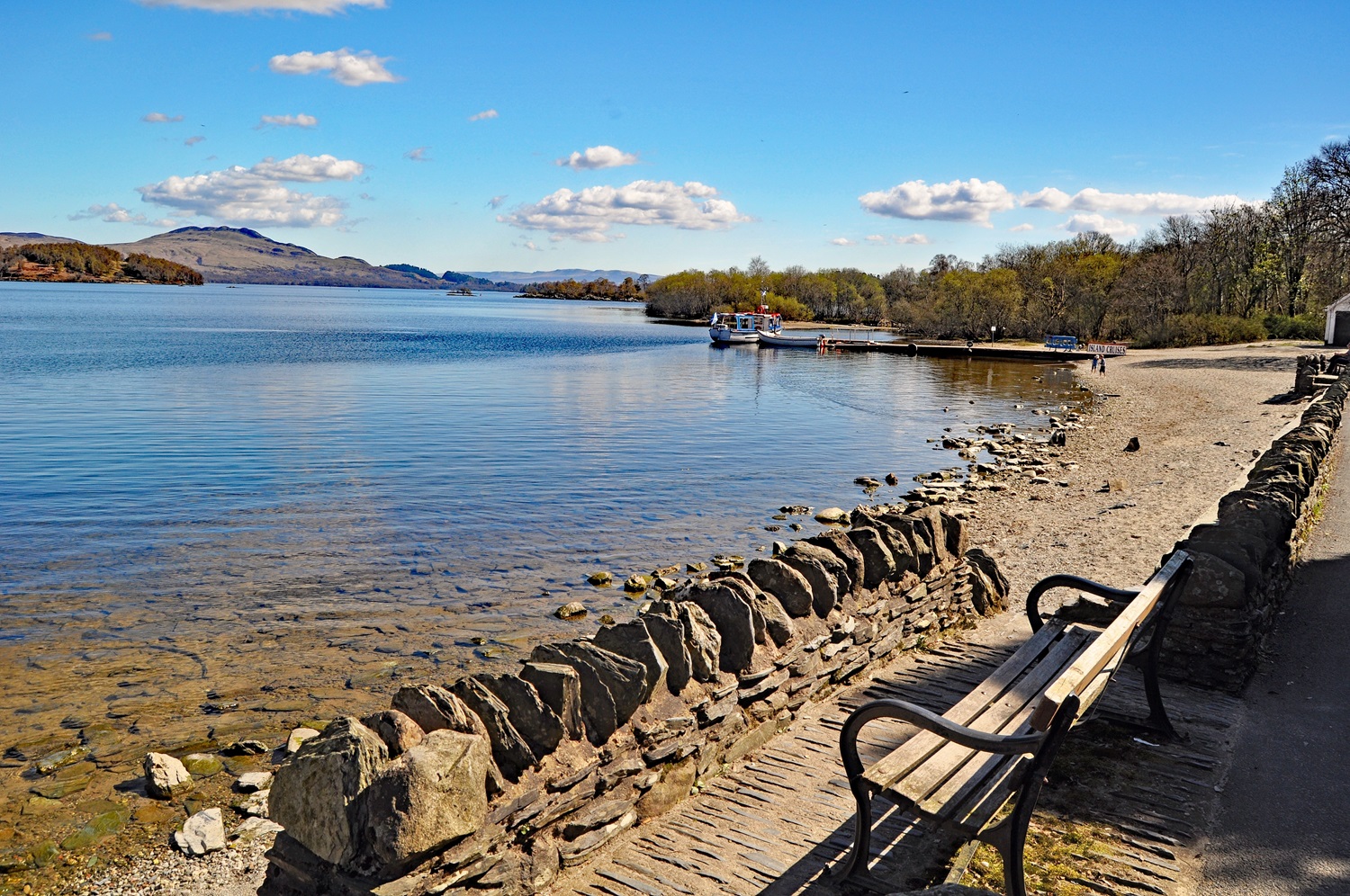
If you're craving a road trip where you can feast your eyes on scenes that could be out of a Jane Austin novel and give you a sense of wild adventure, the Isle of Skye should be at the top of your list. This longer journey is around five hours from Glasgow, but it’s worth every minute. The route takes you through the stunning valleys of Glencoe, alongside Ben Nevis near Fort William, and over the Skye Bridge into the almost mystical world of Skye.
As you come across fairy pools, rugged cliffs, and mediaeval castles, it’s easy to see why Skye is a place that’s served as the inspiration behind Scottish fairy tales for centuries. The destination aside, these trips from Glasgow are a dream for explorers and photography enthusiasts alike. Seasoned road trippers recommend making this an overnight trip to really appreciate it.

For those seeking a taste of Scotland’s west coast, a drive to the picturesque town of Oban is a fantastic option. Heading out on the A82, then transitioning onto the A85, you’ll pass through spectacular scenery, including Loch Awe and Kilchurn Castle, a favourite for photographers. Oban, known as the "Gateway to the Isles," is a vibrant coastal town with plenty to see and do. Feast on fresh seafood by the harbour or catch a ferry to the nearby Isles of Mull or Iona.
Perfect for a relaxed day trip, this route is excellent for couples and friends who want to blend coastal beauty with small-town charm.

If you're in the mood for coastal scenery, the best thing to do is head southwest towards the Ayrshire Coast. This relaxed drive along the A77 takes you past stunning seaside views and charming towns. One highlight is Culzean Castle, a grand cliff top fortress surrounded by beautiful gardens.
Further along, the town of Troon offers a sandy beach and famous golf courses, while Largs invites you to hop on a ferry to the Isle of Cumbrae. This drive is ideal for families looking for a mix of history, sea views, and fun outdoor activities. You can easily make this a day trip, packing in beach strolls and castle visits.

No Scottish road trip list would be complete without the breathtaking drive through Glencoe. This route is a visual feast. Known for its mountains, dramatic peaks, and deep valleys that seem to stretch on forever, it’s an absolute haven for nature lovers. The journey along the A82 is just two hours from Glasgow but feels like a world away. Glencoe is steeped in history, famous for the tragic Glencoe Massacre, and is now a favourite spot for hikers and nature lovers.
Further along, you'll reach Fort William, where adventurous travellers can start their ascent of Ben Nevis, the UK's highest peak. For families and friends eager to explore Scotland’s rugged terrain, this is one of the ultimate places to drive from Glasgow.

For a trip filled with mythical wonder and Highland charm, head north on the A82 towards Loch Ness. The drive takes around 3.5 hours, and while it's a bit longer than your average day trip from Glasgow by car, the scenery along the way is simply stunning. After passing through Fort William, the road hugs the shore of Loch Ness, where you can search for the elusive Nessie, the legendary Loch Ness Monster.
The trip culminates in Inverness, the capital of the Highlands, where you can explore the town’s historic sites or simply relax by the River Ness. This trip is perfect for those keen to learn more about Scotland’s rich history and folklore while enjoying time on the road.

Now that you’re, hopefully, inspired by these scenic routes, it’s time to plan your trip. The trip will only be made that much more special by renting a motorhome with Compass Campers. A campervan gives you ultimate freedom, letting you linger at your favourite spots, stop for a spontaneous hike, or even spend the night in some of Scotland’s most beautiful locations.
Plus, the bit of extra height means you’ll see so much more. With Compass Campers, you can turn any road trip into an unforgettable adventure with all the comforts of home on wheels.